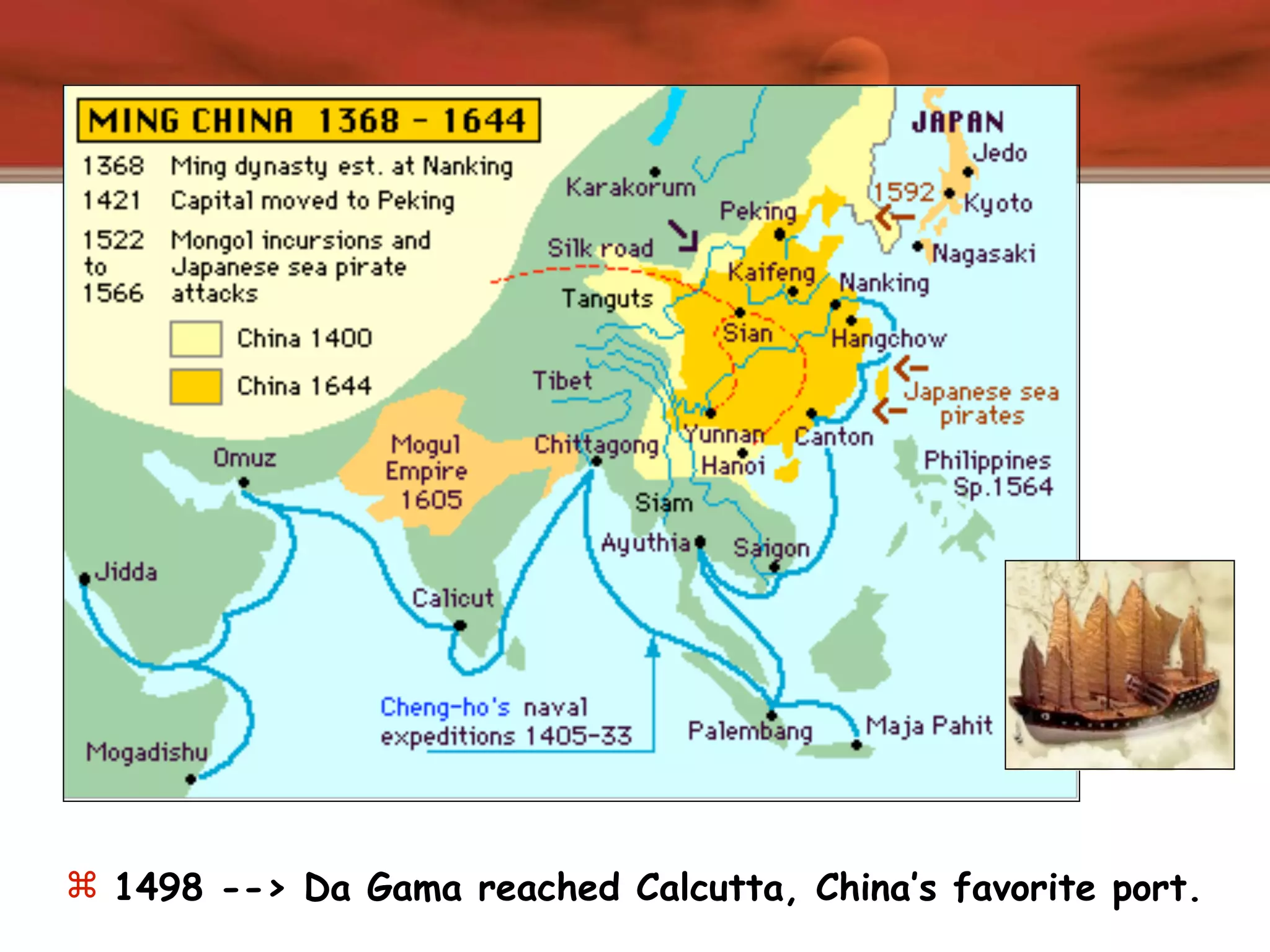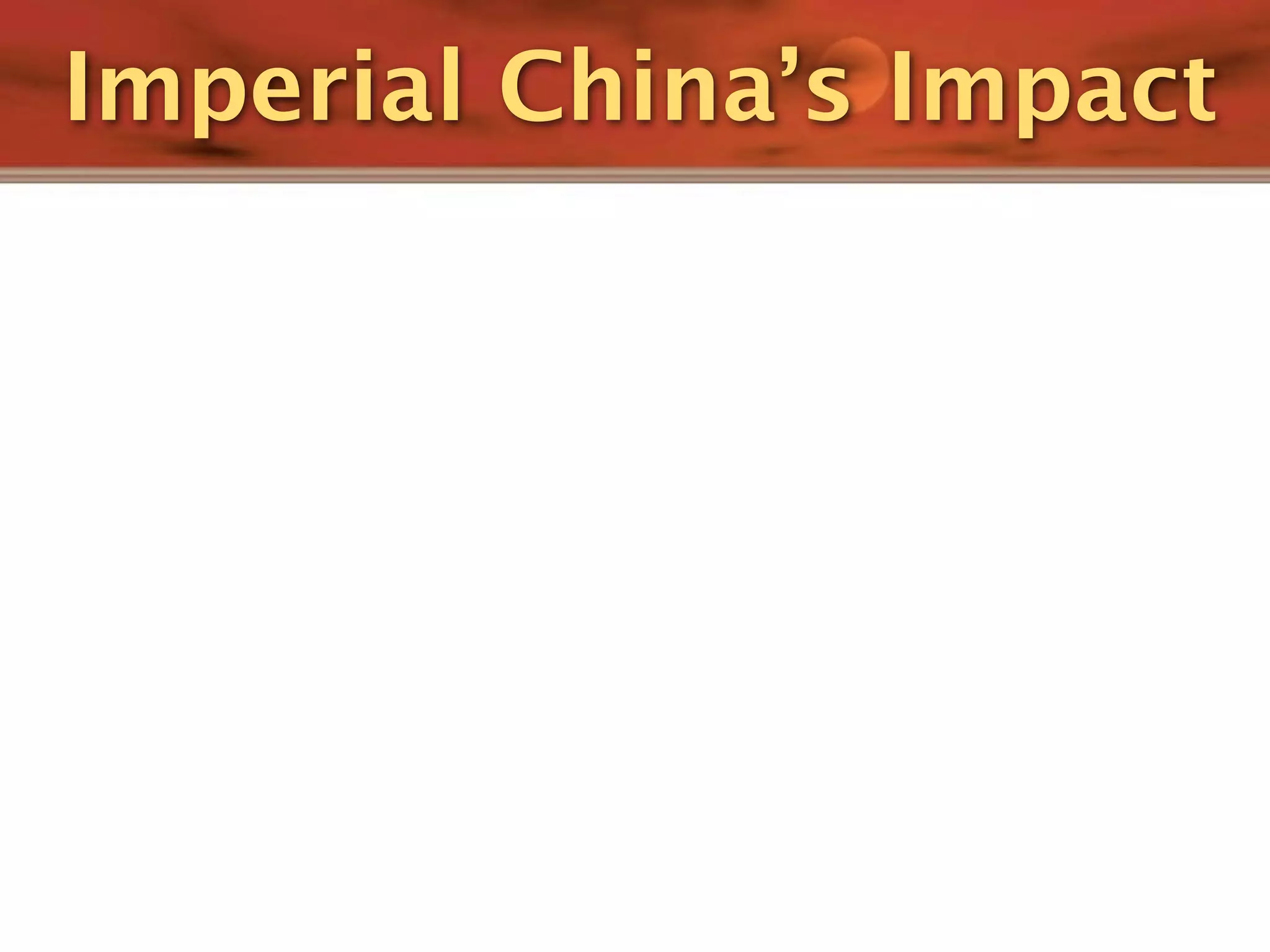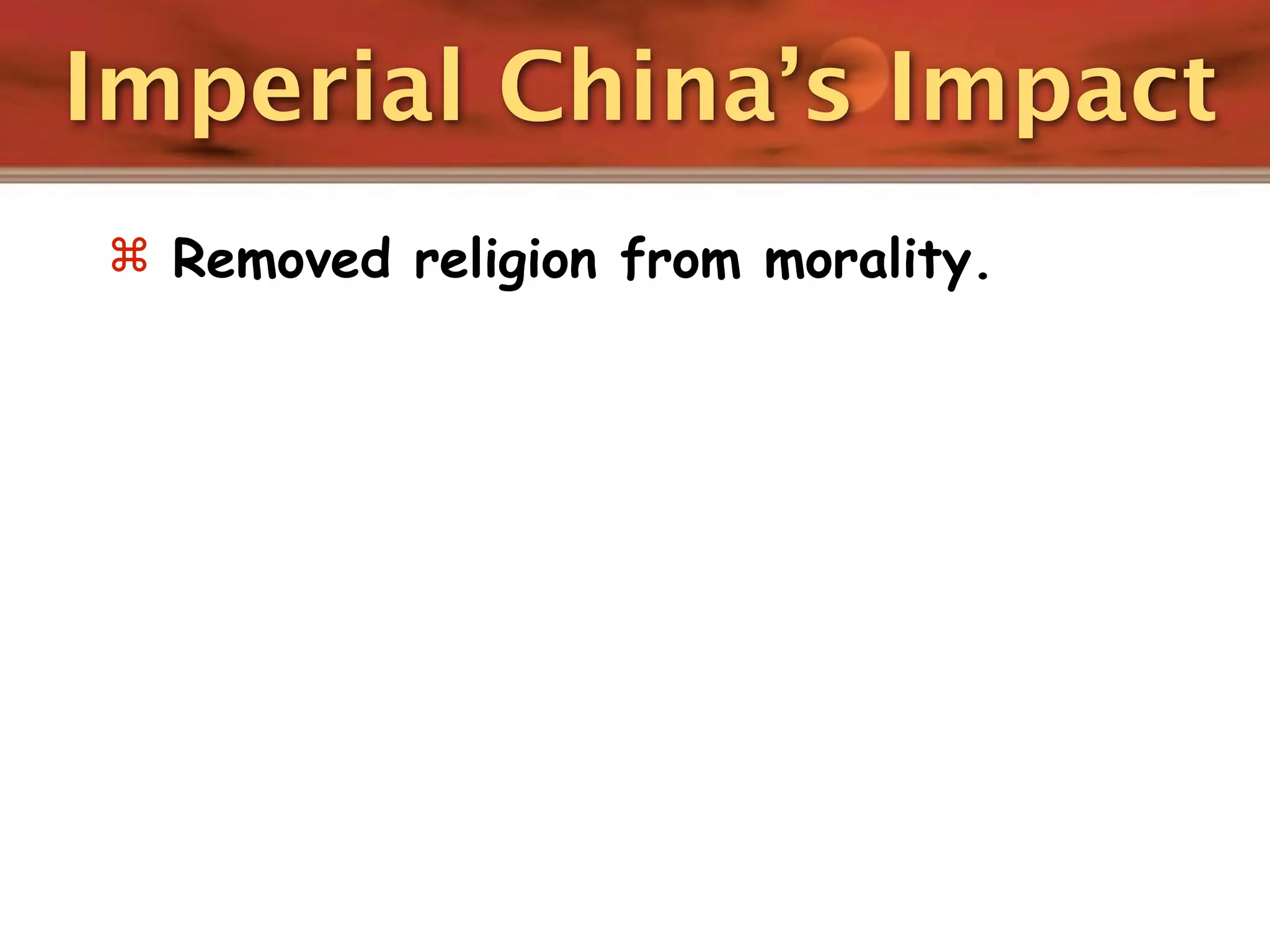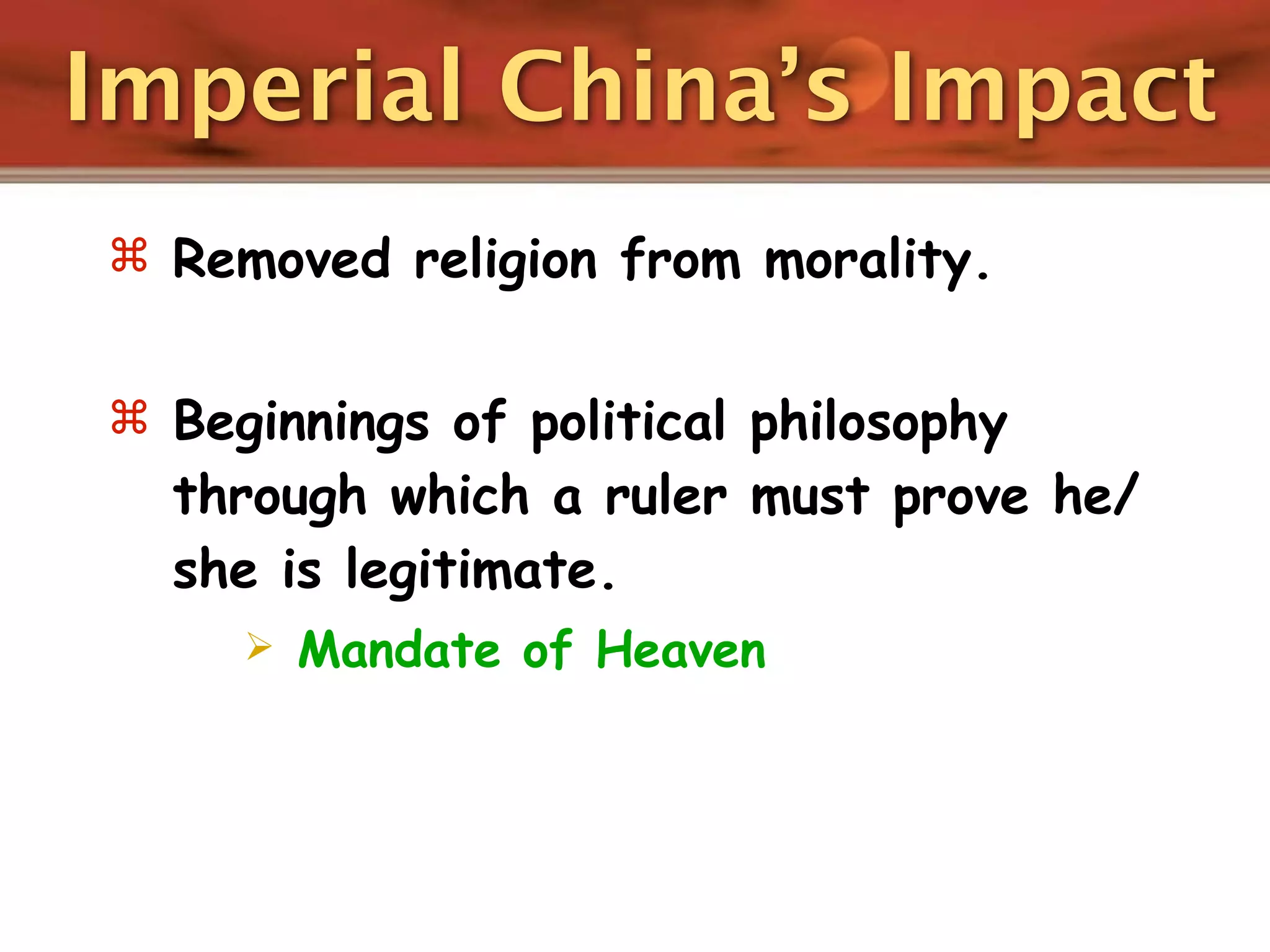The document provides information on imperial dynasties in China from Qin to Ming. It discusses the establishment of China's first empire under the Qin Dynasty in the 3rd century BCE. Key figures mentioned include Shi Huangdi, the first emperor, and his terra cotta army. Subsequent dynasties covered include the Han, Sui, Tang, Song, Yuan, and Ming, noting important developments in each like the civil service system under Han, construction of the Grand Canal under Sui, and printing technologies under Tang.

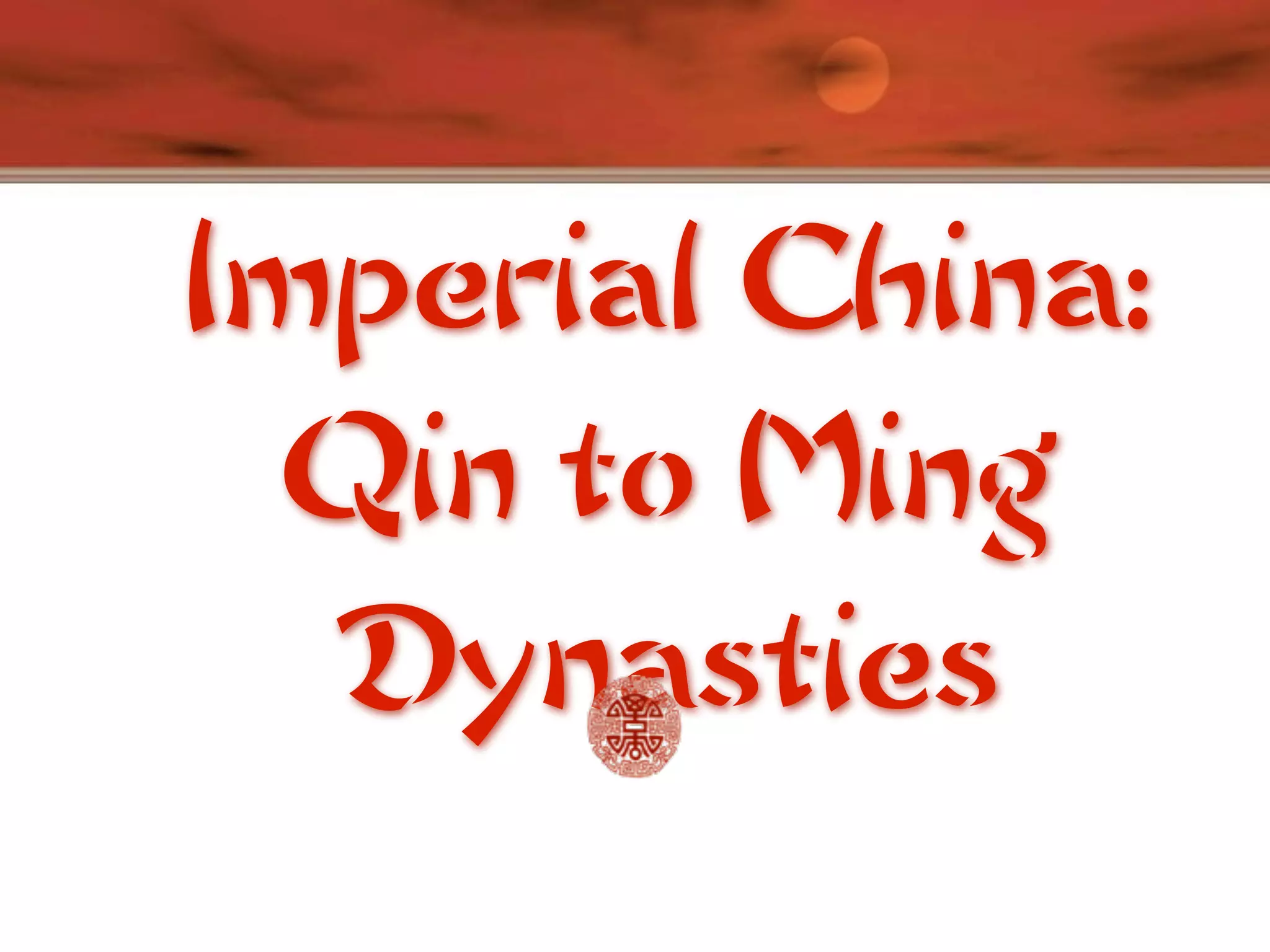

![Qin [Ch’in] Dynasty,](https://image.slidesharecdn.com/qintoming-111014231542-phpapp02/75/Qinto-ming-4-2048.jpg)
![Qin [Ch’in] Dynasty,
Established China’s first empire ](https://image.slidesharecdn.com/qintoming-111014231542-phpapp02/75/Qinto-ming-5-2048.jpg)
![Qin [Ch’in] Dynasty,
Established China’s first empire
Shi Huangdi (221-206 B.C.E)](https://image.slidesharecdn.com/qintoming-111014231542-phpapp02/75/Qinto-ming-6-2048.jpg)
![Qin [Ch’in] Dynasty,
Established China’s first empire
Shi Huangdi (221-206 B.C.E)
Legalist rule ](https://image.slidesharecdn.com/qintoming-111014231542-phpapp02/75/Qinto-ming-7-2048.jpg)
![Qin [Ch’in] Dynasty,
Established China’s first empire
Shi Huangdi (221-206 B.C.E)
Legalist rule
Bureaucratic administration](https://image.slidesharecdn.com/qintoming-111014231542-phpapp02/75/Qinto-ming-8-2048.jpg)
![Qin [Ch’in] Dynasty,
Established China’s first empire
Shi Huangdi (221-206 B.C.E)
Legalist rule
Bureaucratic administration
Centralized control](https://image.slidesharecdn.com/qintoming-111014231542-phpapp02/75/Qinto-ming-9-2048.jpg)
![Qin [Ch’in] Dynasty,
Established China’s first empire
Shi Huangdi (221-206 B.C.E)
Legalist rule
Bureaucratic administration
Centralized control
Military expansion](https://image.slidesharecdn.com/qintoming-111014231542-phpapp02/75/Qinto-ming-10-2048.jpg)
![Qin [Ch’in] Dynasty,
Established China’s first empire
Shi Huangdi (221-206 B.C.E)
Legalist rule
Bureaucratic administration
Centralized control
Military expansion
Book burnings targeted
Confucianists](https://image.slidesharecdn.com/qintoming-111014231542-phpapp02/75/Qinto-ming-11-2048.jpg)
![Qin [Ch’in] Dynasty,
Established China’s first empire
Shi Huangdi (221-206 B.C.E)
Legalist rule
Bureaucratic administration
Centralized control
Military expansion
Book burnings targeted
Confucianists
Buried protestors alive!](https://image.slidesharecdn.com/qintoming-111014231542-phpapp02/75/Qinto-ming-12-2048.jpg)
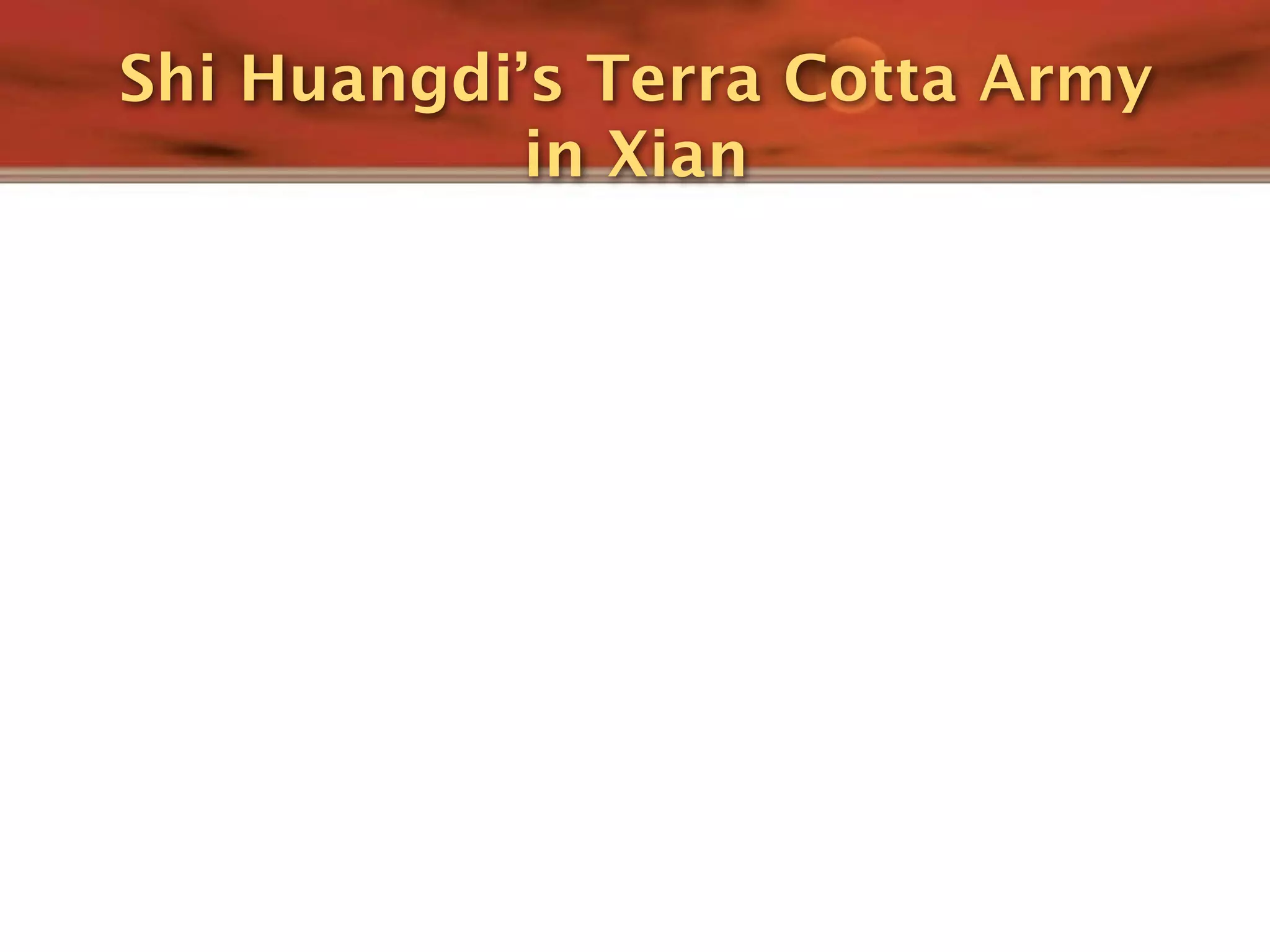
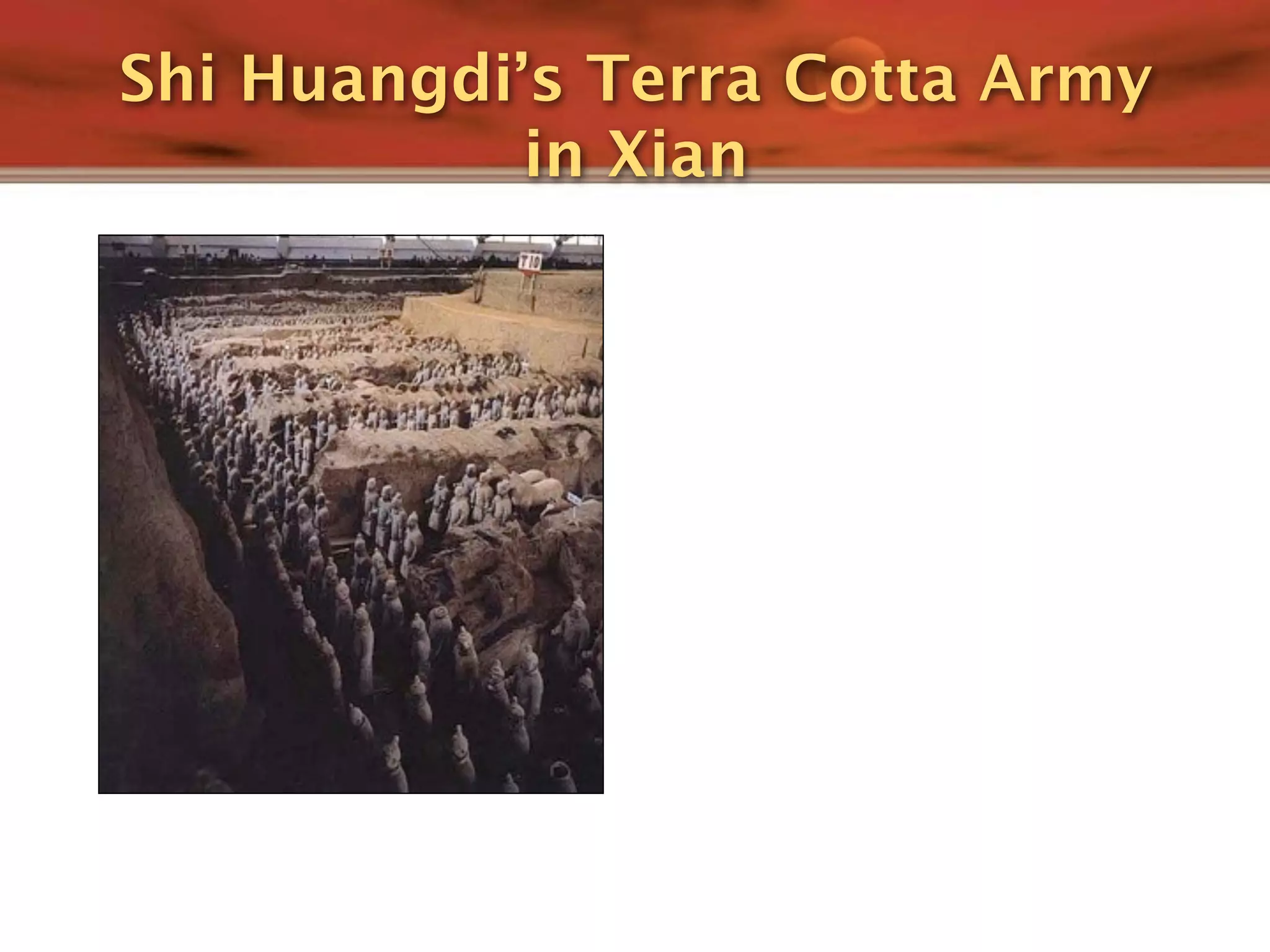
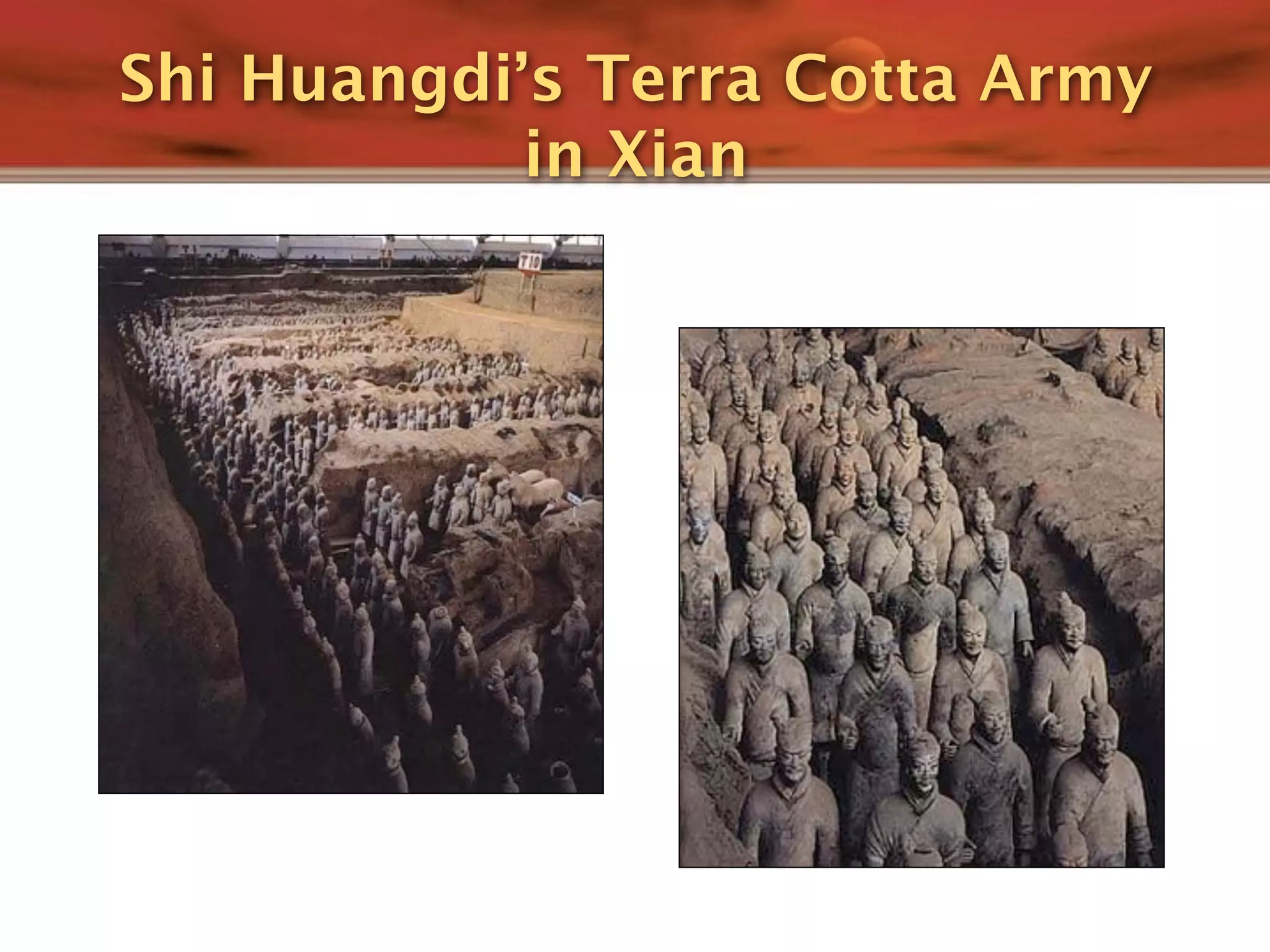
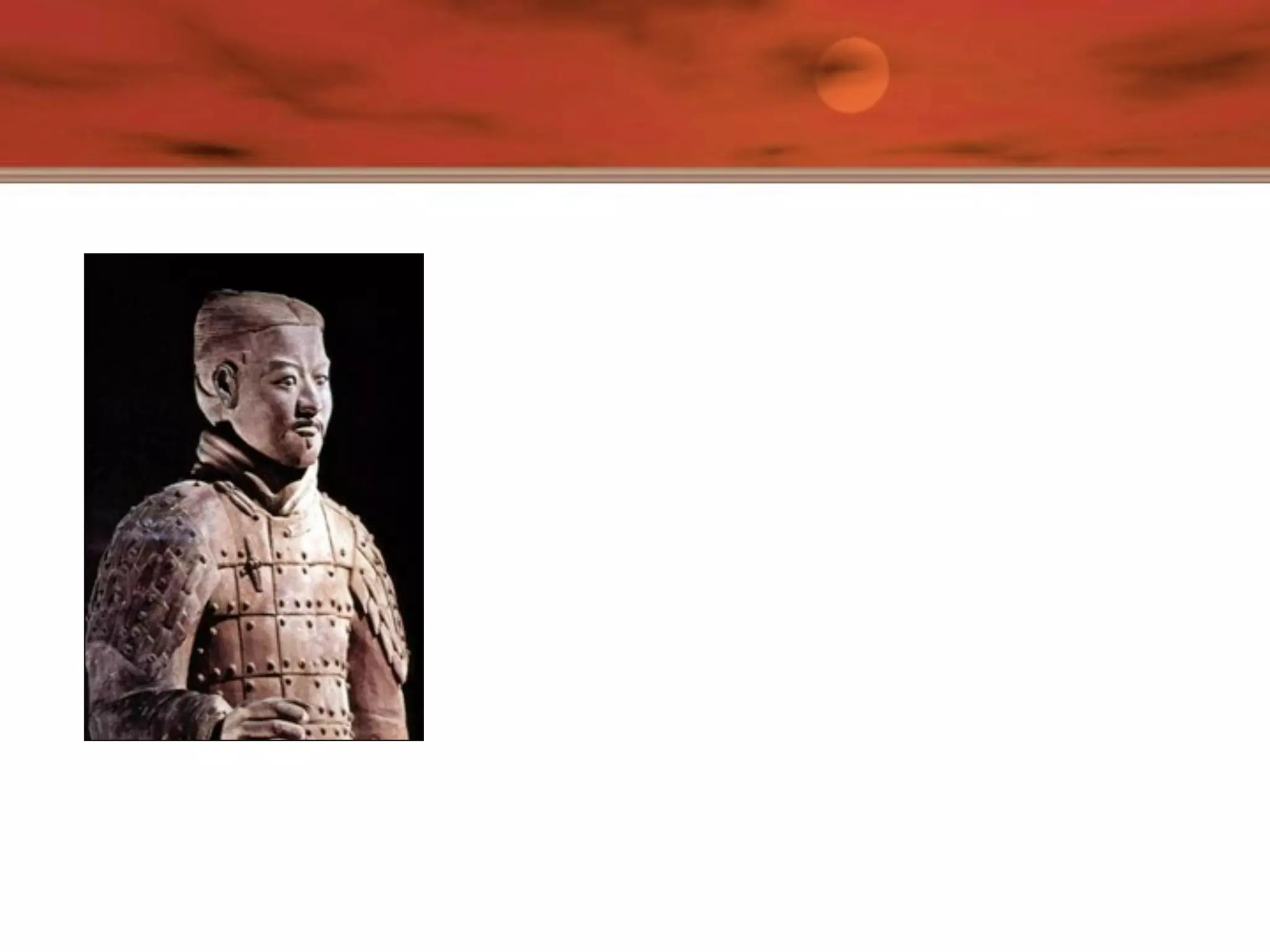
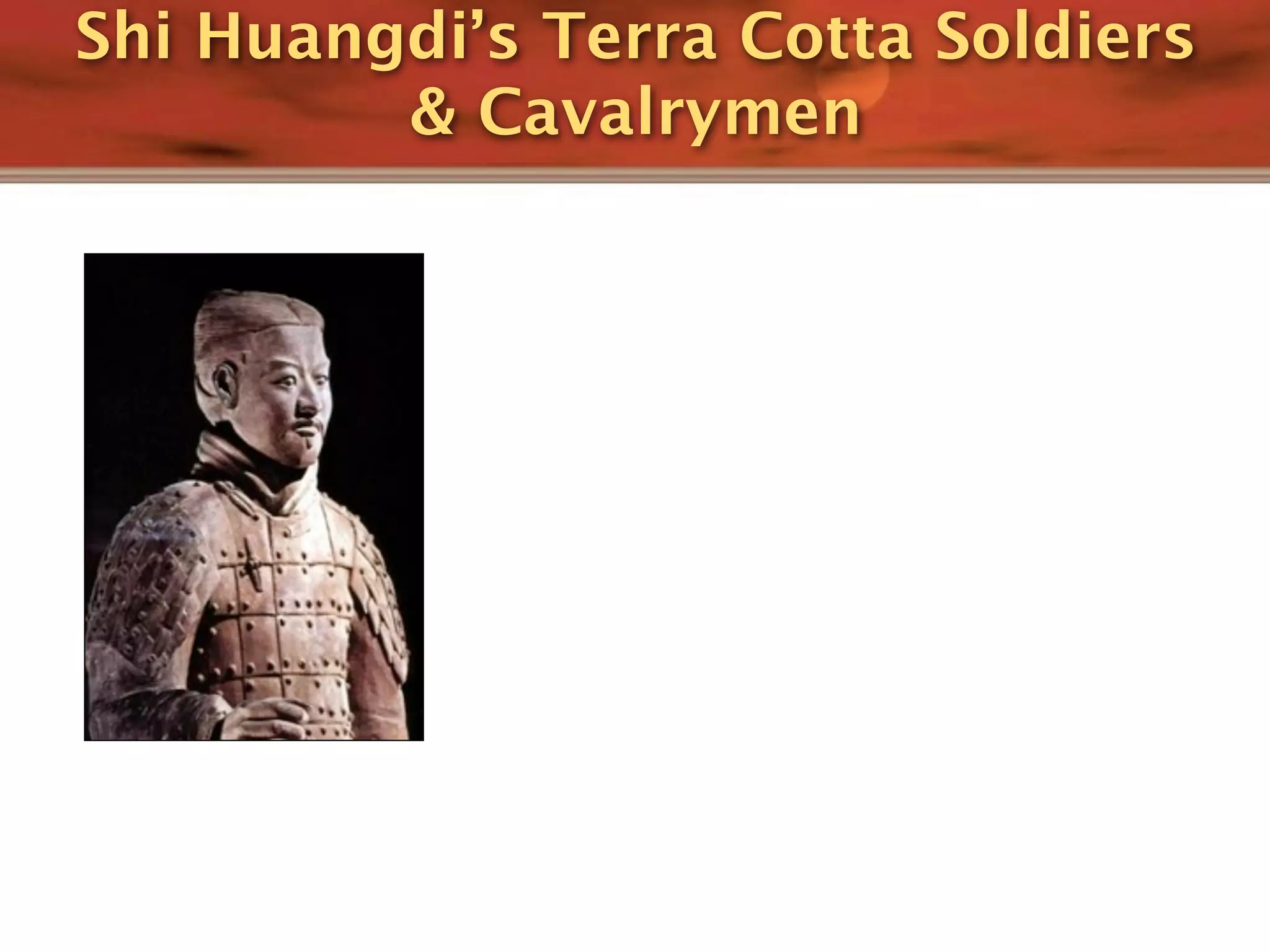
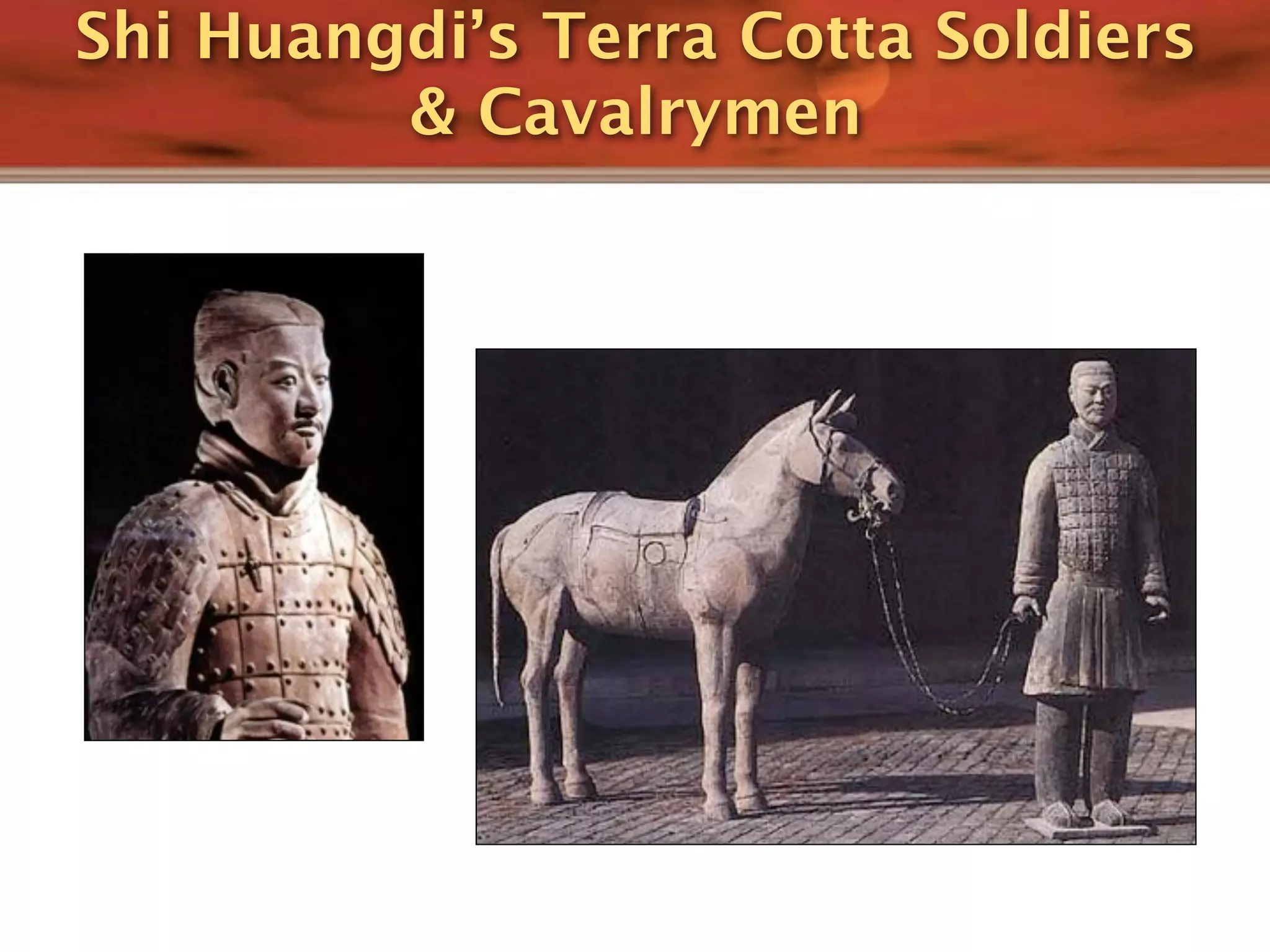
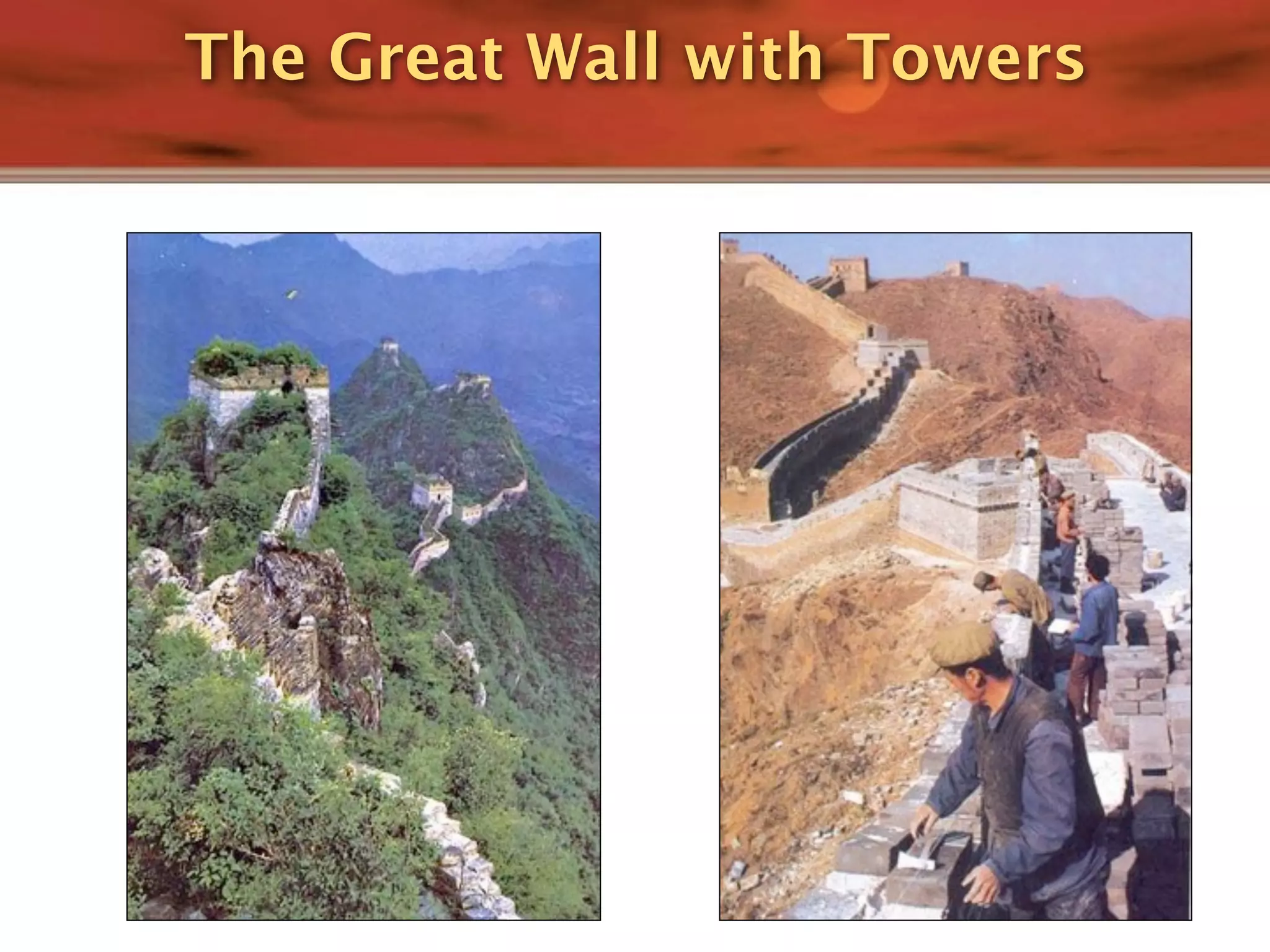

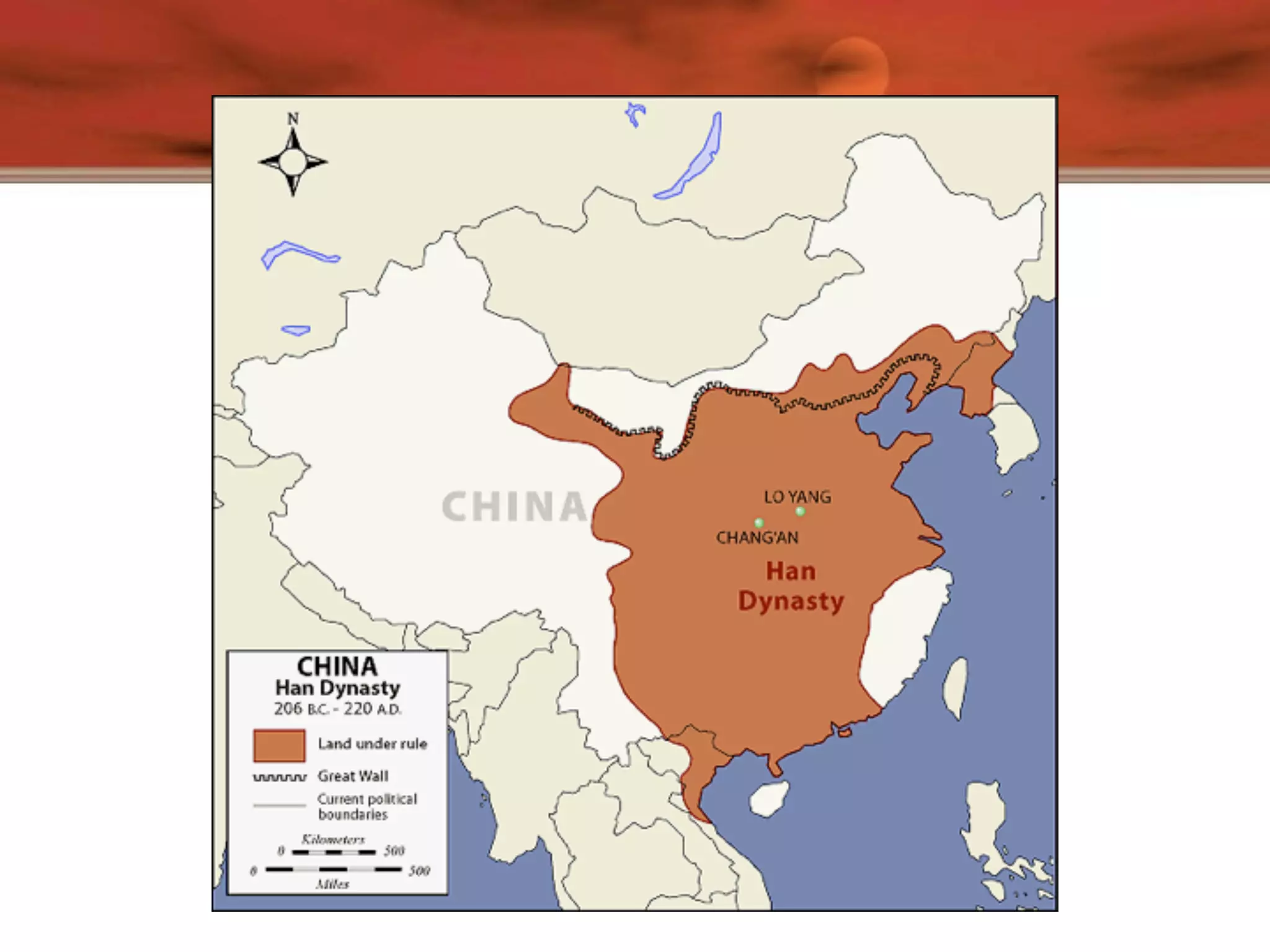

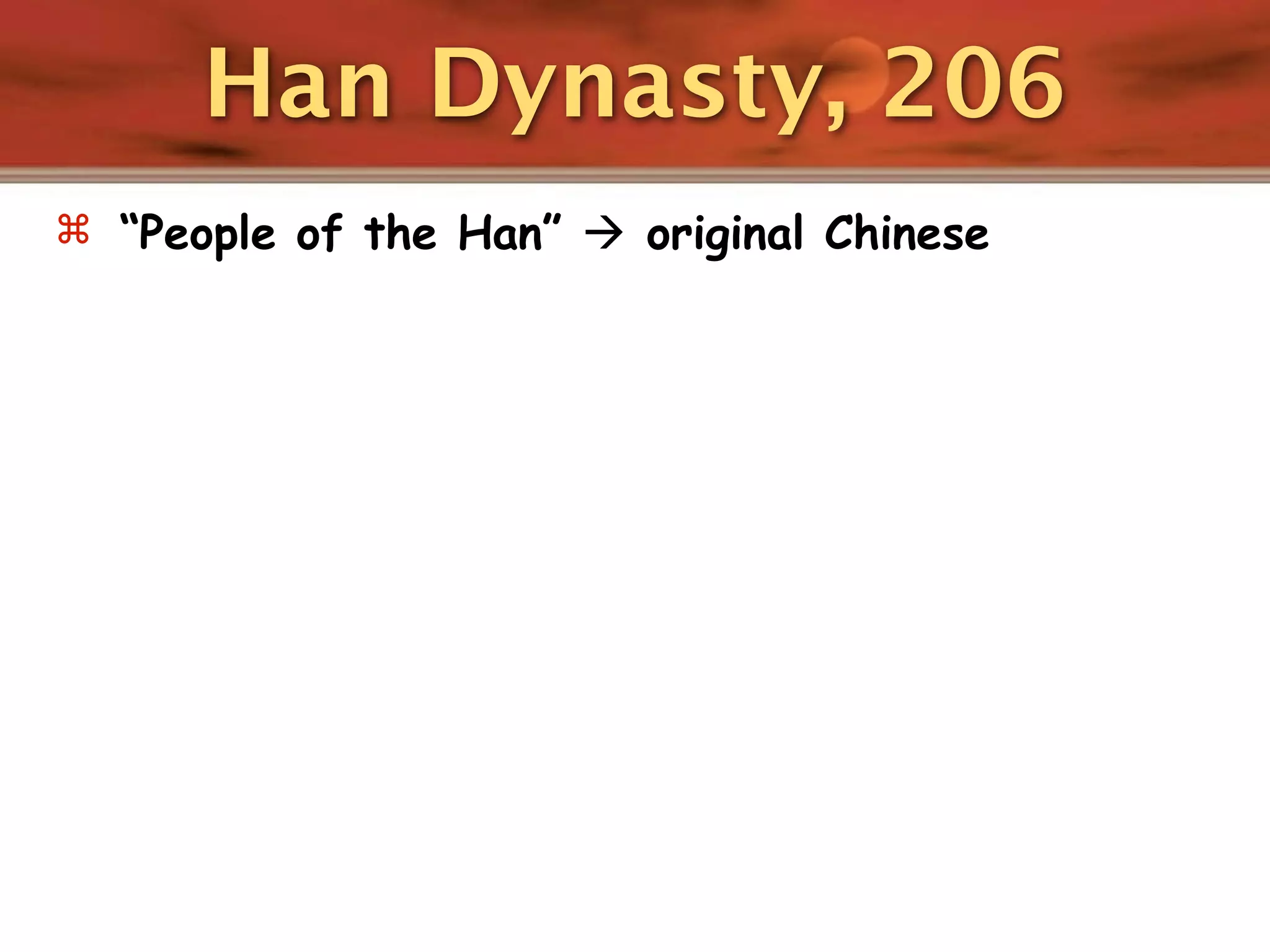
![Han Dynasty, 206
“People of the Han” original Chinese
Paper invented [105 B.C.E.] ](https://image.slidesharecdn.com/qintoming-111014231542-phpapp02/75/Qinto-ming-24-2048.jpg)
![Han Dynasty, 206
“People of the Han” original Chinese
Paper invented [105 B.C.E.]
Silk Road trade develops; improves life for many](https://image.slidesharecdn.com/qintoming-111014231542-phpapp02/75/Qinto-ming-25-2048.jpg)
![Han Dynasty, 206
“People of the Han” original Chinese
Paper invented [105 B.C.E.]
Silk Road trade develops; improves life for many
Buddhism introduced into China](https://image.slidesharecdn.com/qintoming-111014231542-phpapp02/75/Qinto-ming-26-2048.jpg)
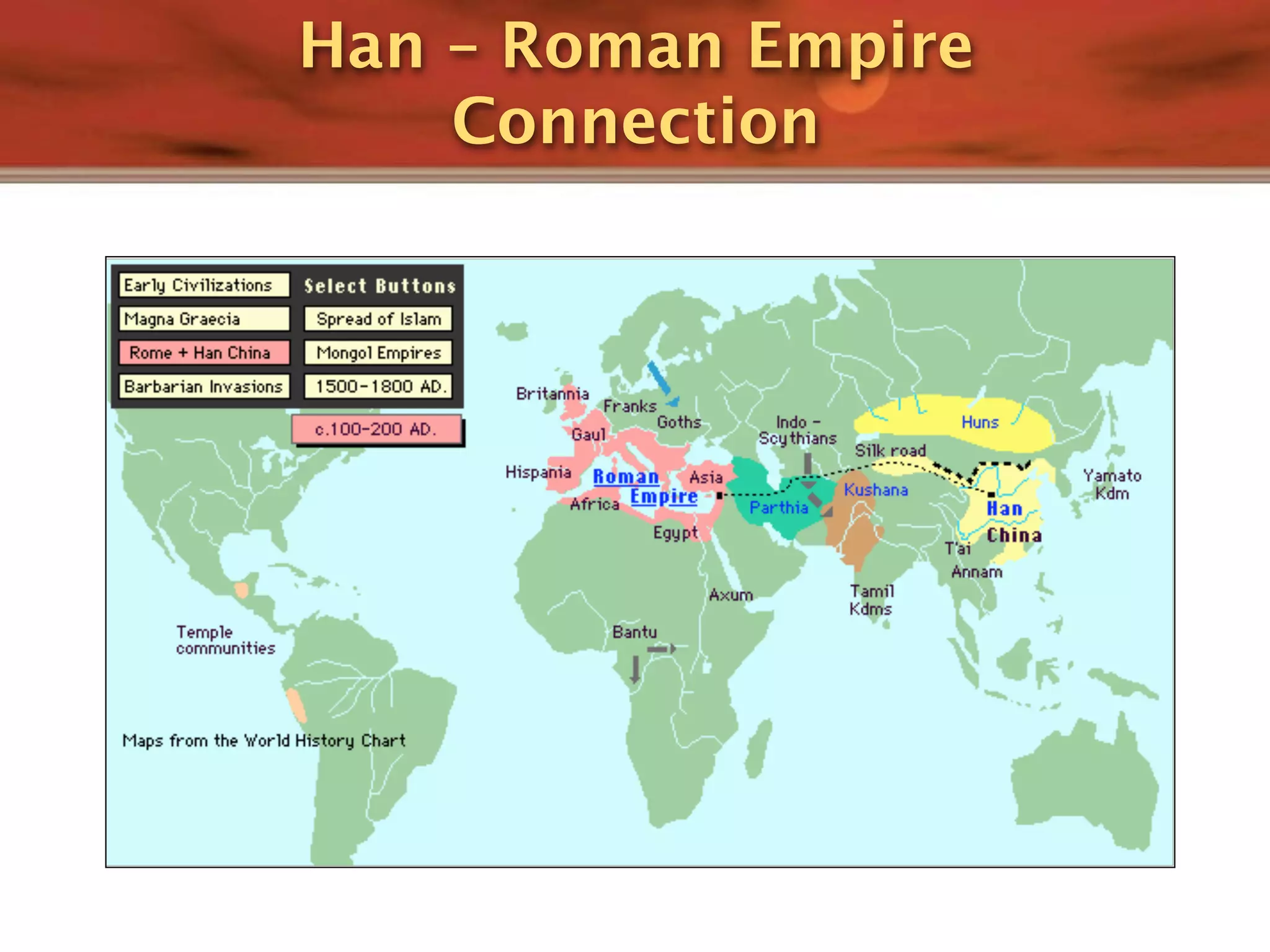

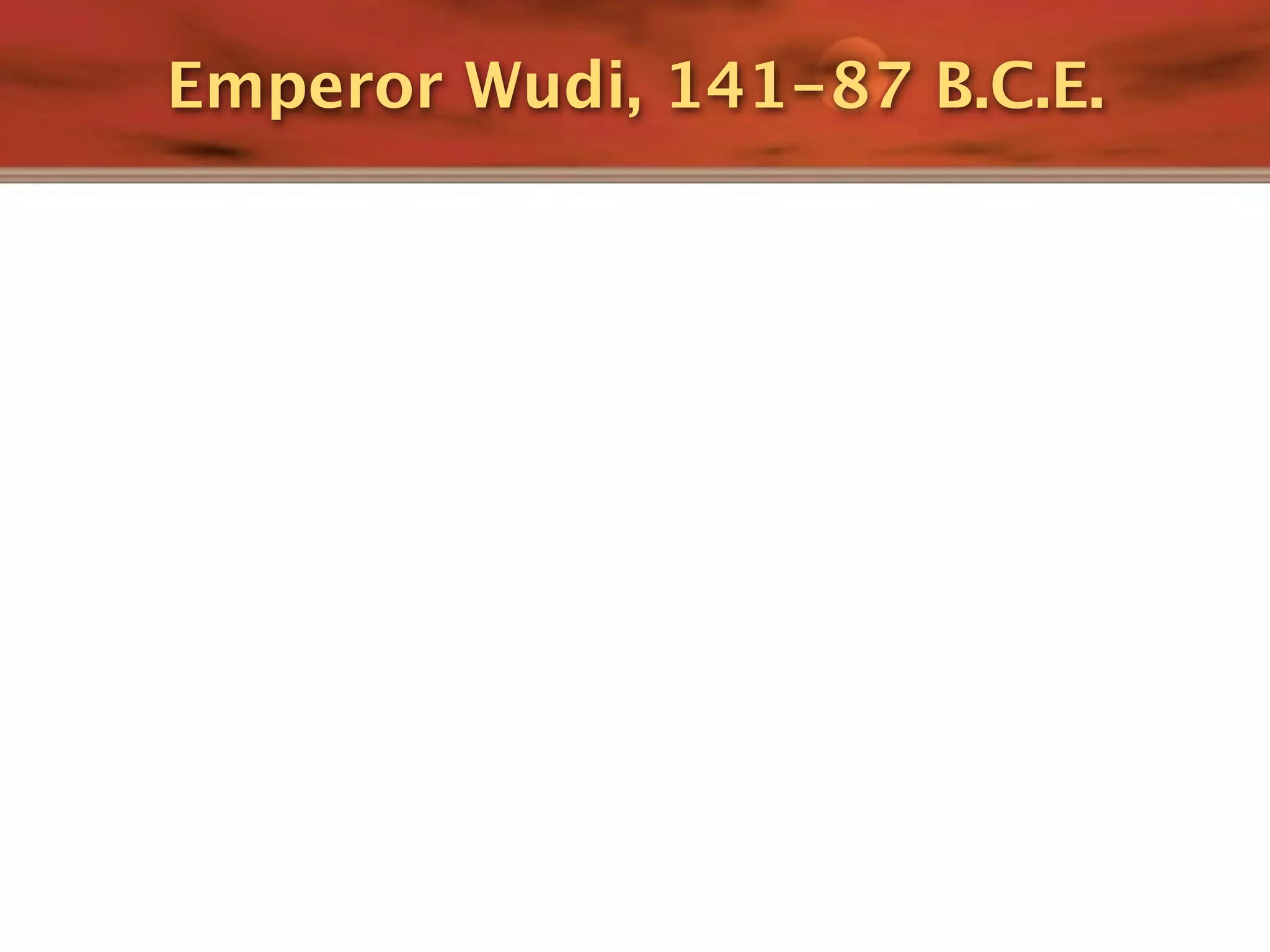

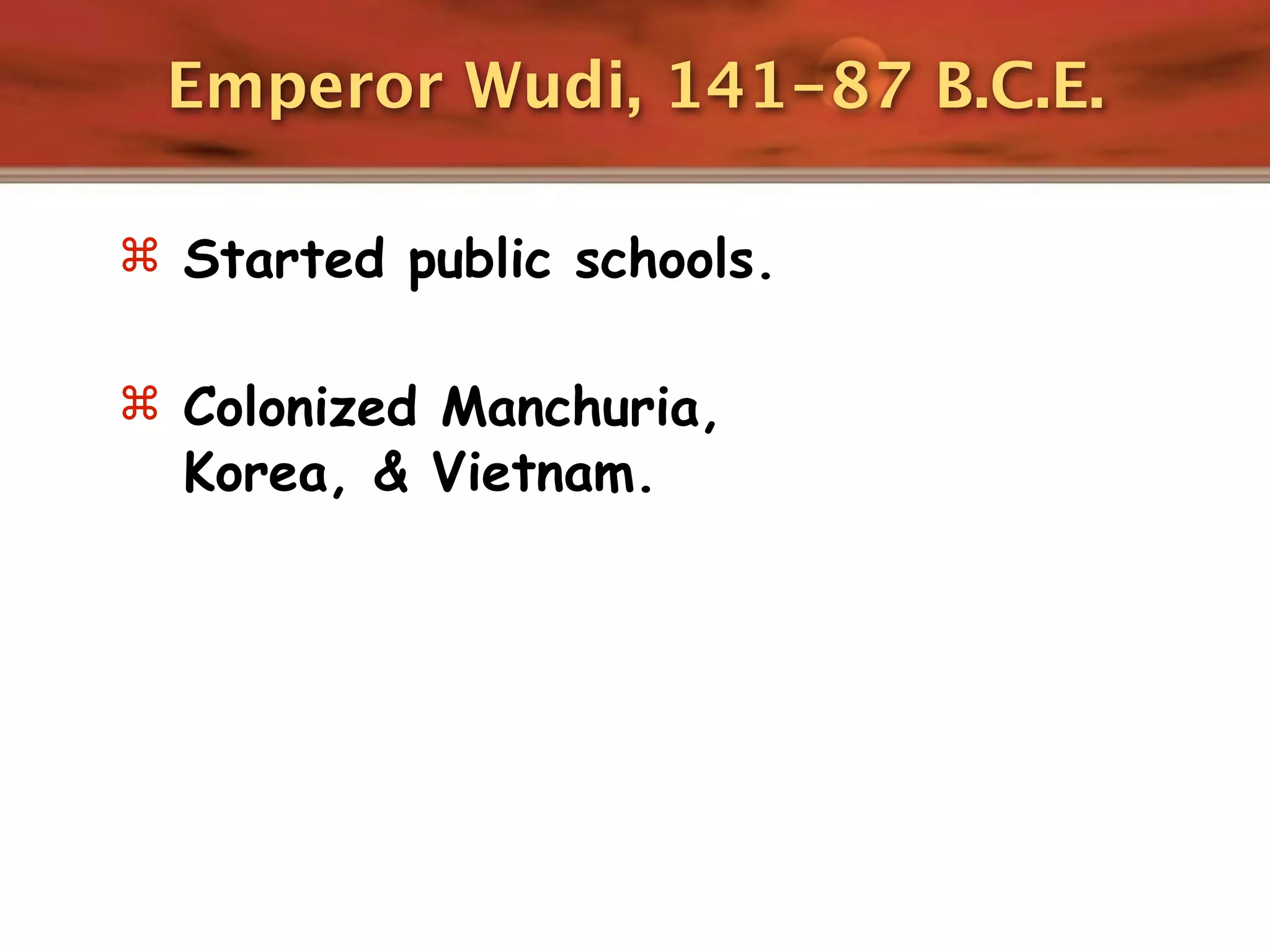
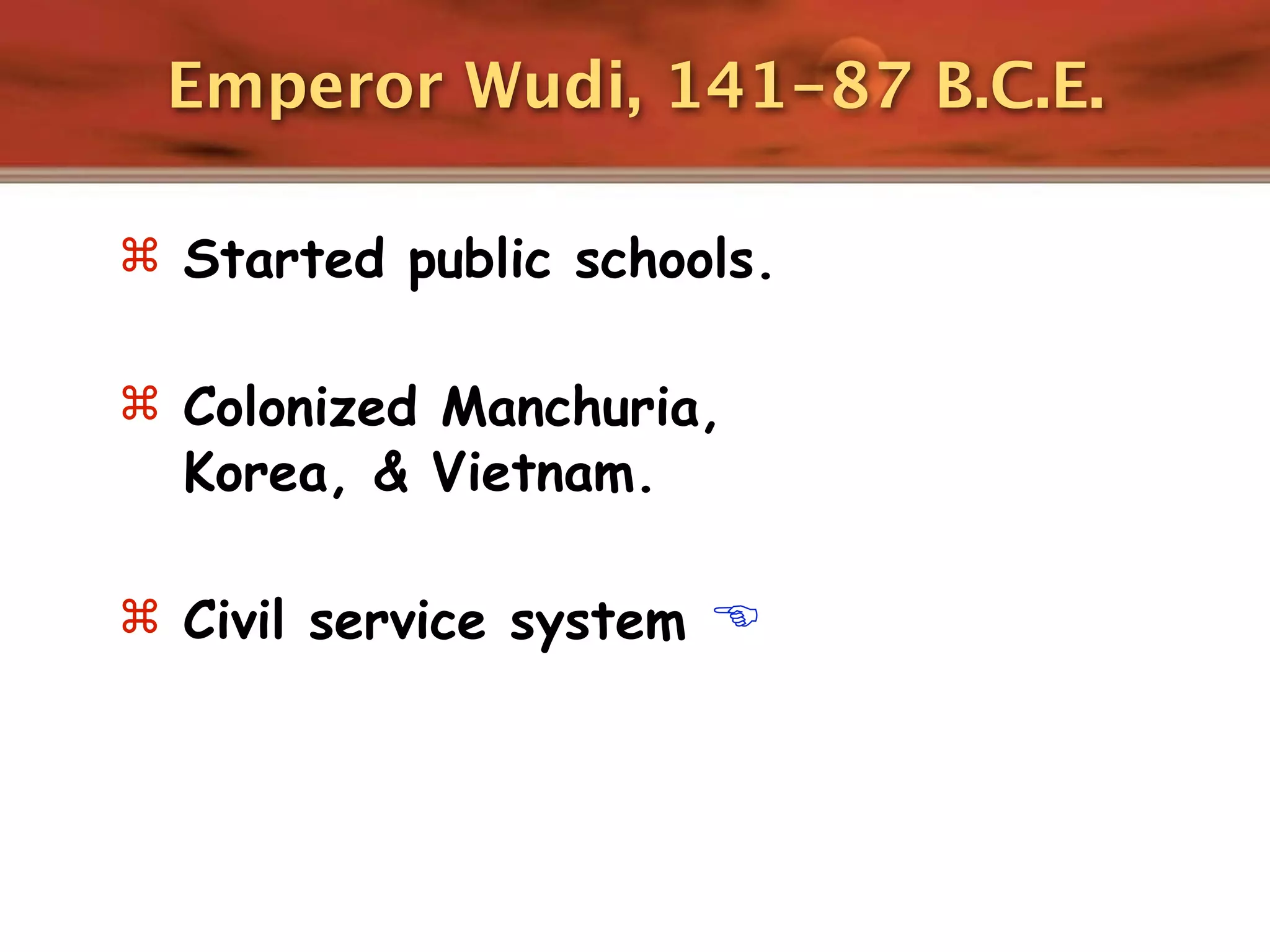

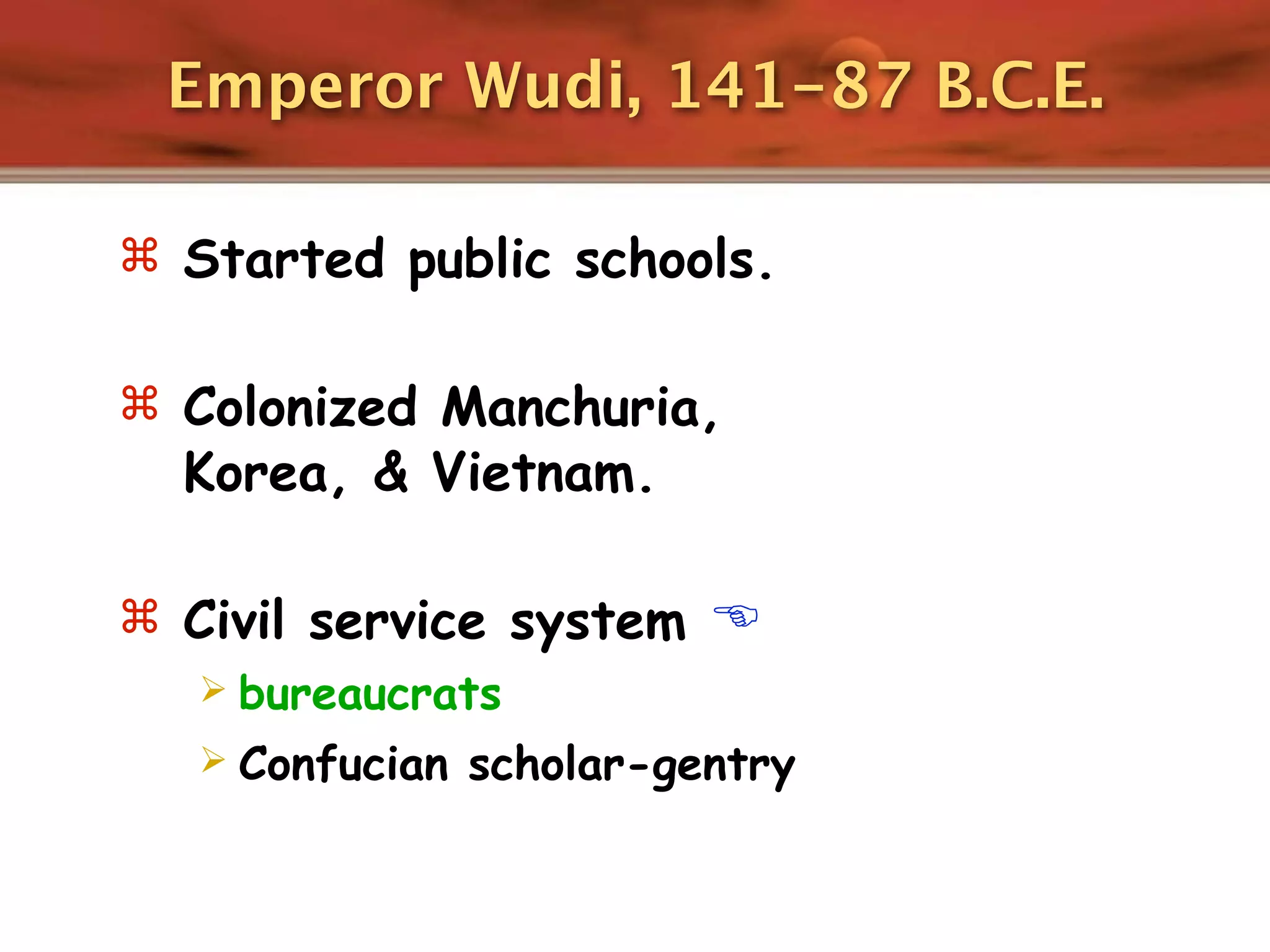

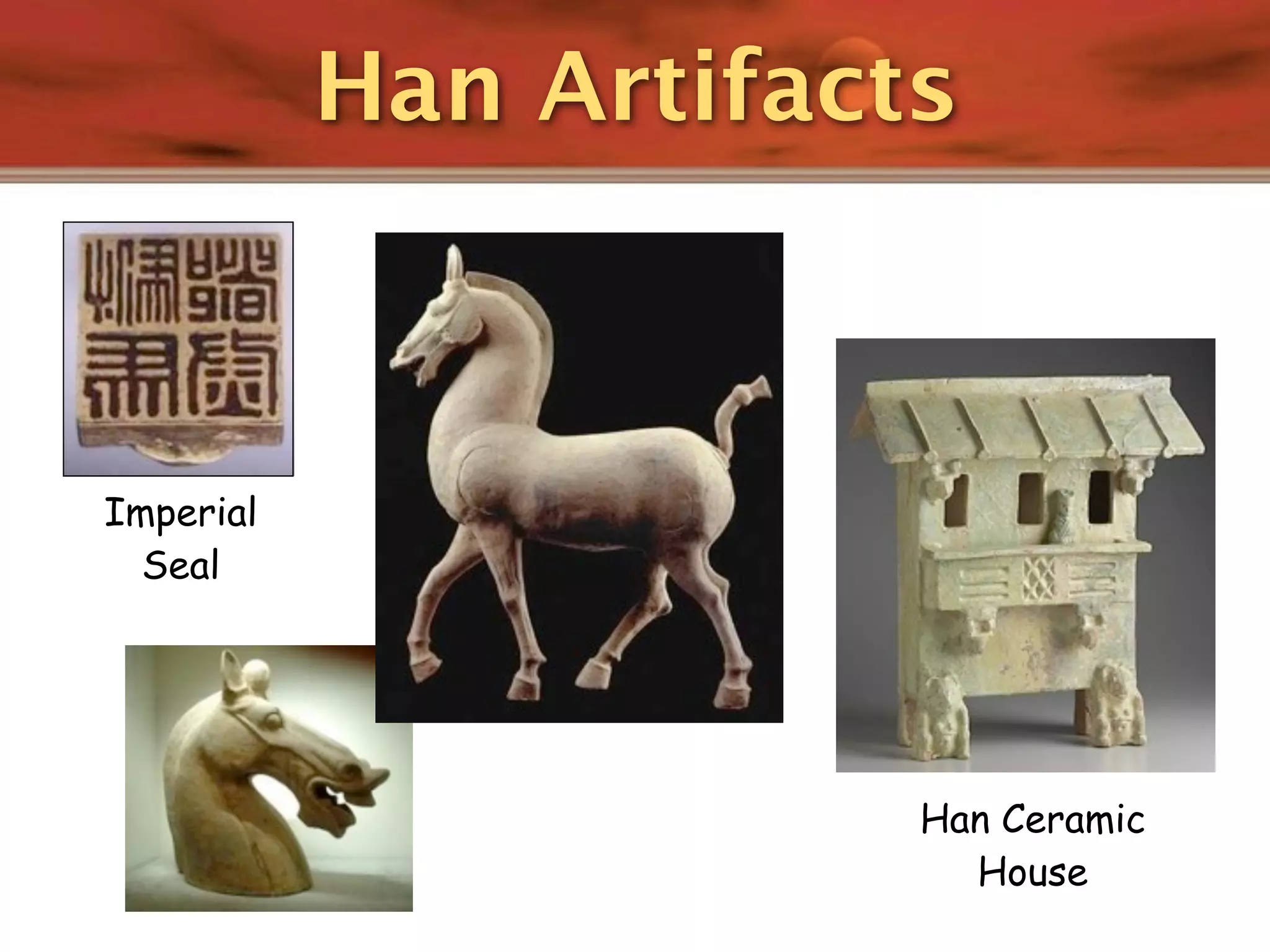

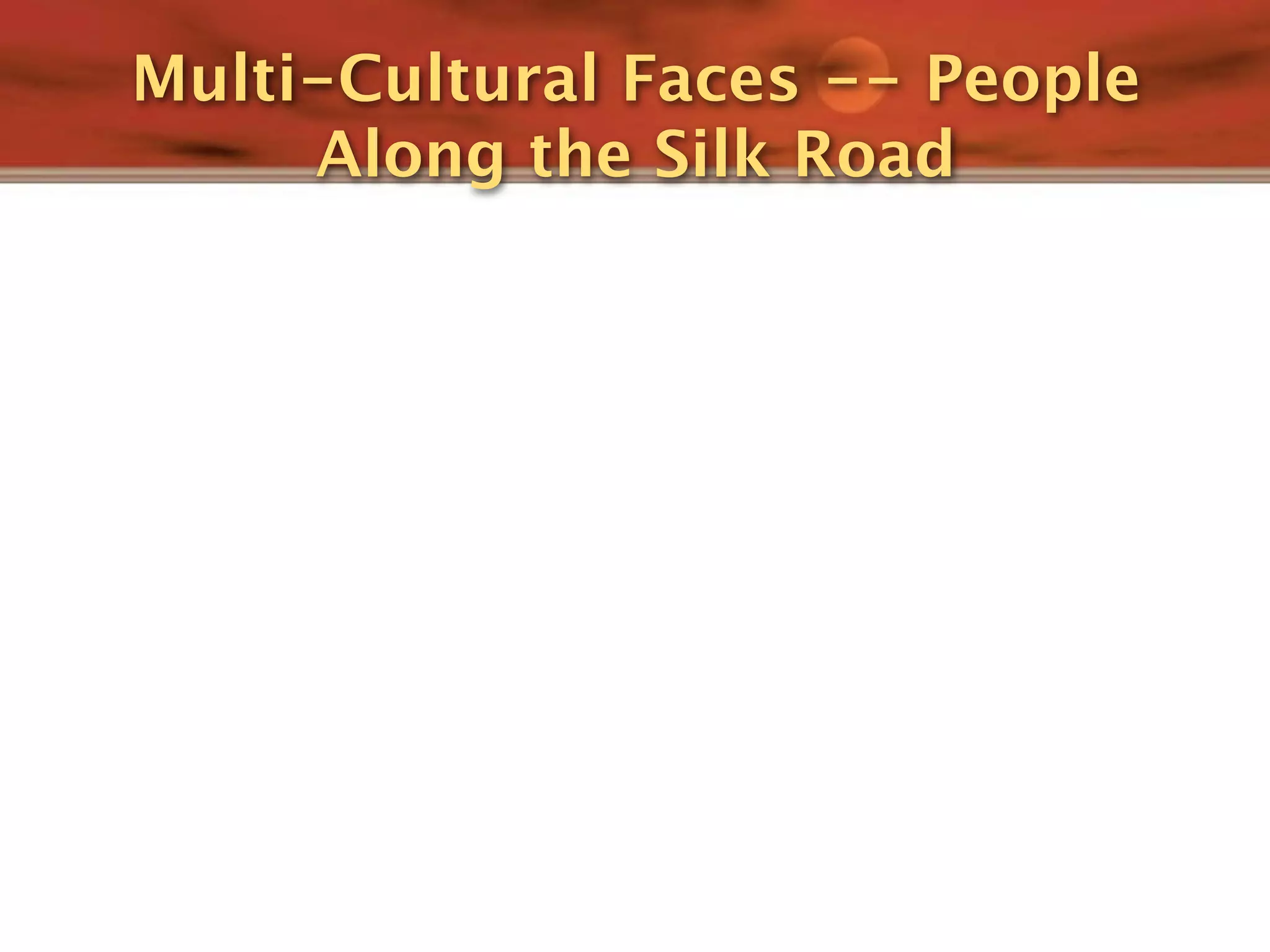
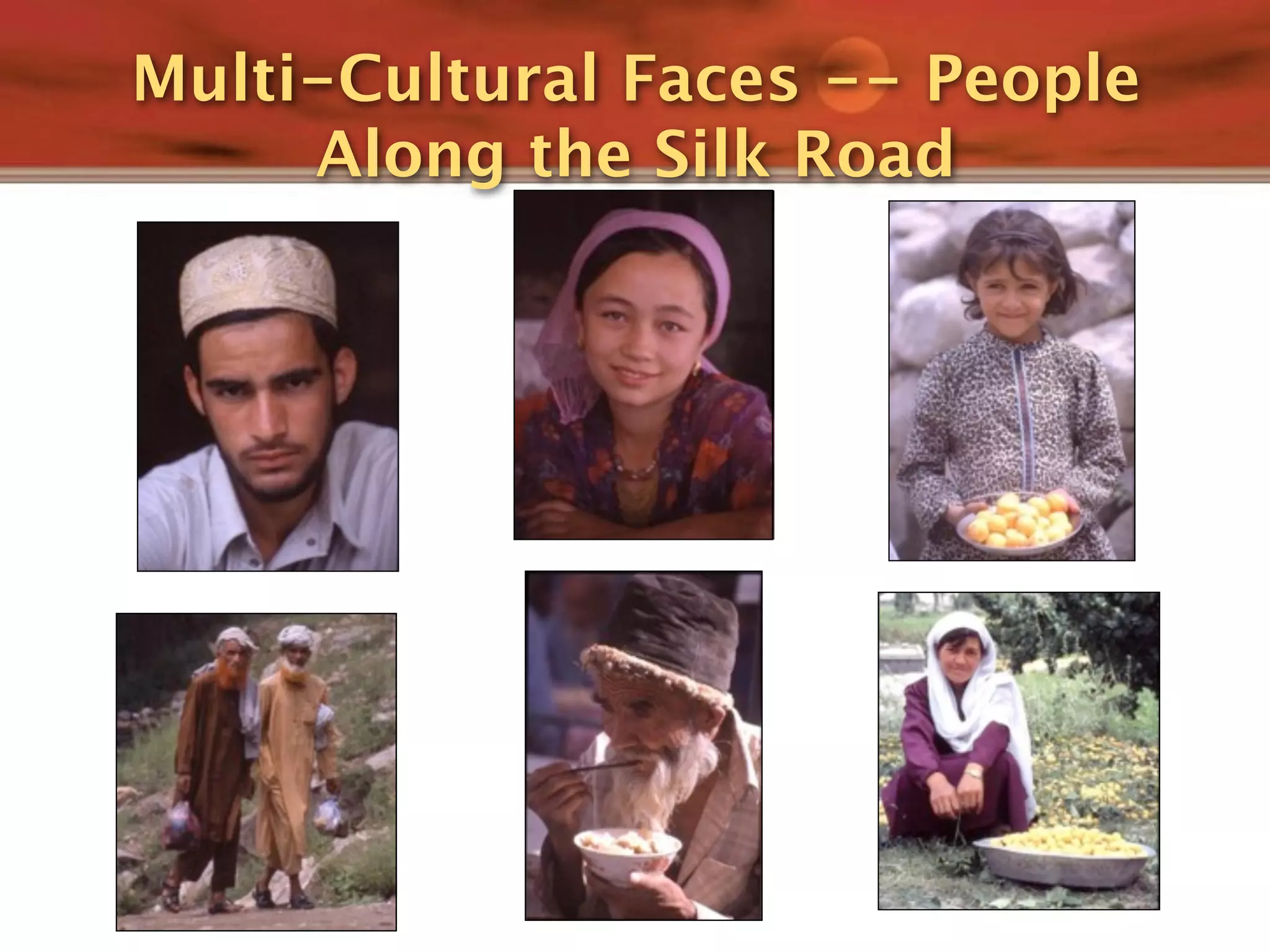
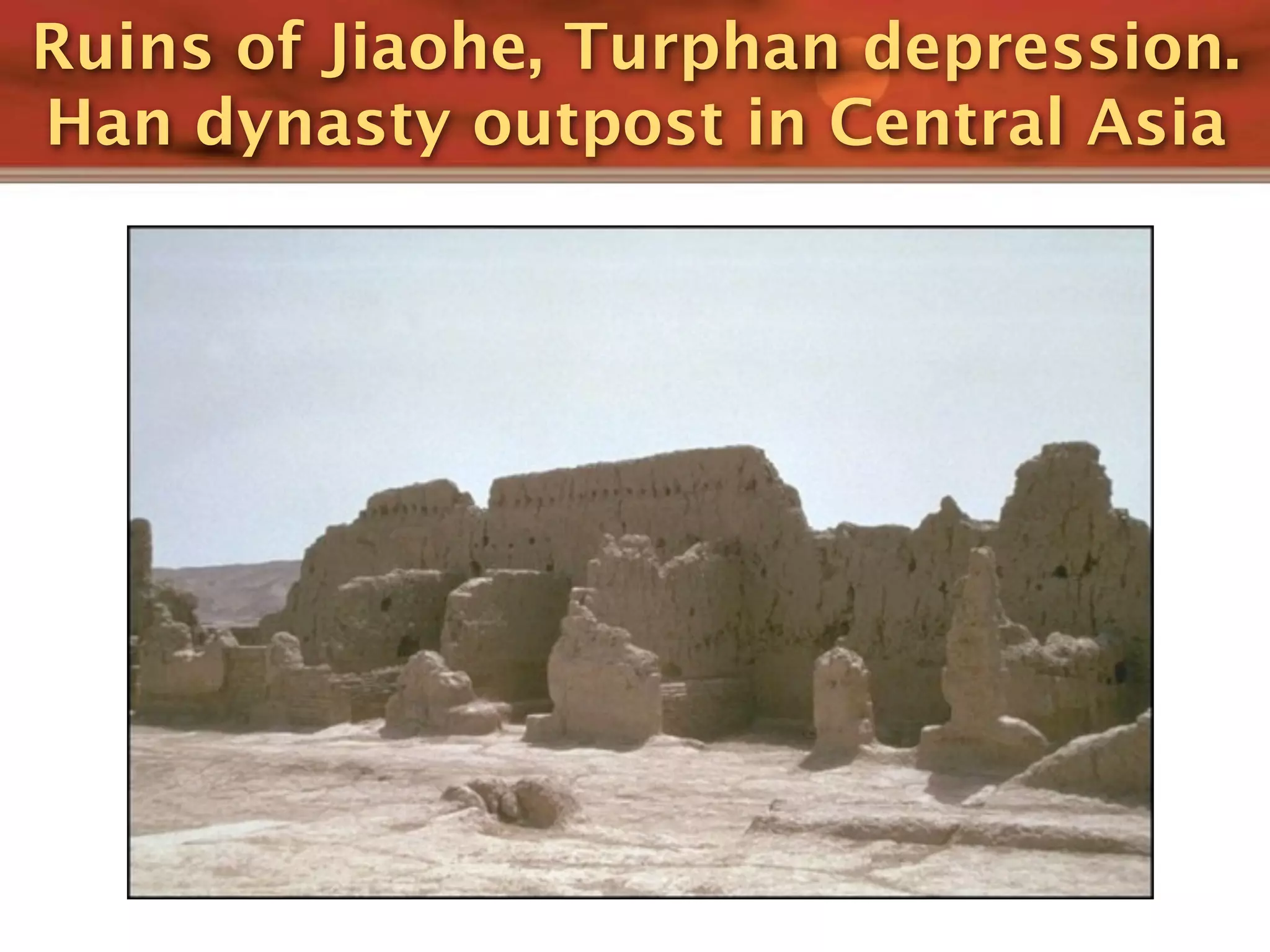


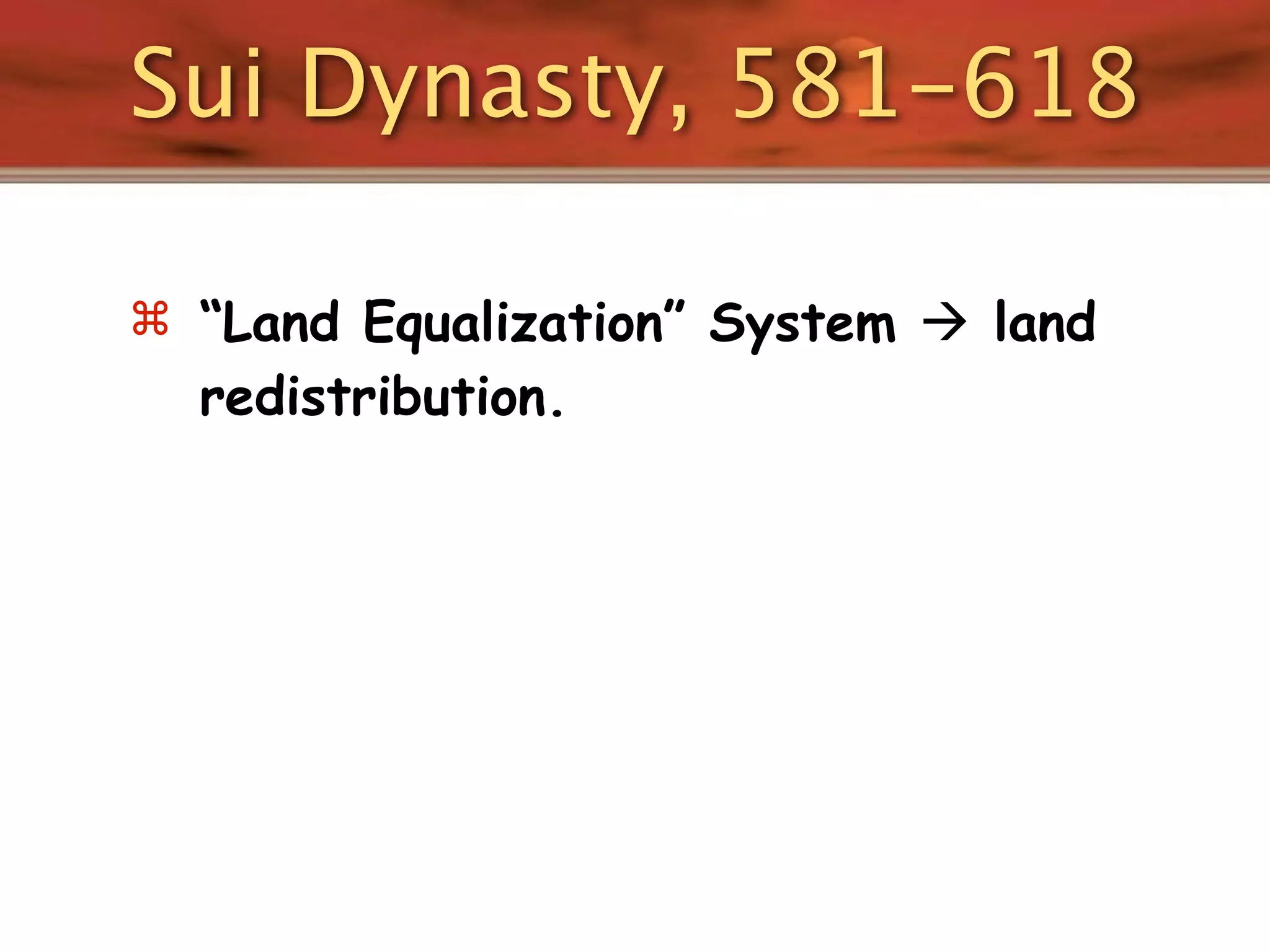
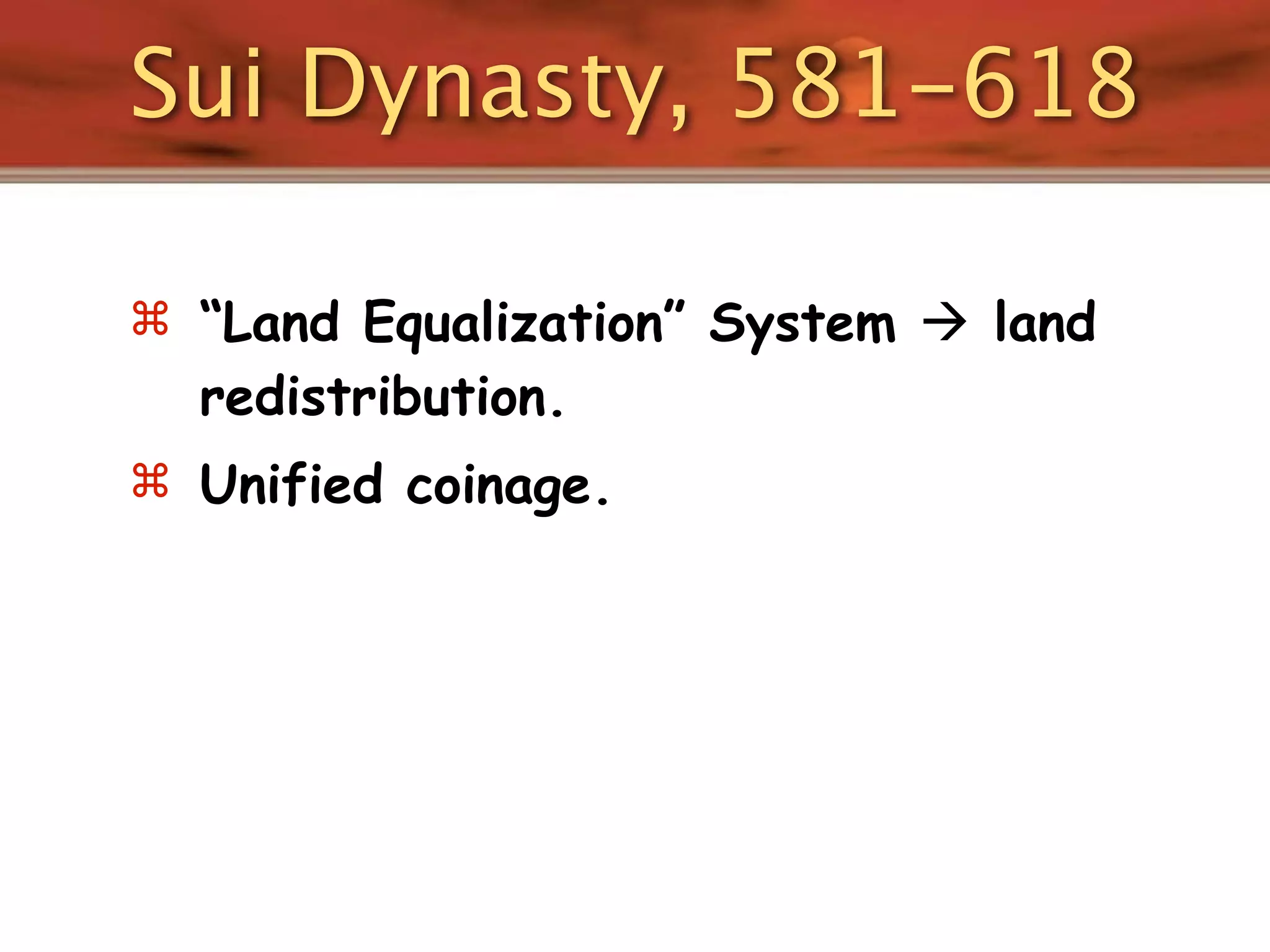


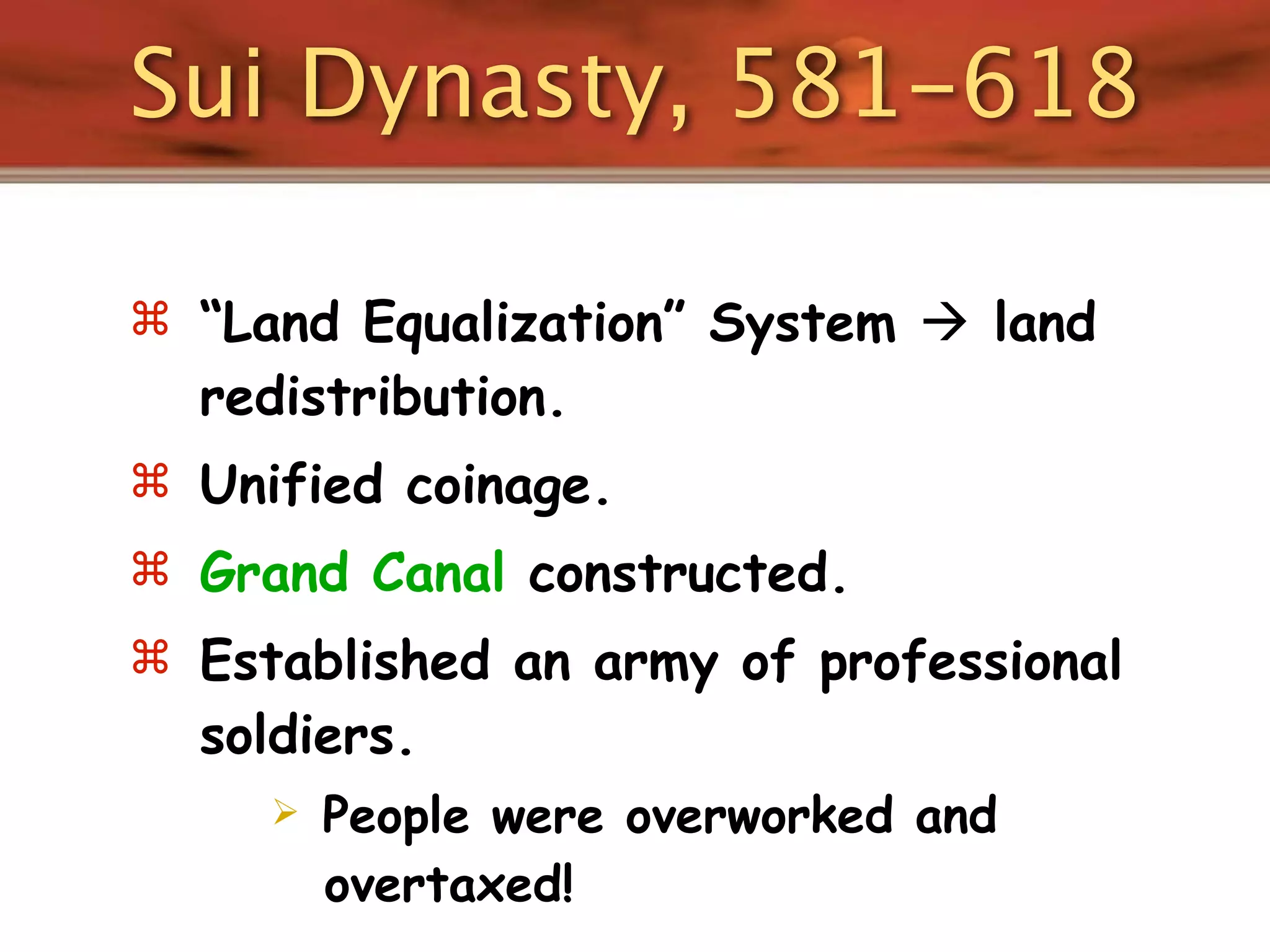
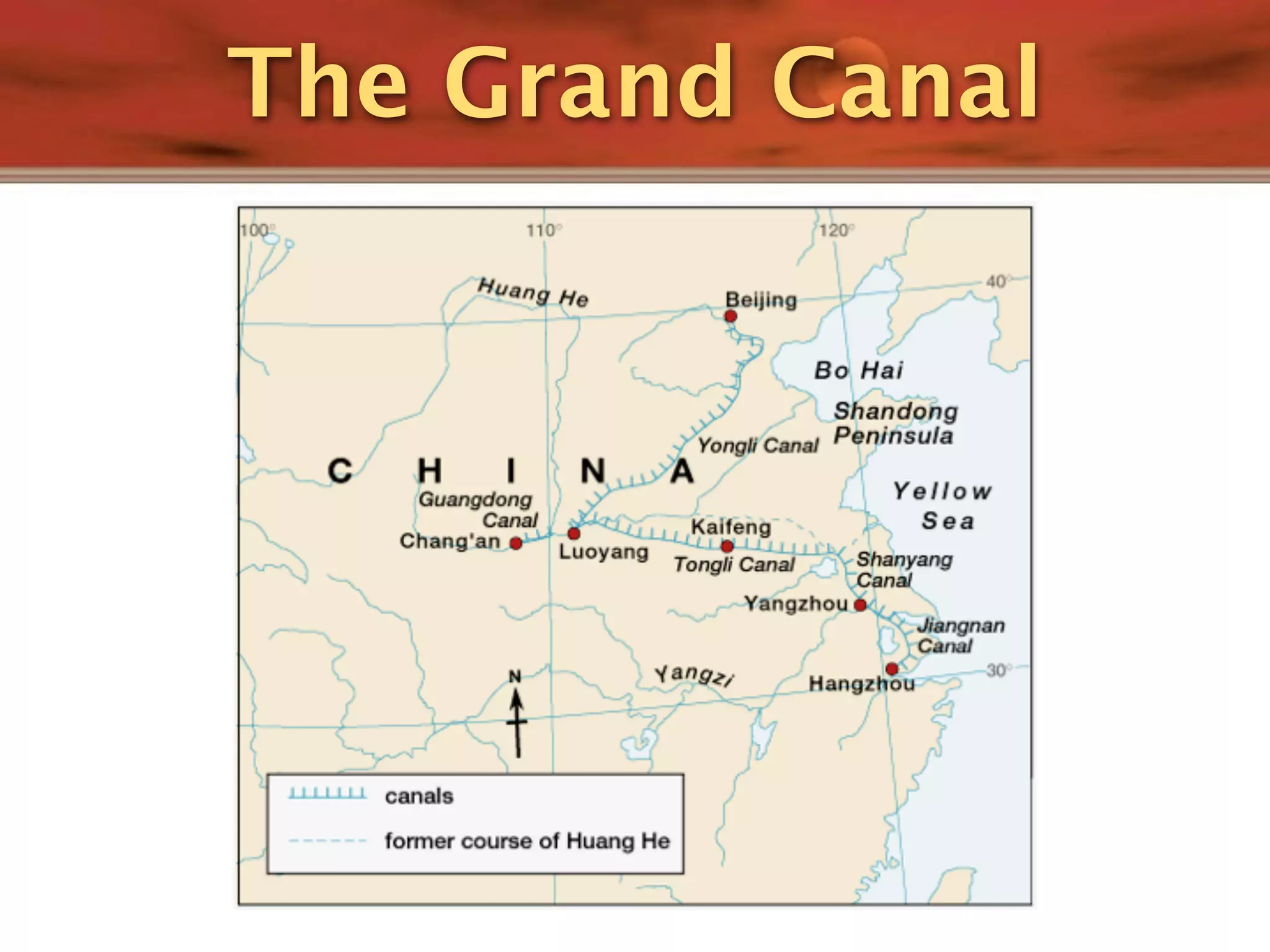
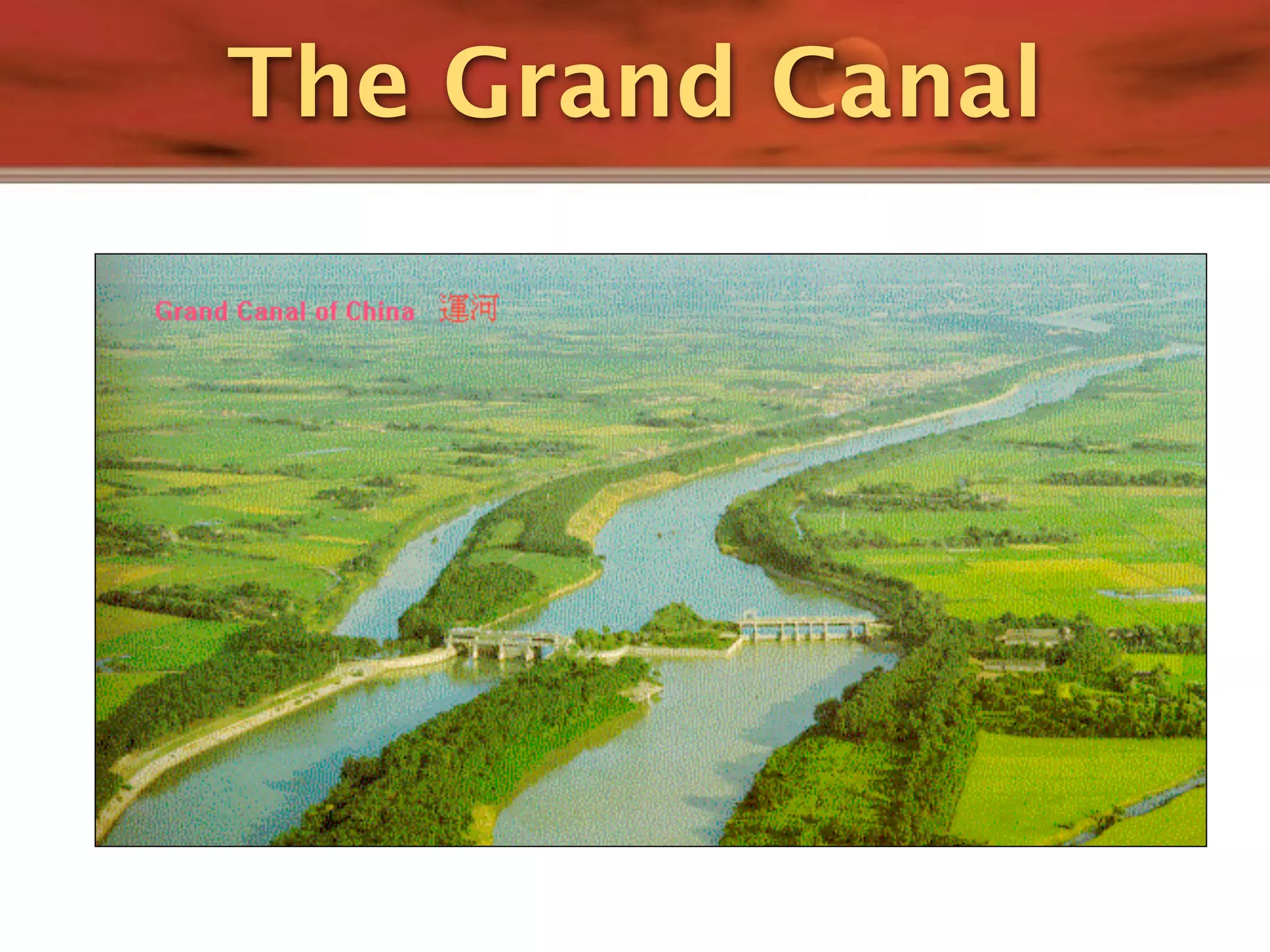
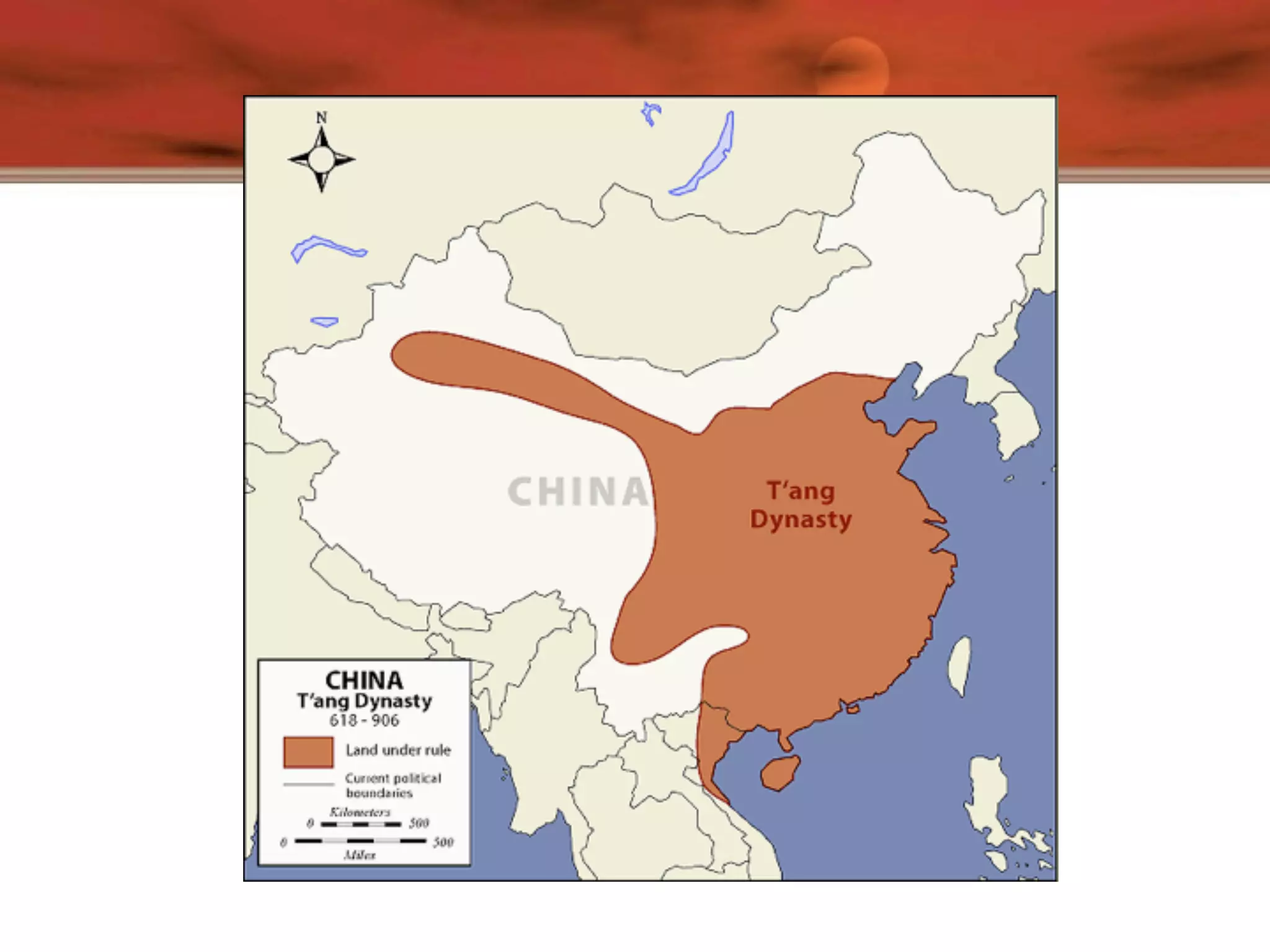
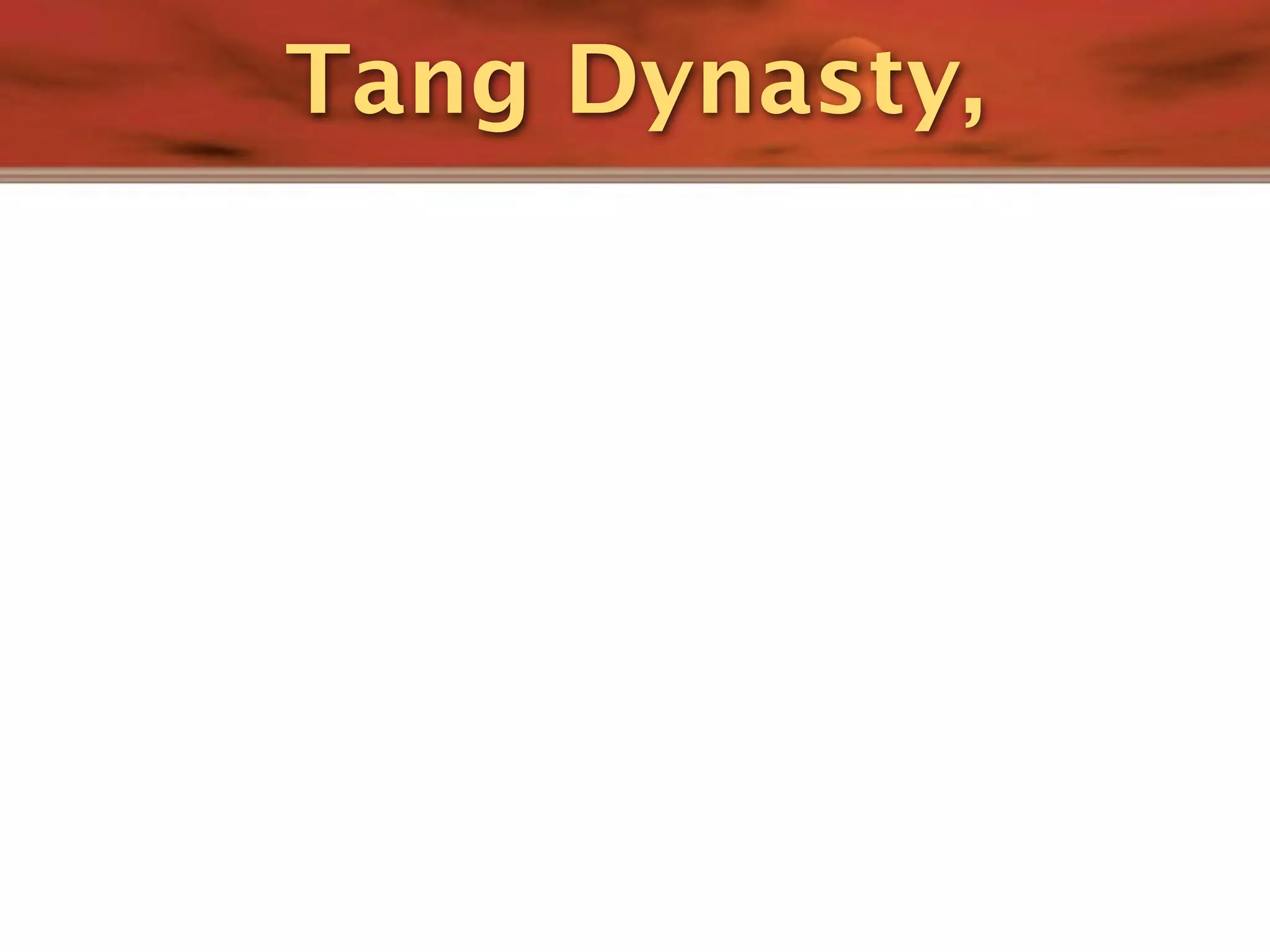
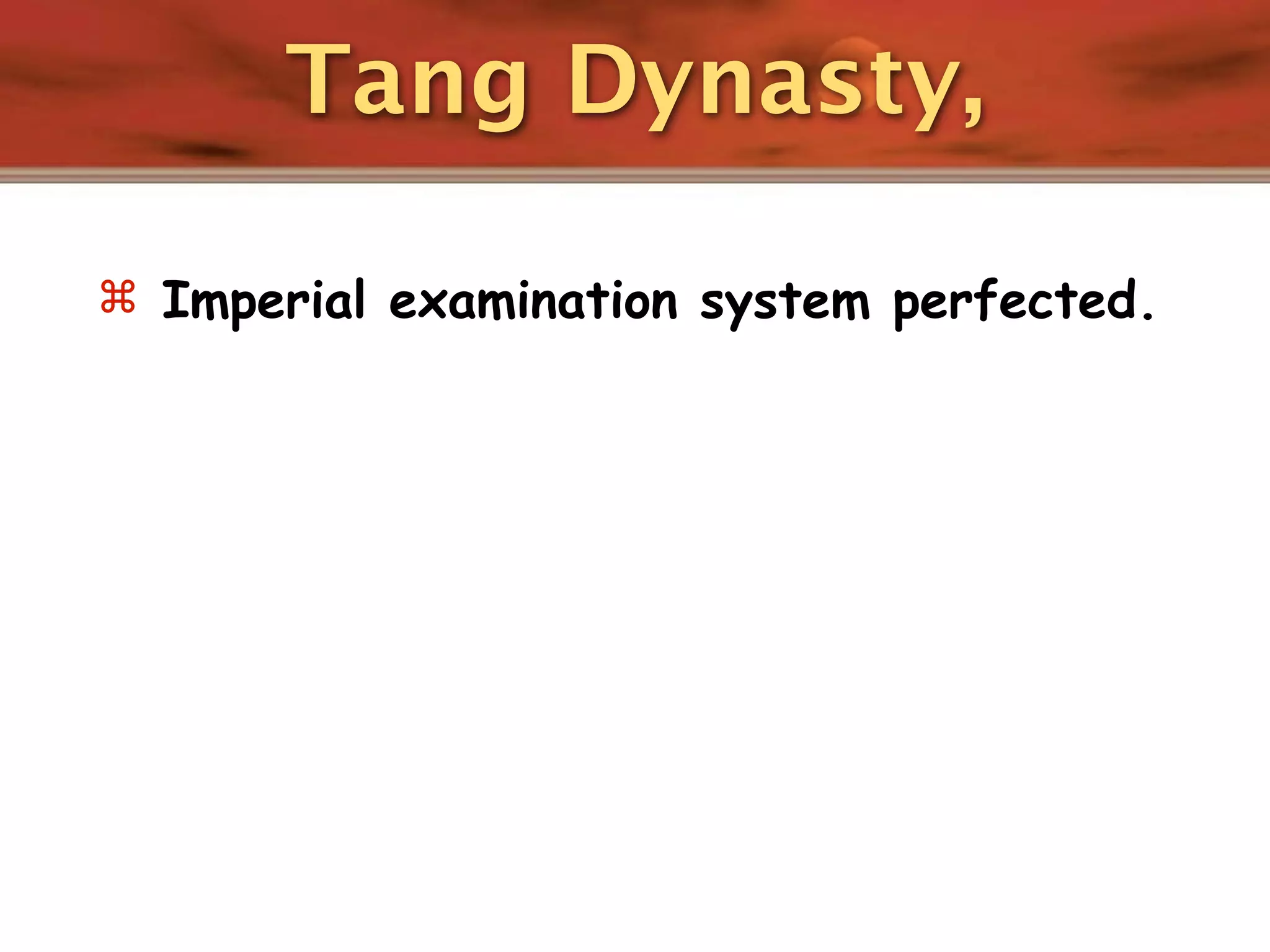



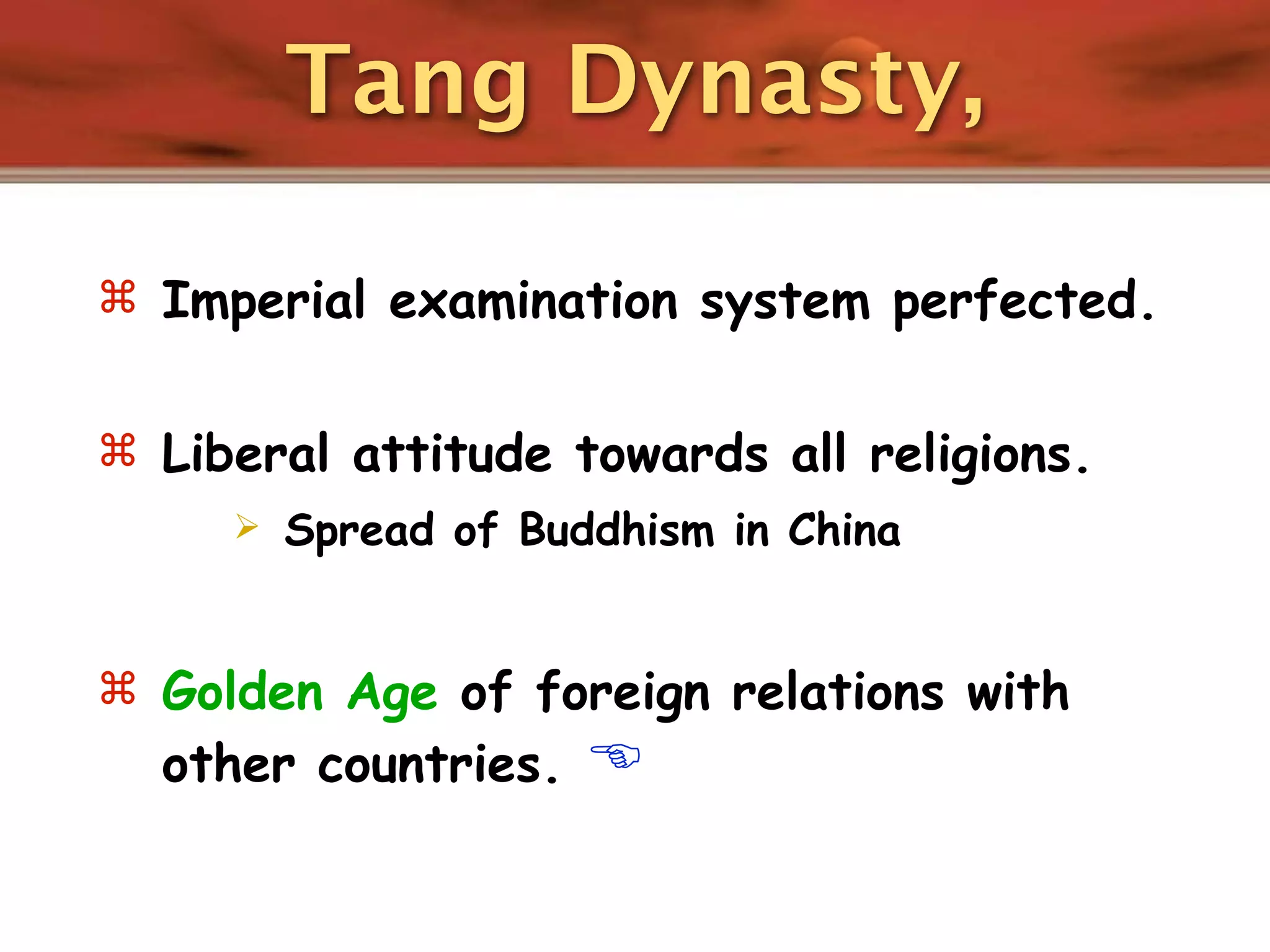


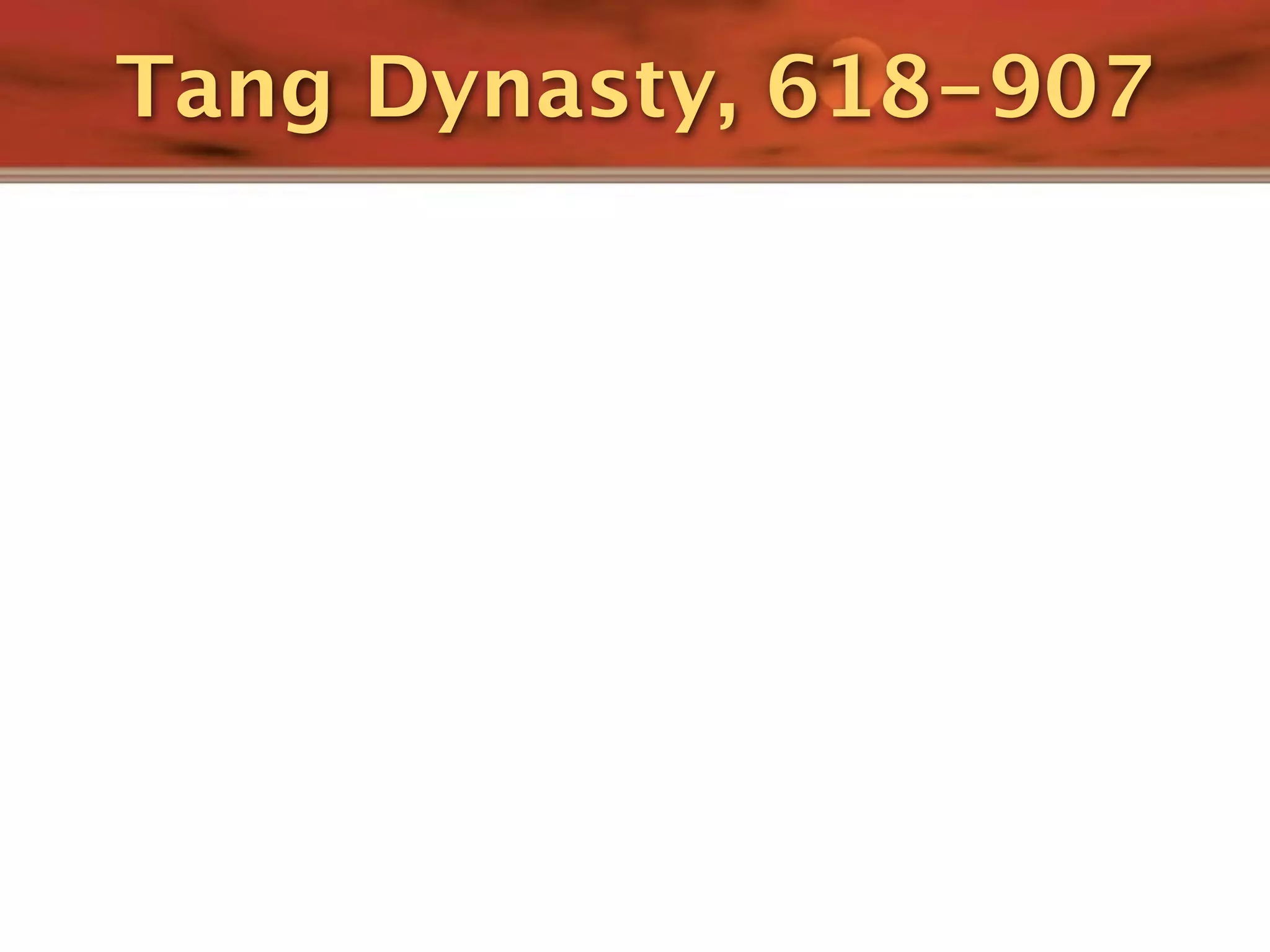
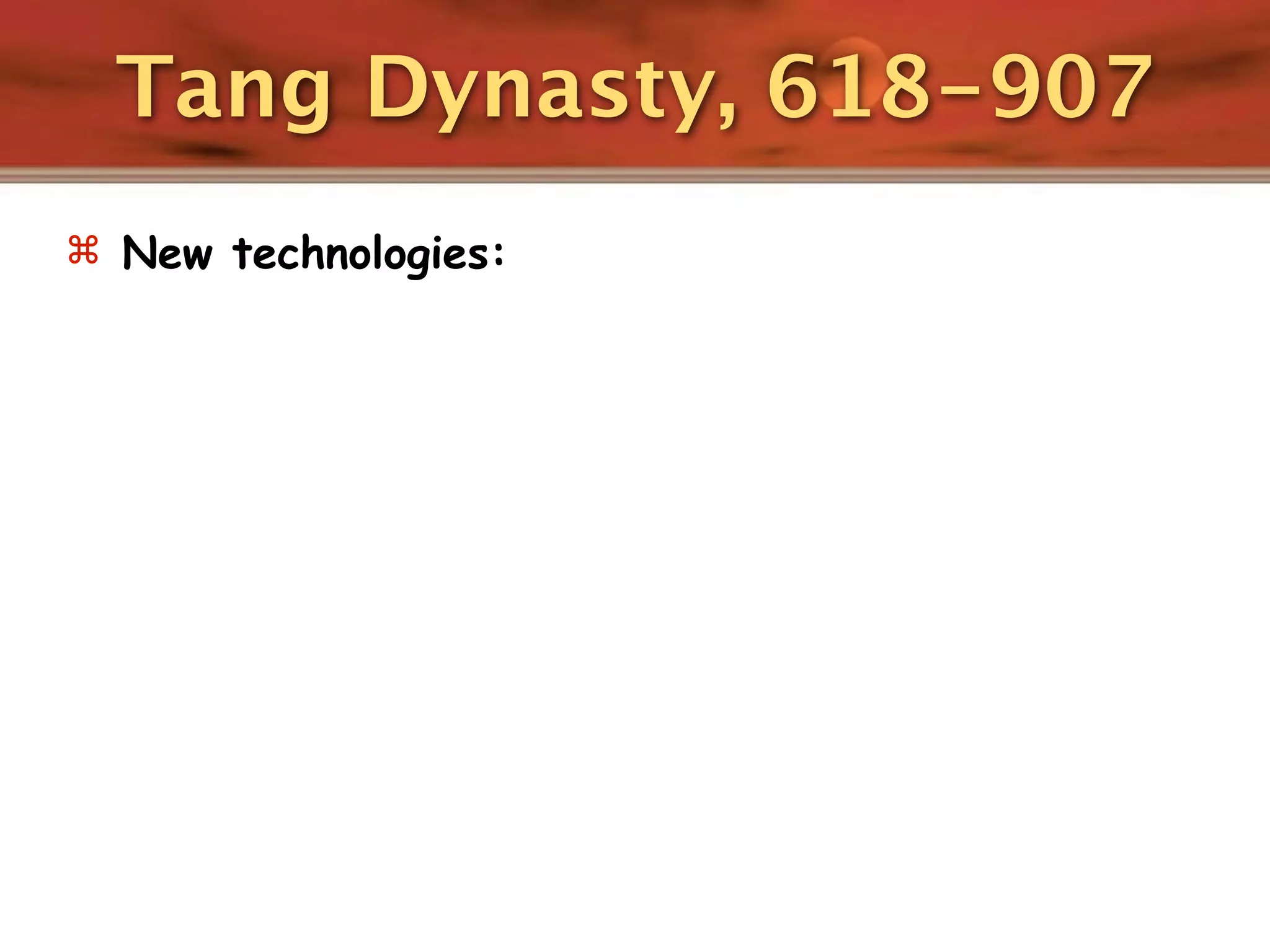
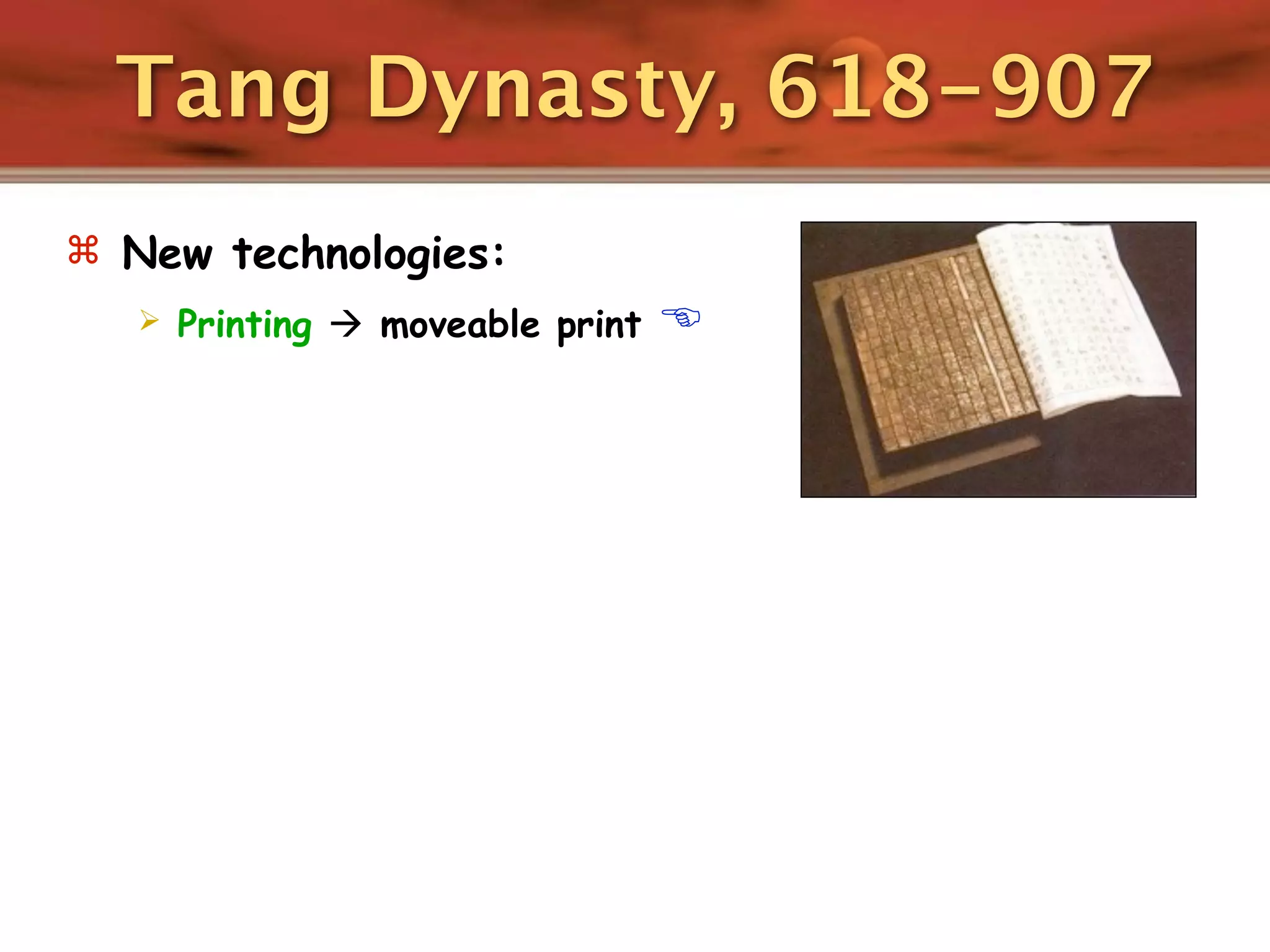
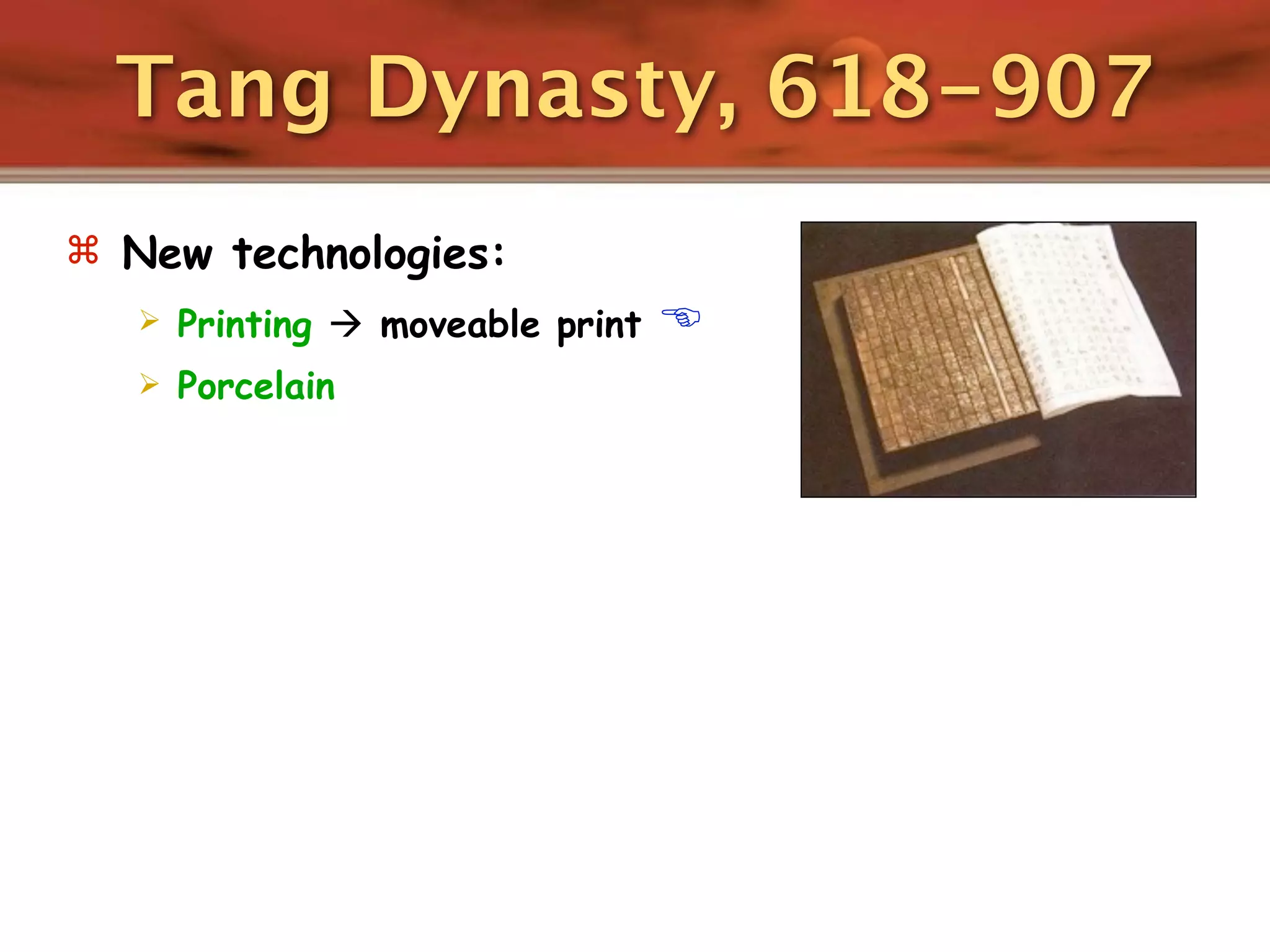
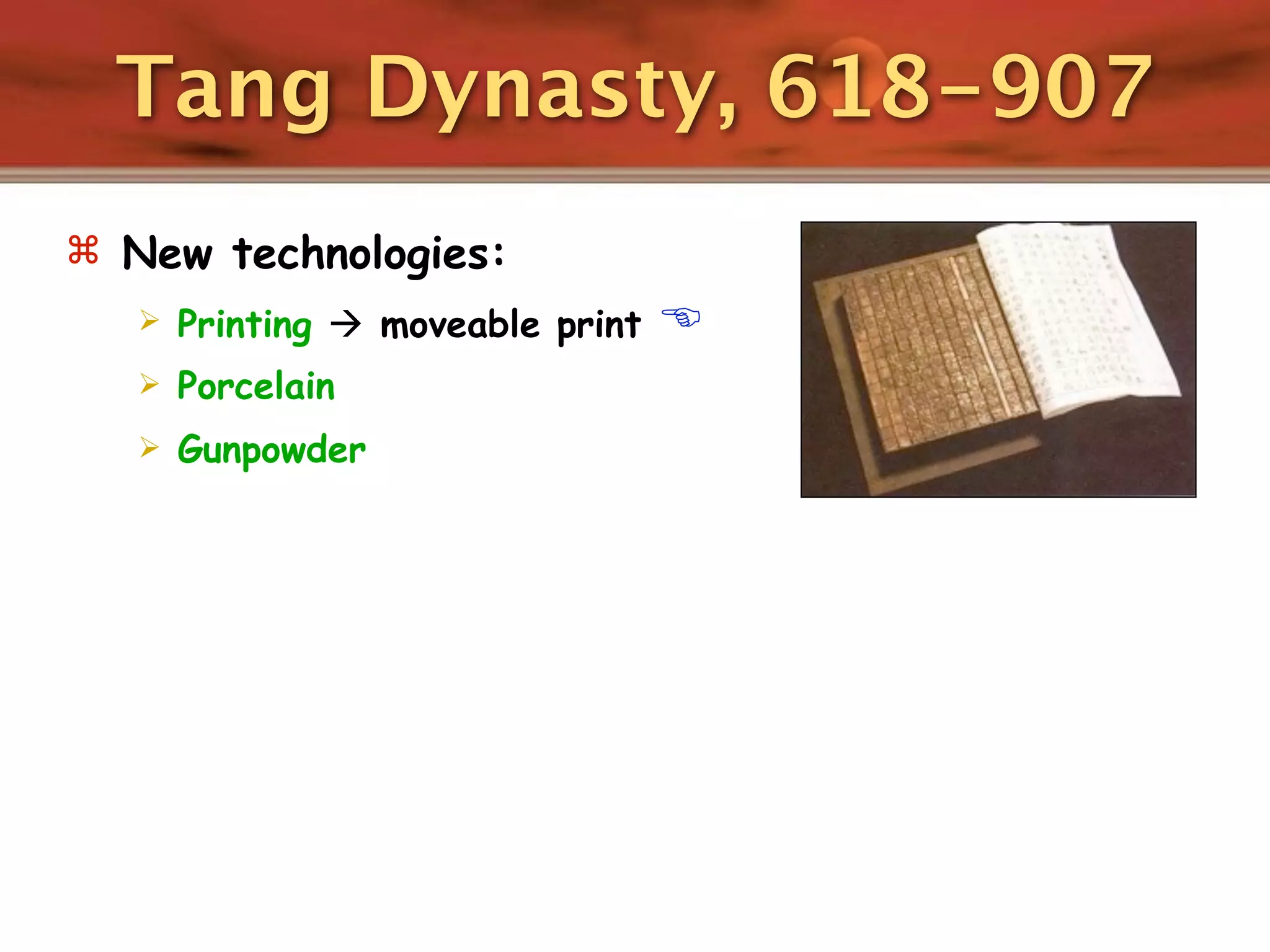
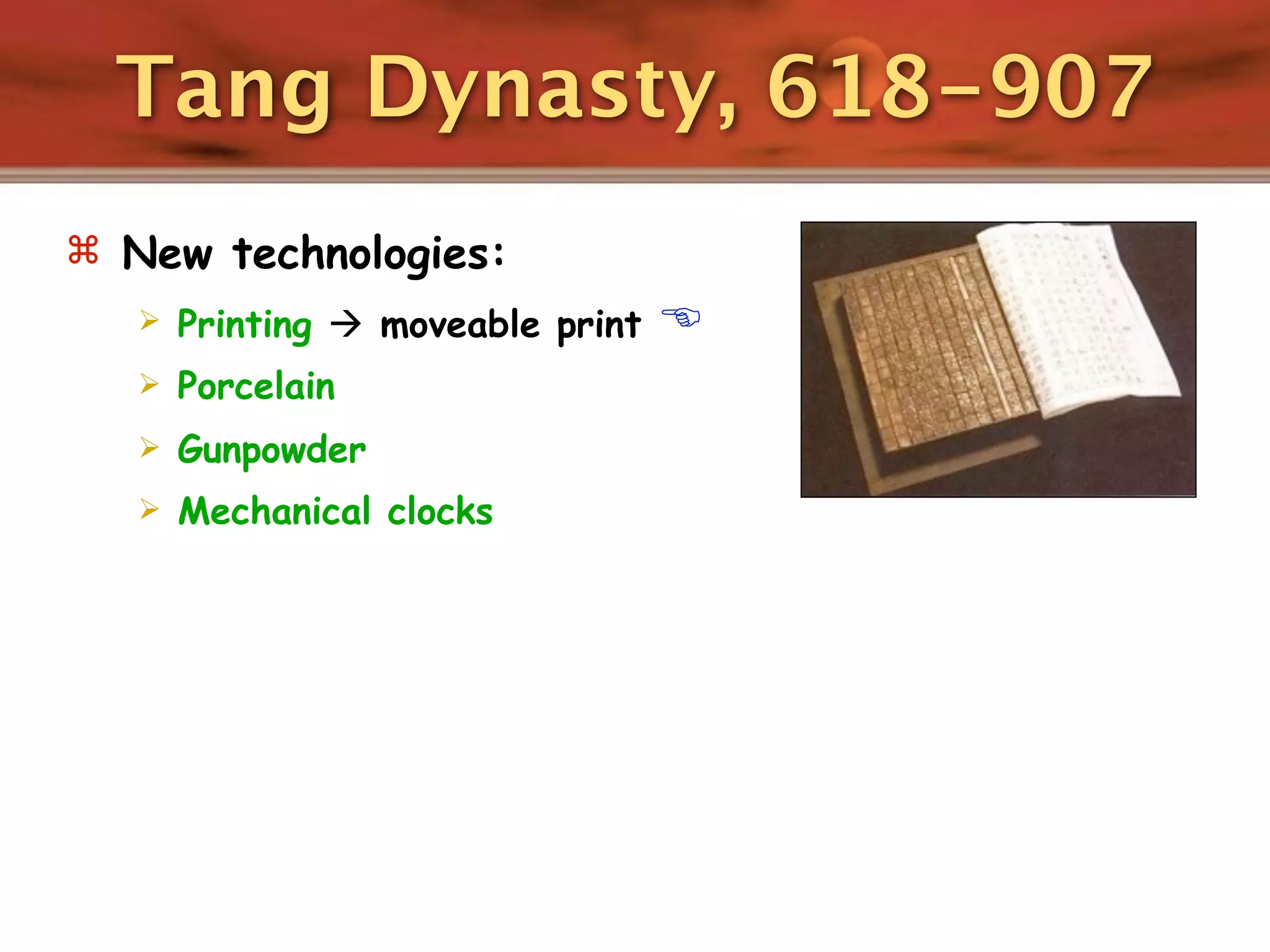


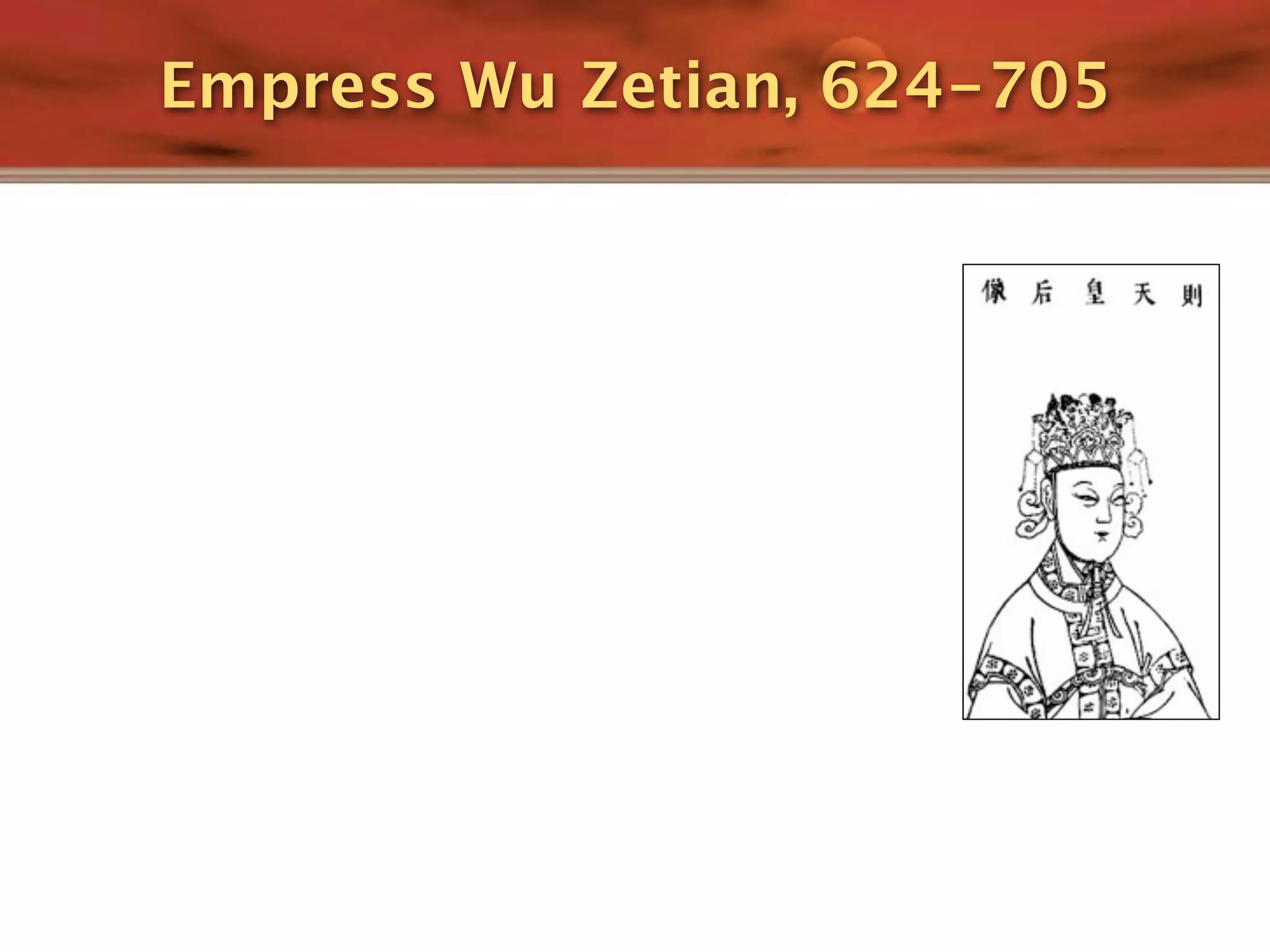

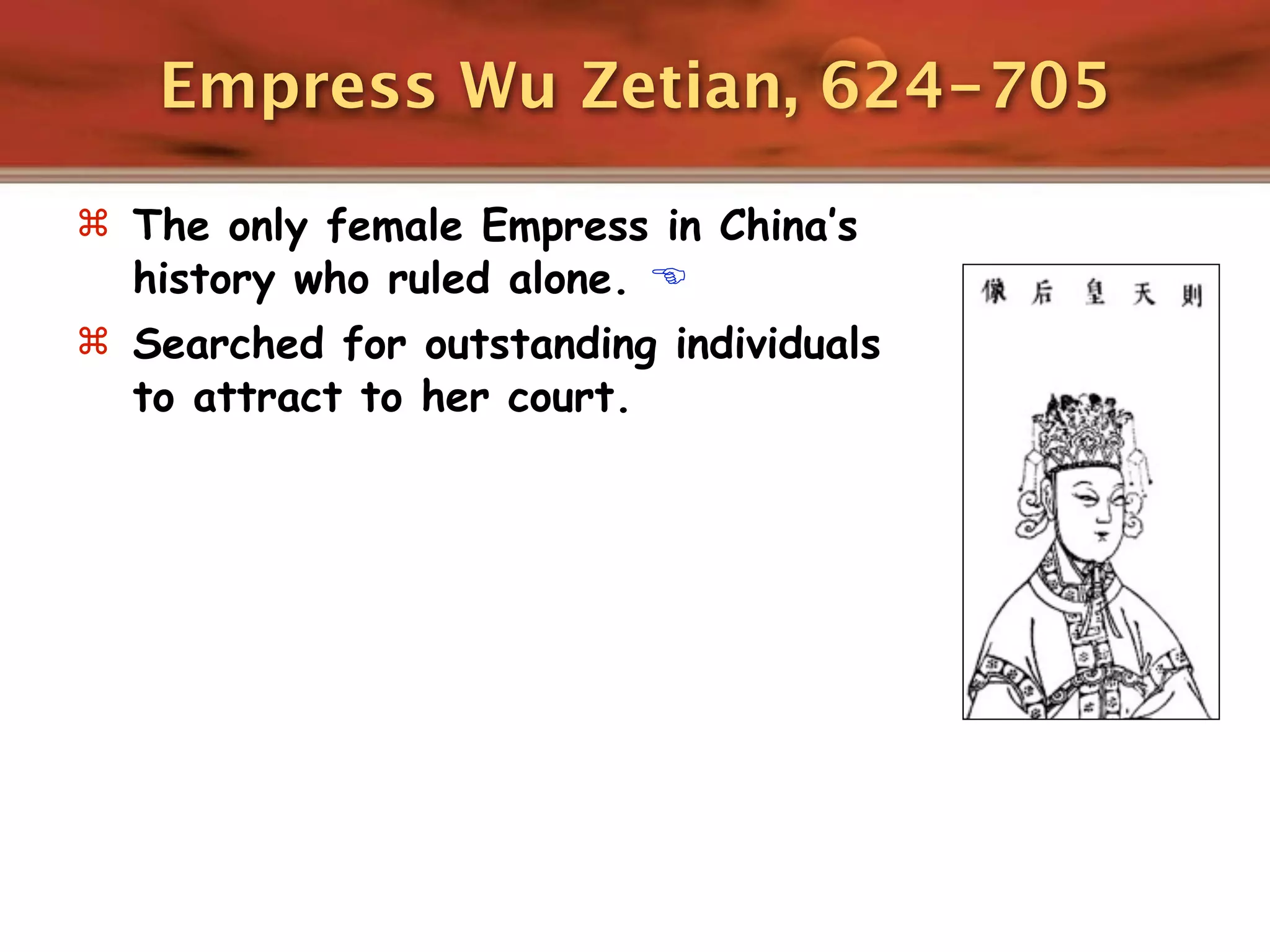
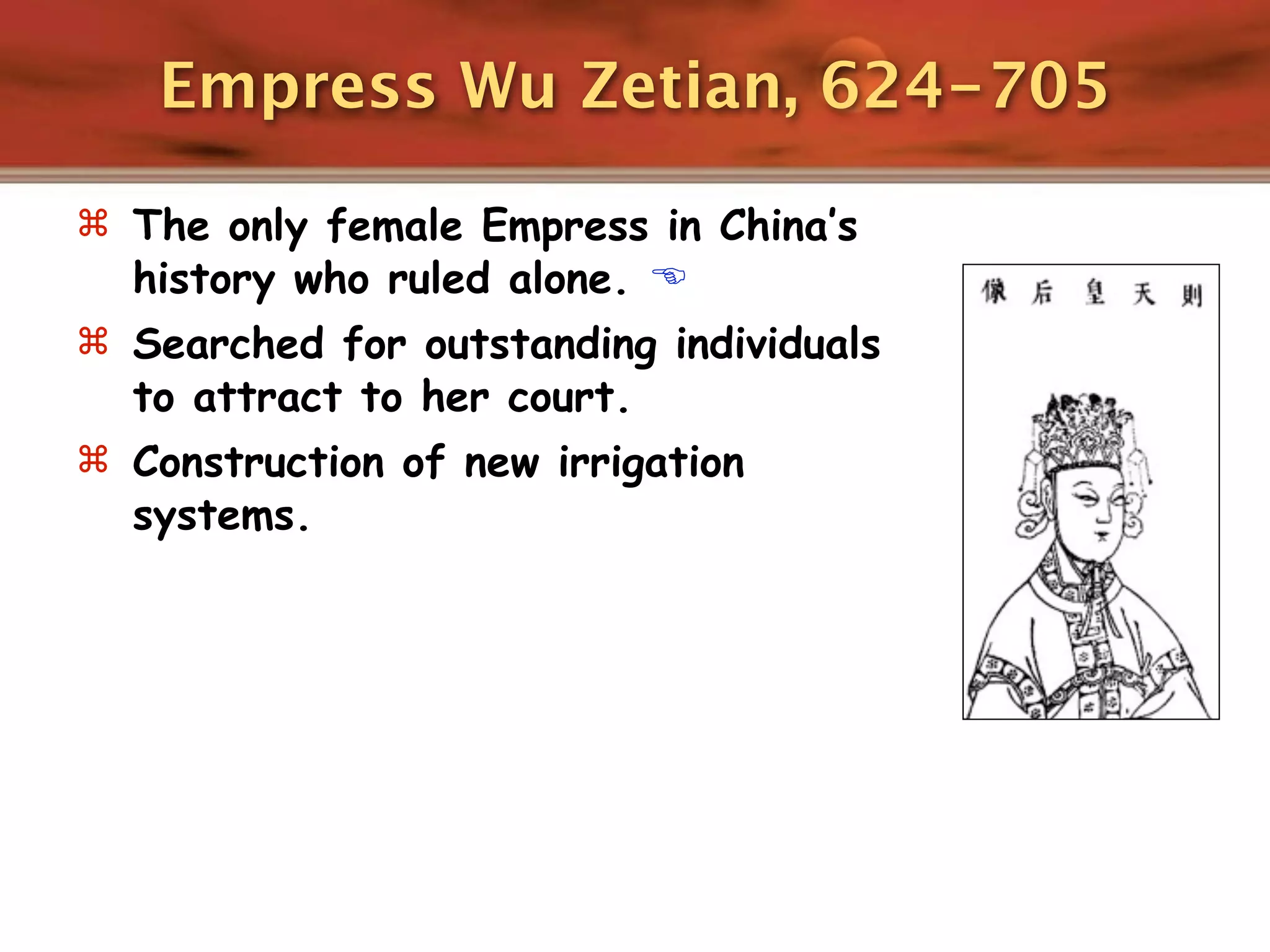
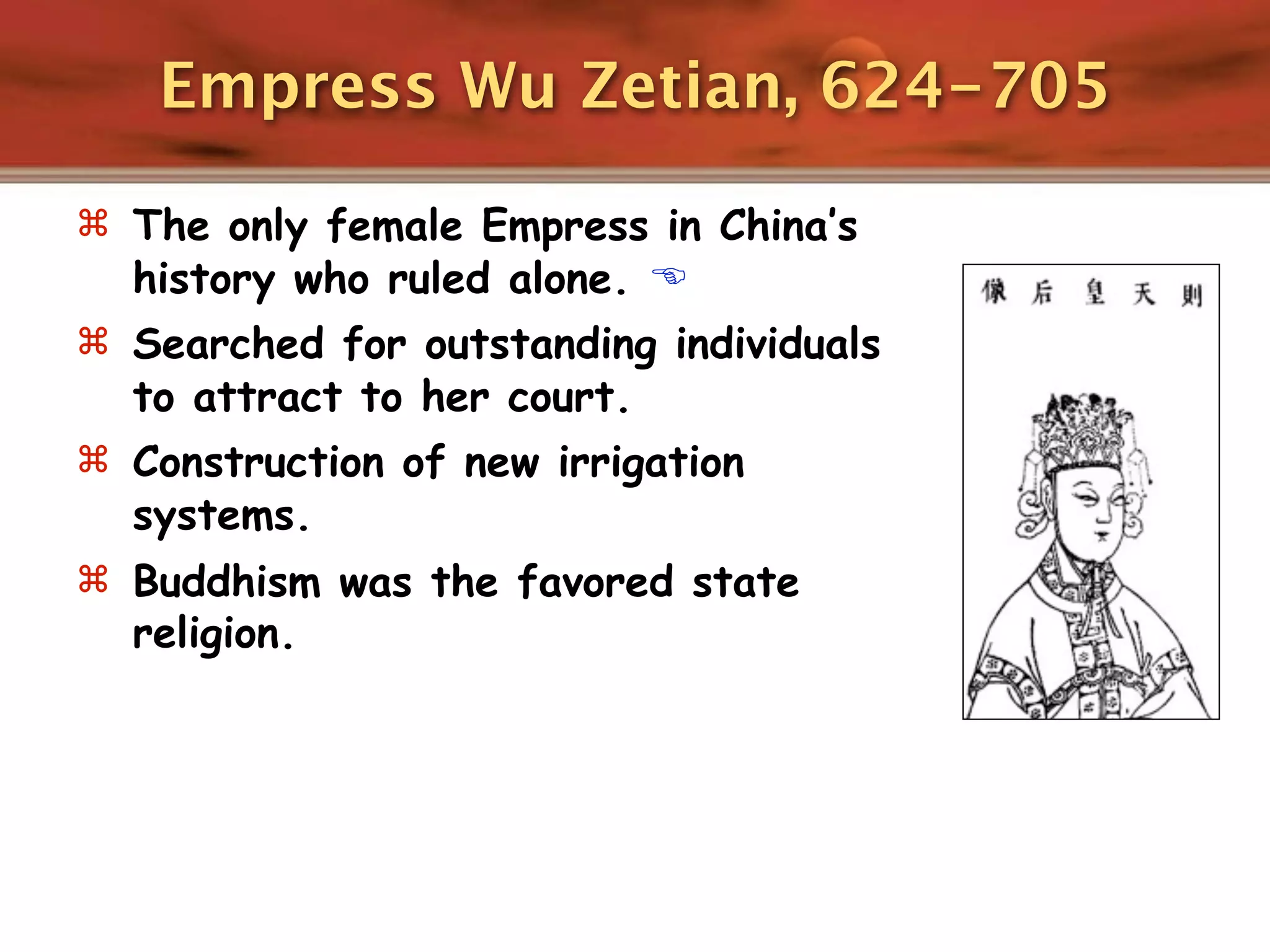
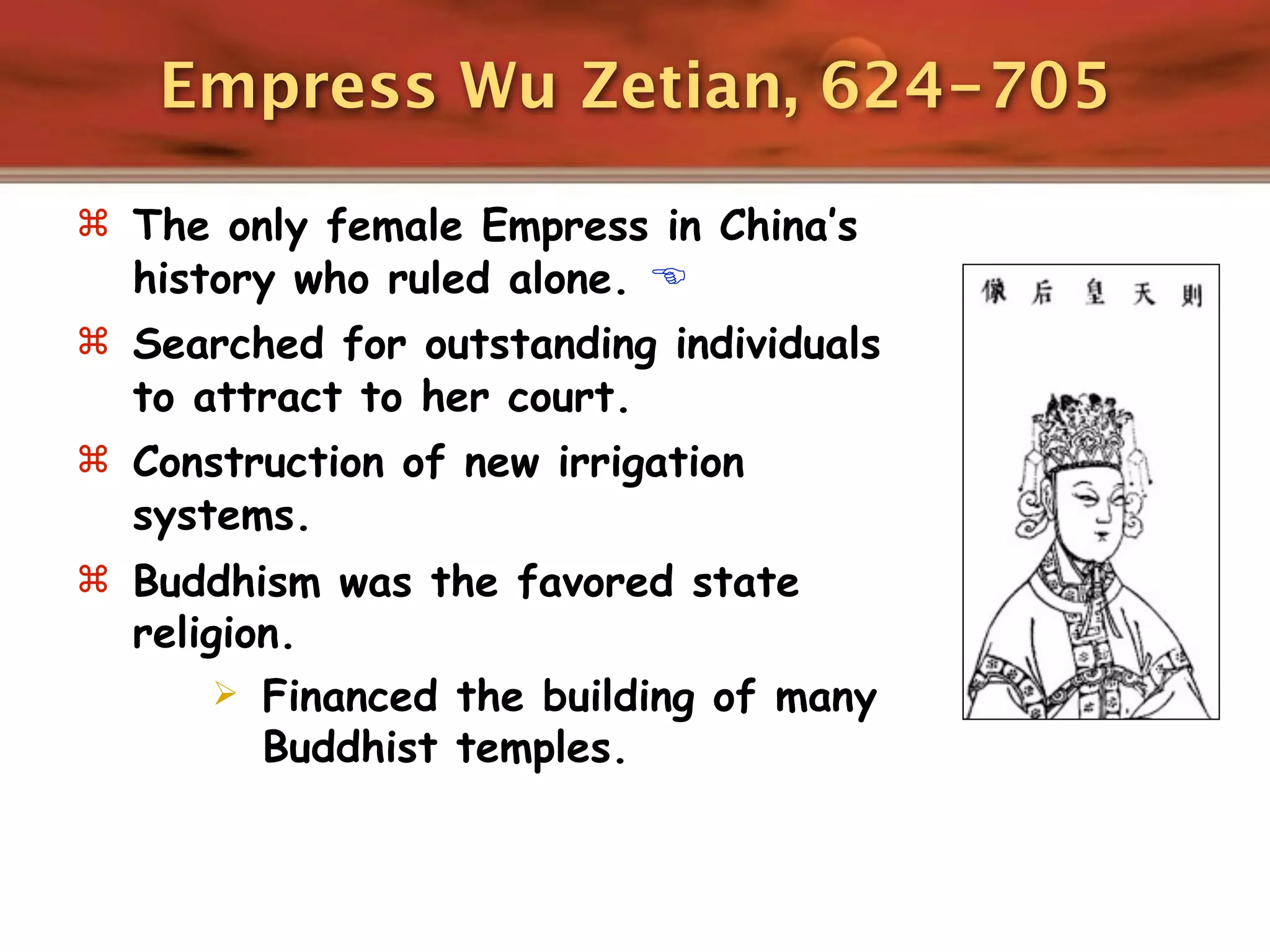
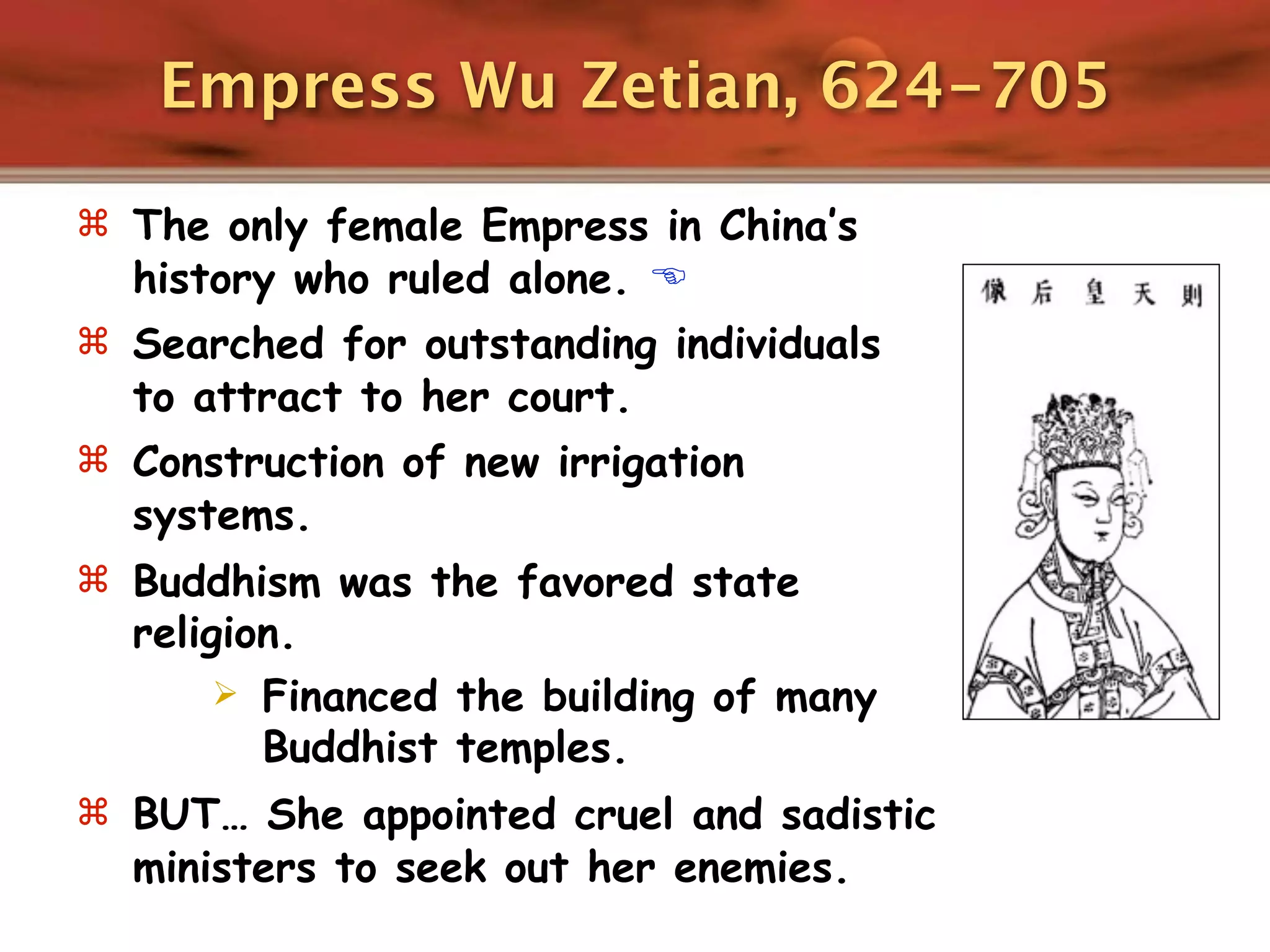
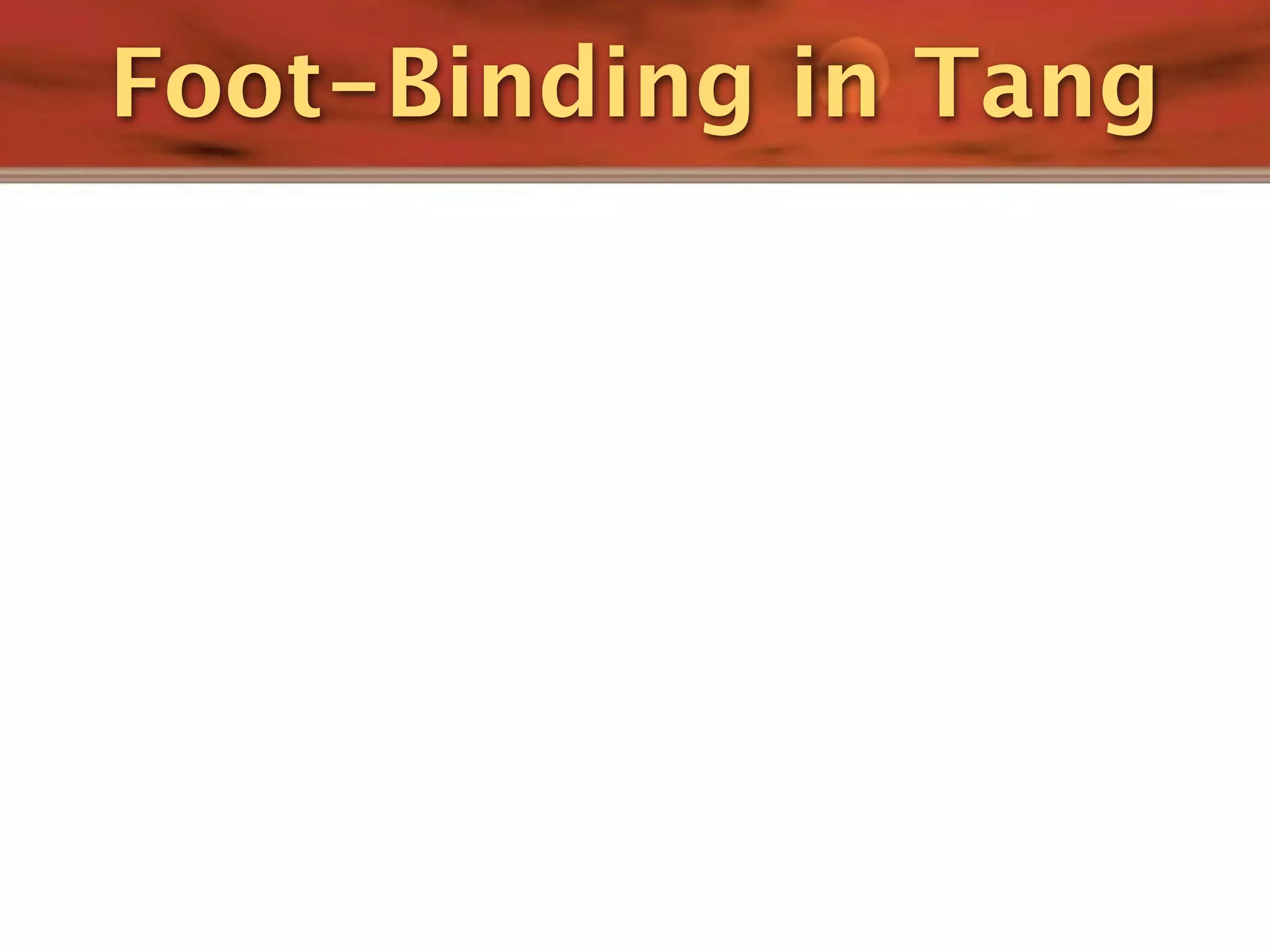

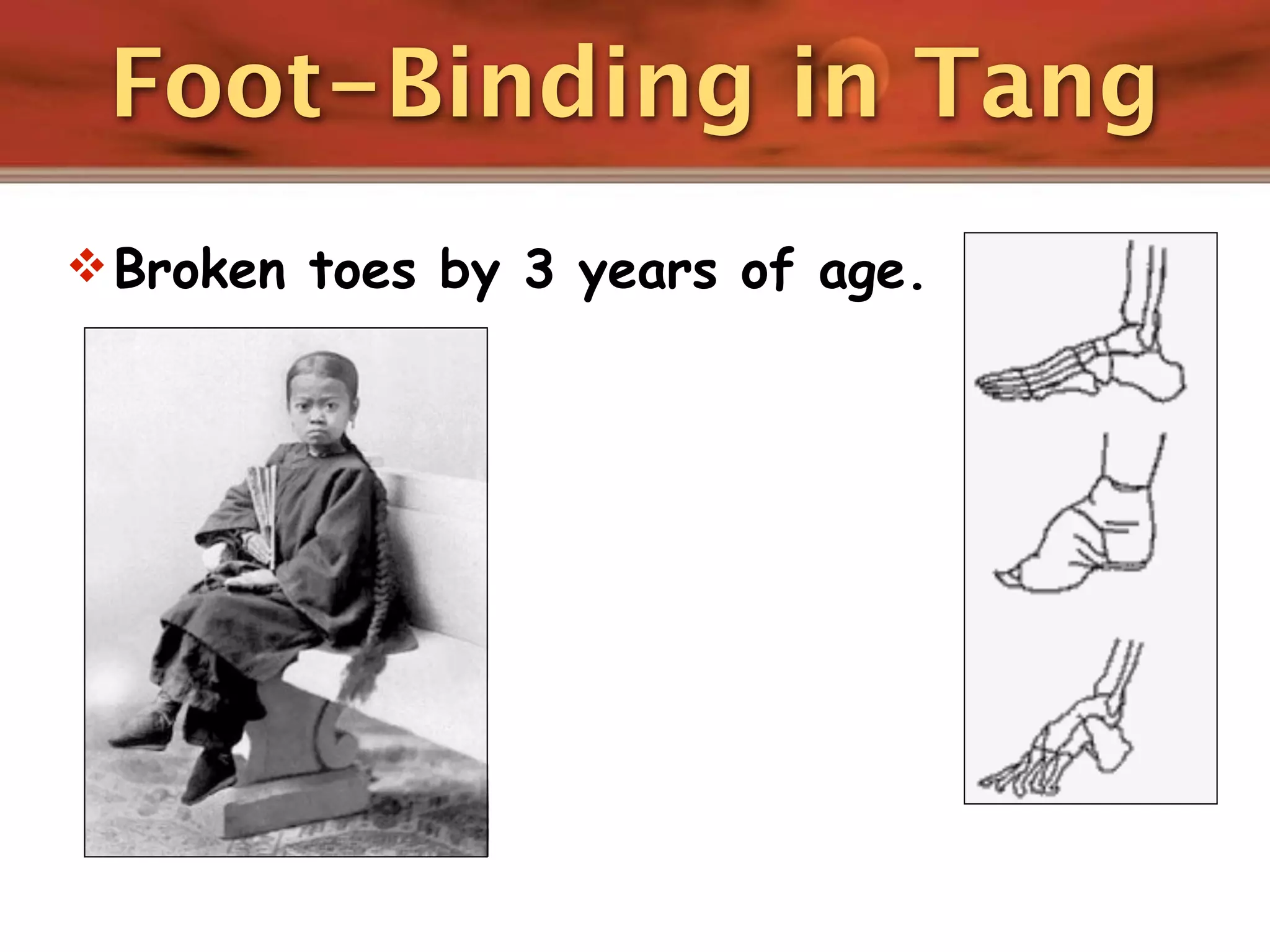
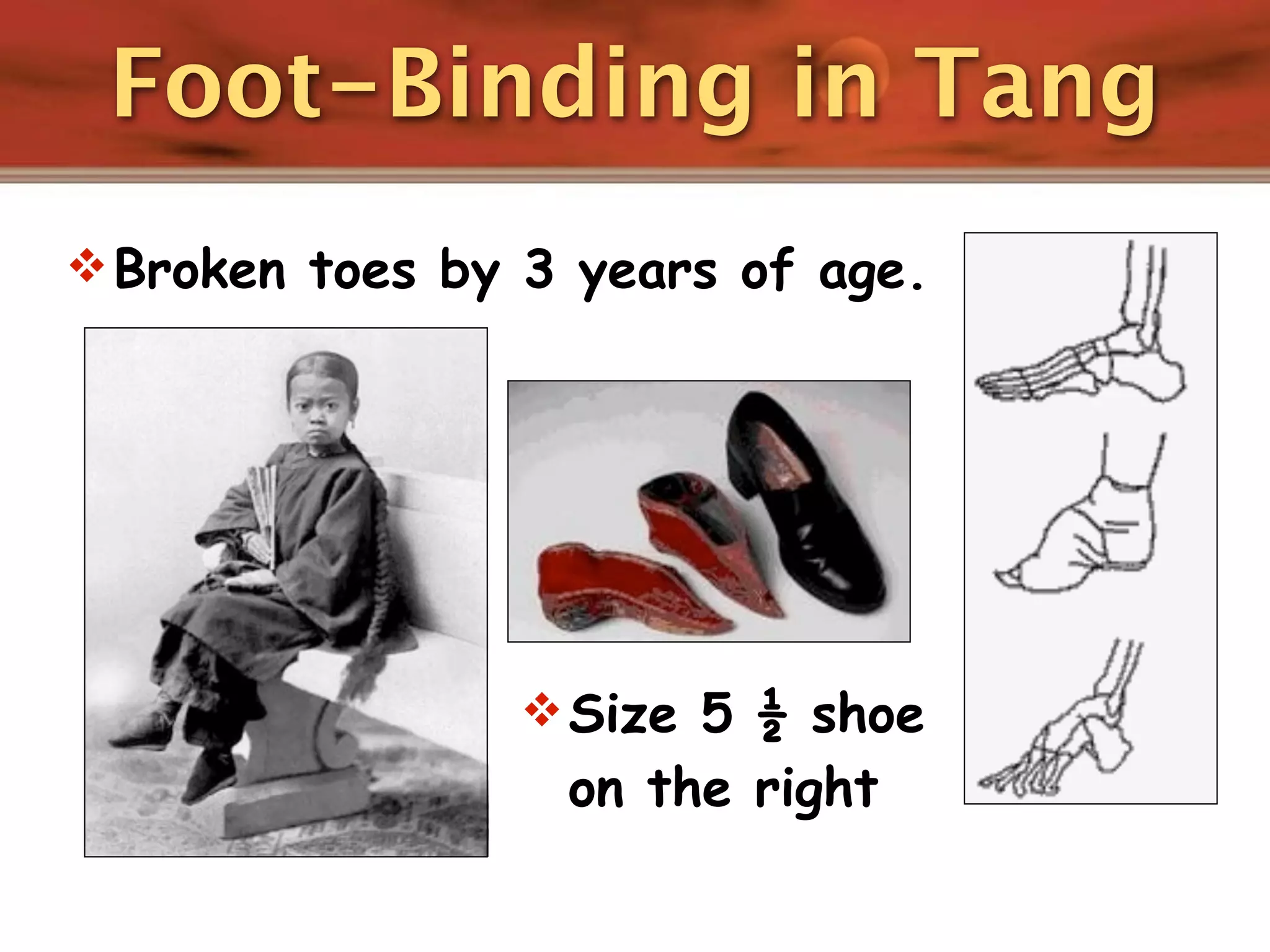
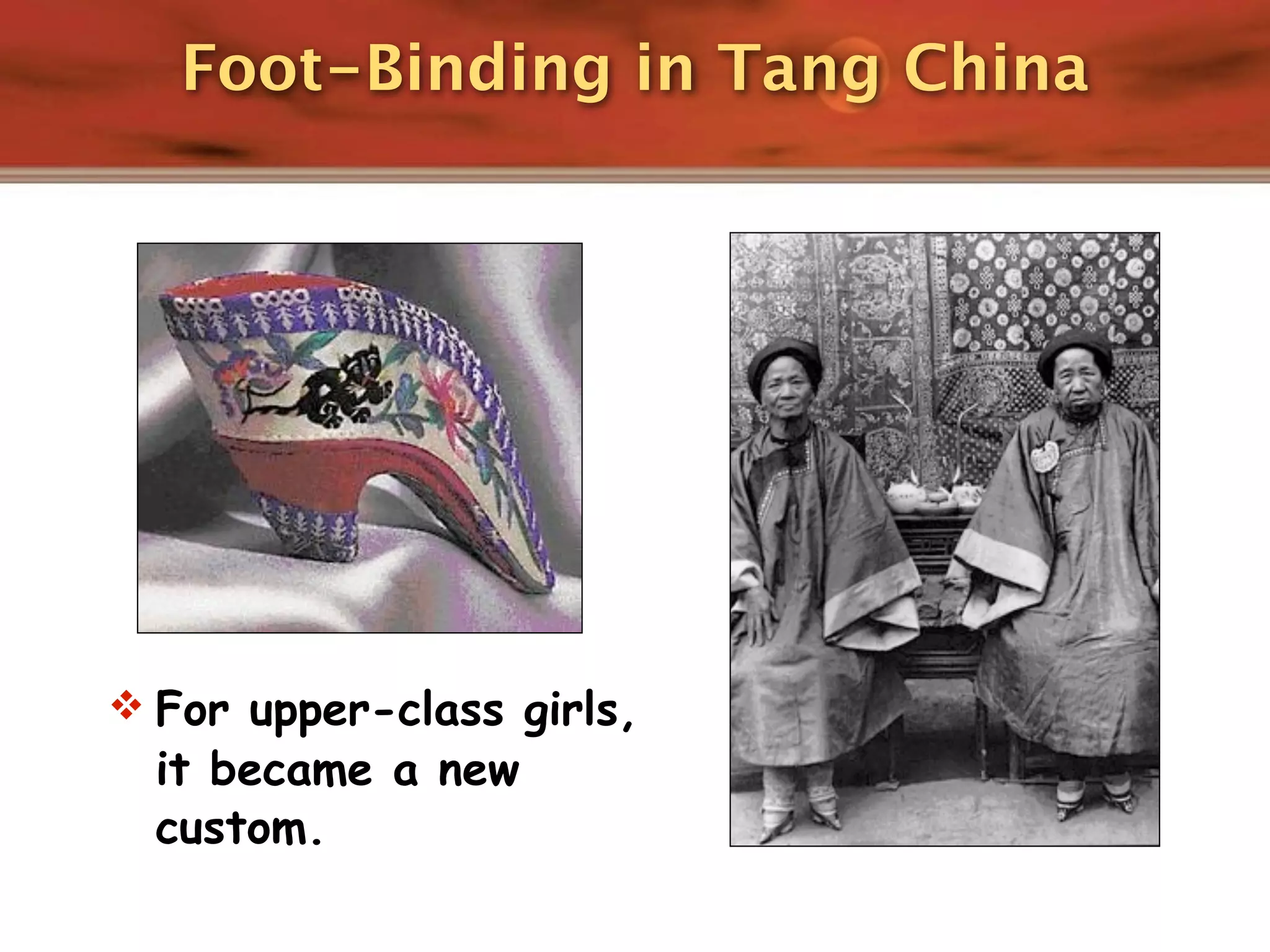
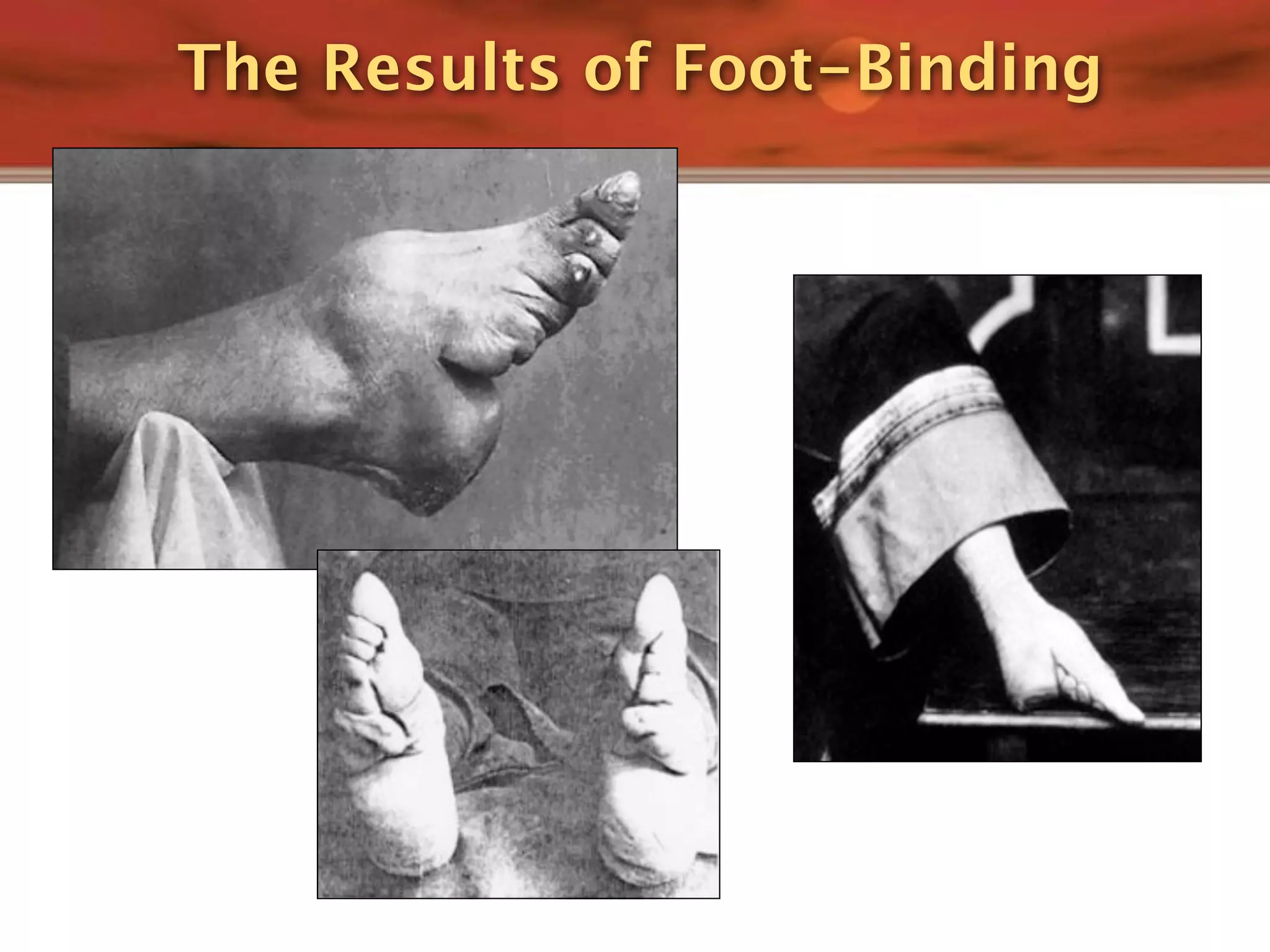
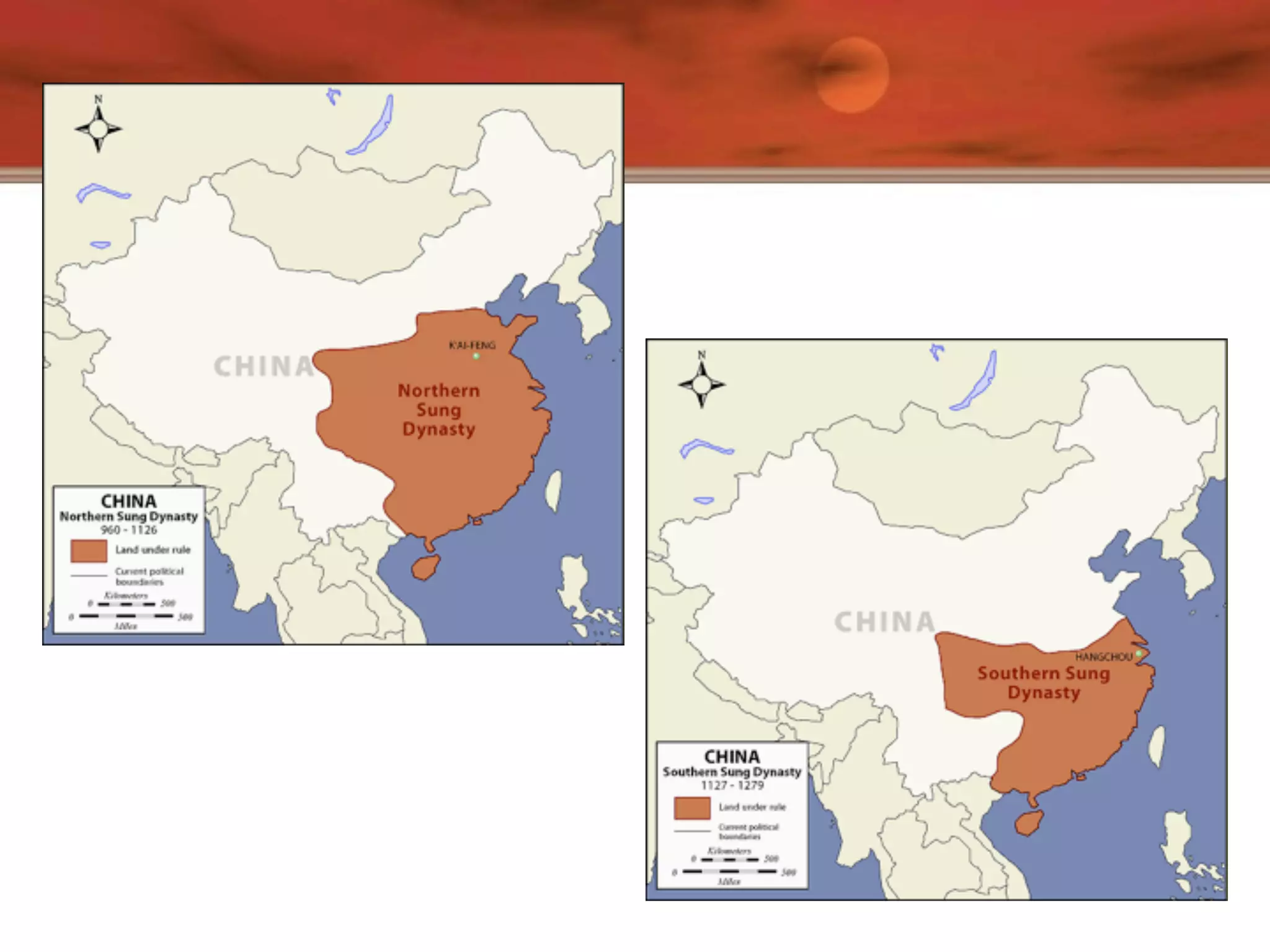
![Song [Sung] Dynasty, 960-1279 C.E.](https://image.slidesharecdn.com/qintoming-111014231542-phpapp02/75/Qinto-ming-81-2048.jpg)
![Song [Sung] Dynasty, 960-1279 C.E.
Creation of an urban, merchant, middle class.](https://image.slidesharecdn.com/qintoming-111014231542-phpapp02/75/Qinto-ming-82-2048.jpg)
![Song [Sung] Dynasty, 960-1279 C.E.
Creation of an urban, merchant, middle class.
Increased emphasis on education & cheaper
availability of printed books.](https://image.slidesharecdn.com/qintoming-111014231542-phpapp02/75/Qinto-ming-83-2048.jpg)
![Song [Sung] Dynasty, 960-1279 C.E.
Creation of an urban, merchant, middle class.
Increased emphasis on education & cheaper
availability of printed books.
Magnetic compass
makes China a great
sea power! ](https://image.slidesharecdn.com/qintoming-111014231542-phpapp02/75/Qinto-ming-84-2048.jpg)
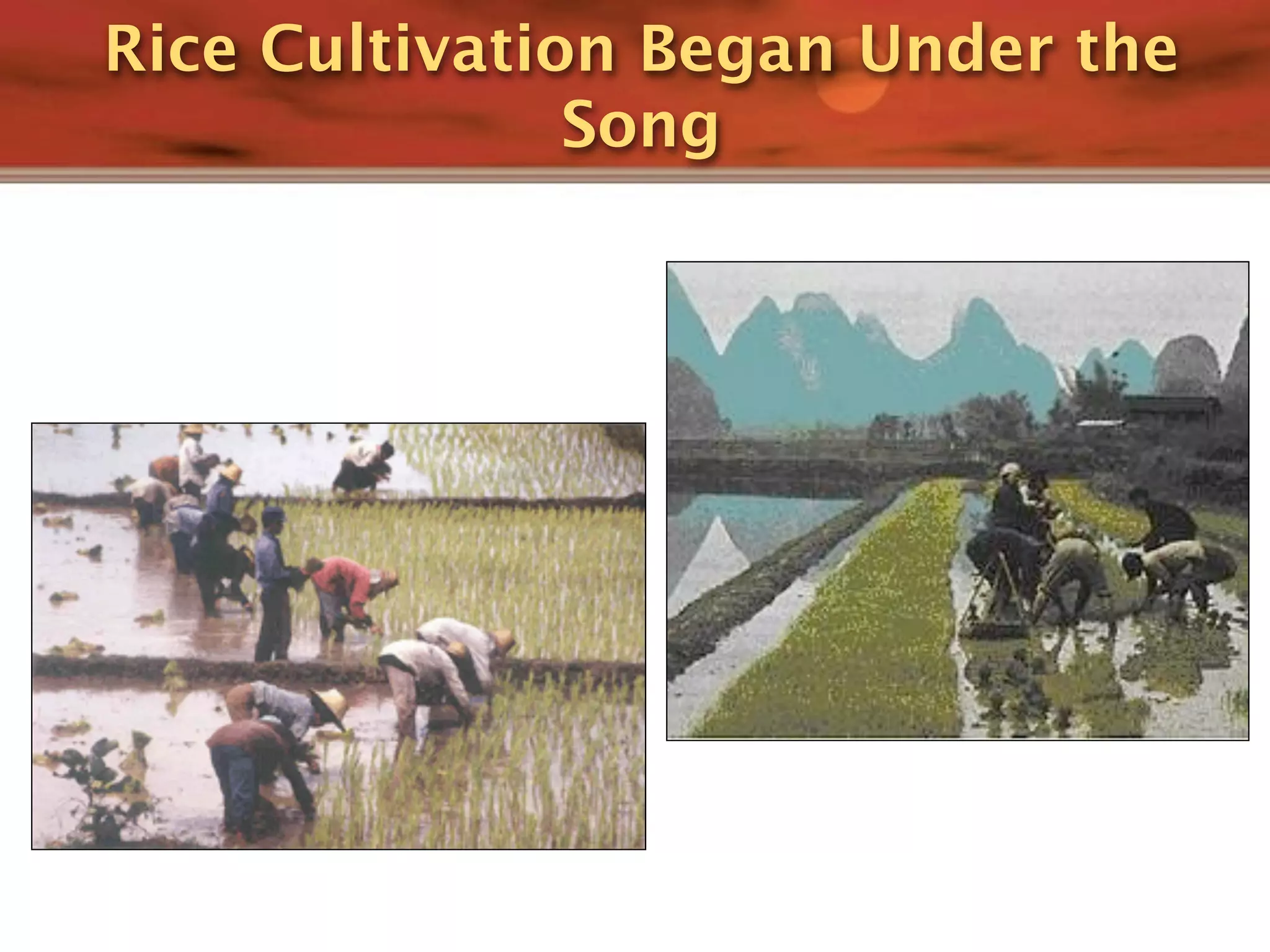


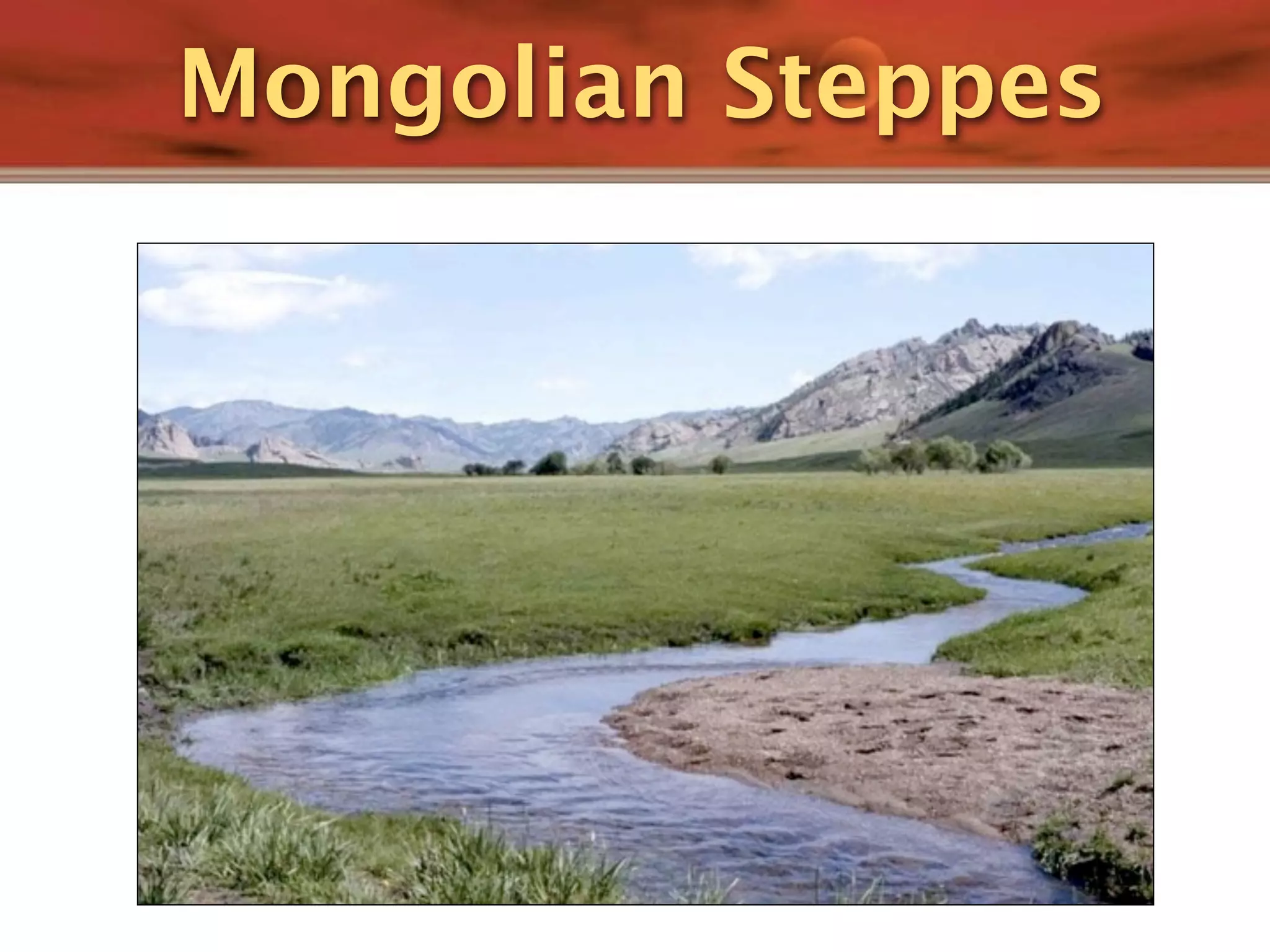
![Xinjiang Region – Typical Uygher
[Mongol] “Yurt”](https://image.slidesharecdn.com/qintoming-111014231542-phpapp02/75/Qinto-ming-89-2048.jpg)
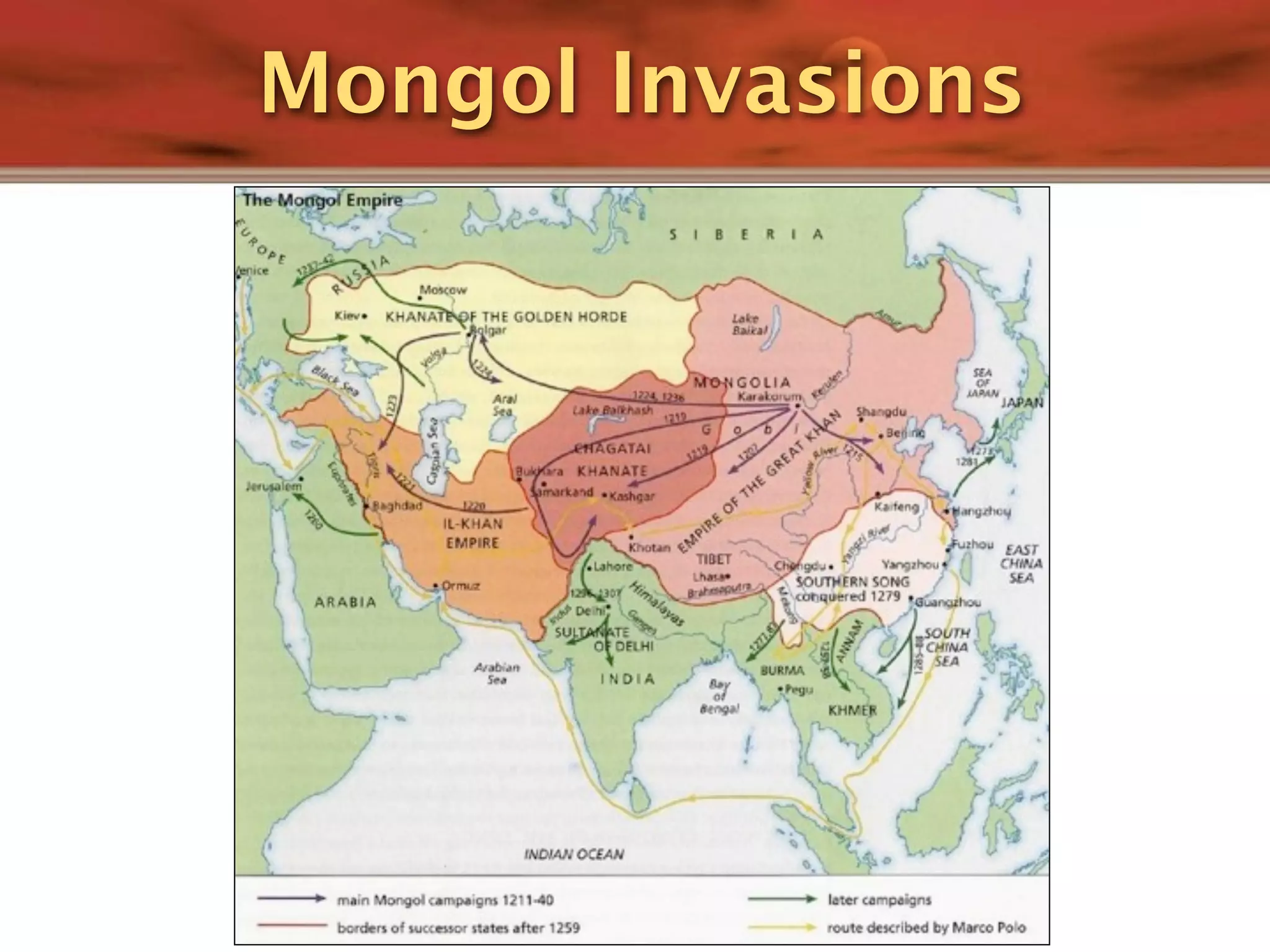
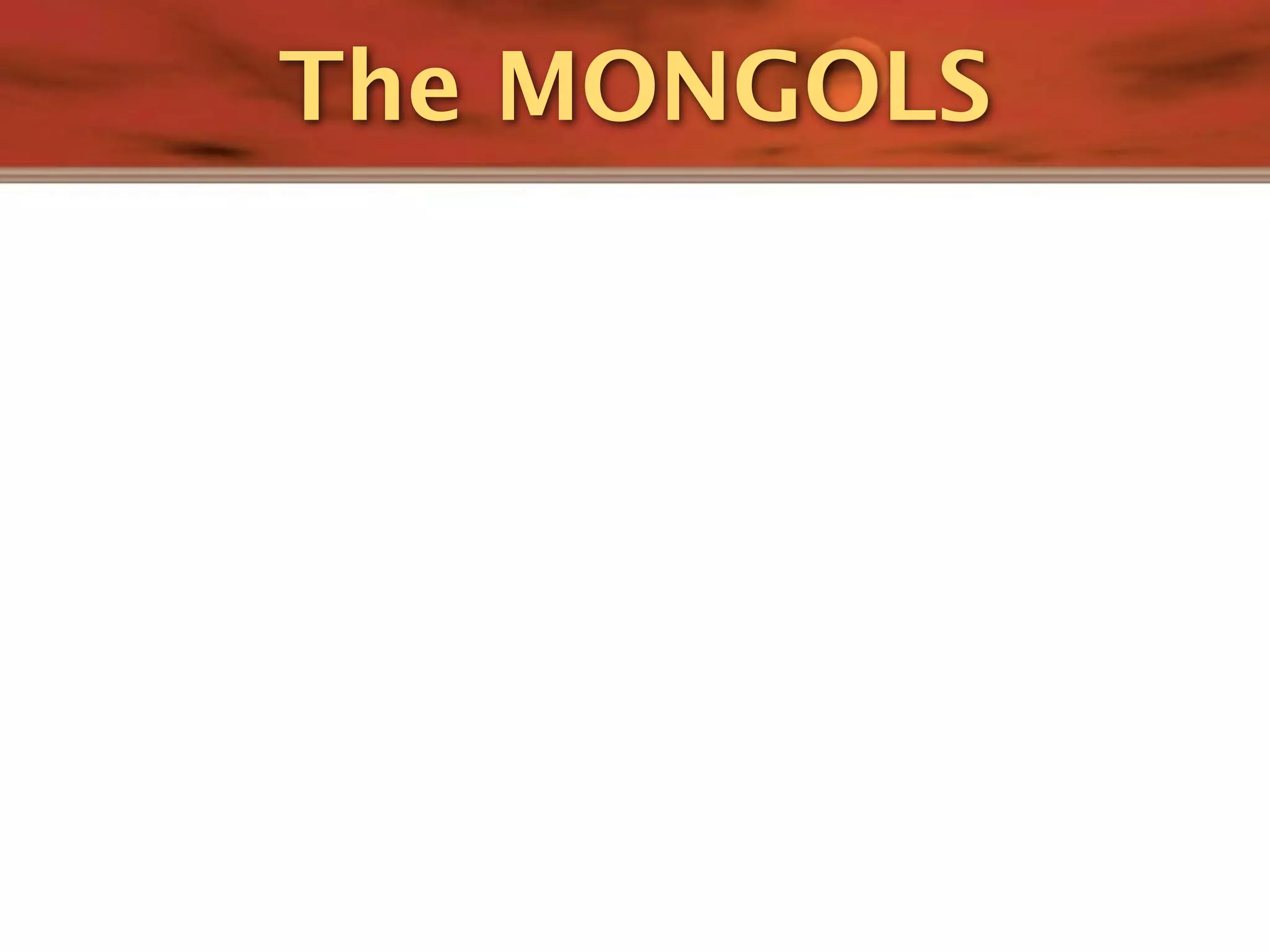
![The MONGOLS
Temujin --> Genghis Khan [“Universal Ruler”]](https://image.slidesharecdn.com/qintoming-111014231542-phpapp02/75/Qinto-ming-92-2048.jpg)
![The MONGOLS
Temujin --> Genghis Khan [“Universal Ruler”]
1162 - 1227](https://image.slidesharecdn.com/qintoming-111014231542-phpapp02/75/Qinto-ming-93-2048.jpg)
![The MONGOLS
Temujin --> Genghis Khan [“Universal Ruler”]
1162 - 1227
from the steppe [dry, grass-covered plains
of Central Asia]](https://image.slidesharecdn.com/qintoming-111014231542-phpapp02/75/Qinto-ming-94-2048.jpg)
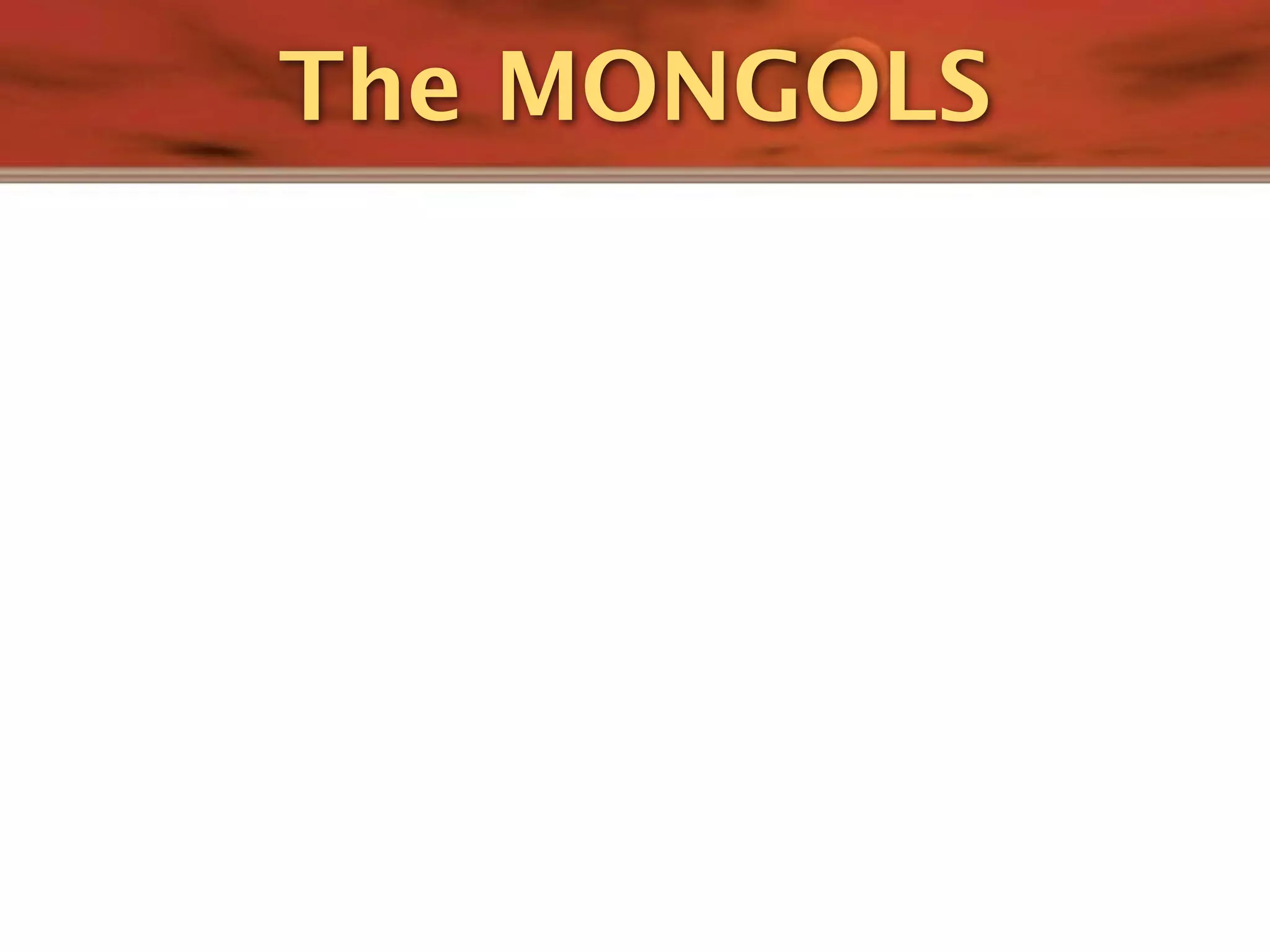
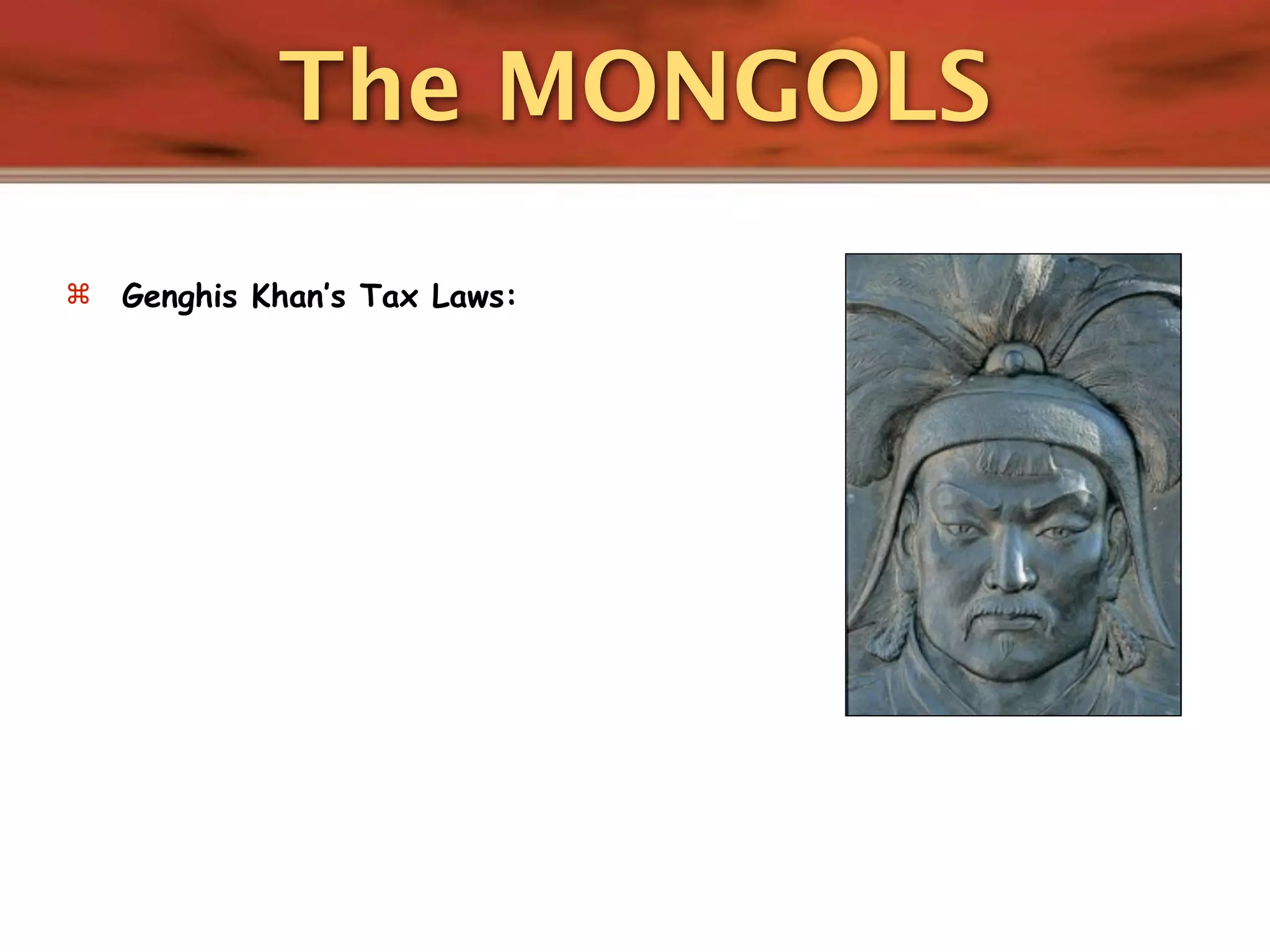

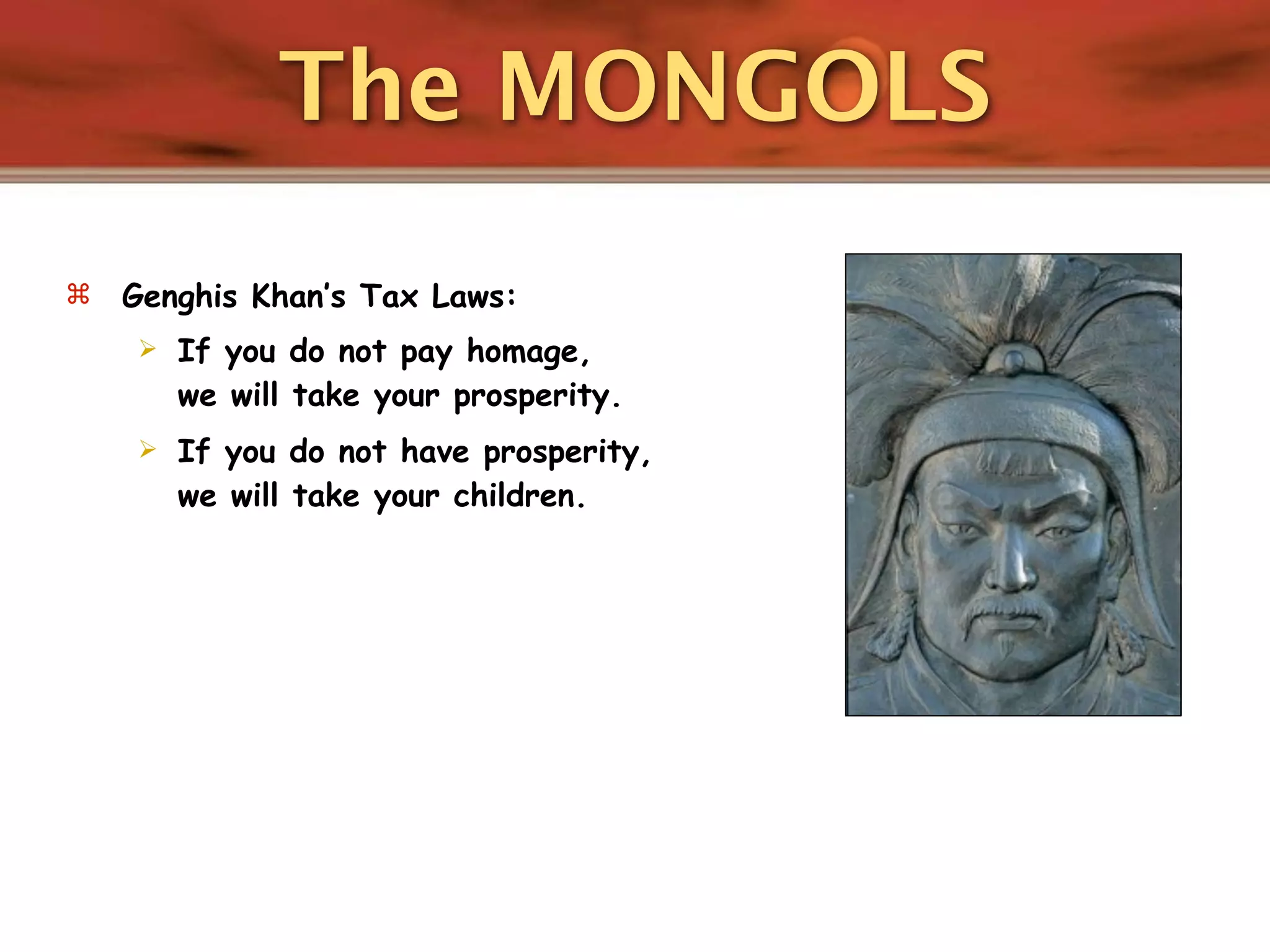
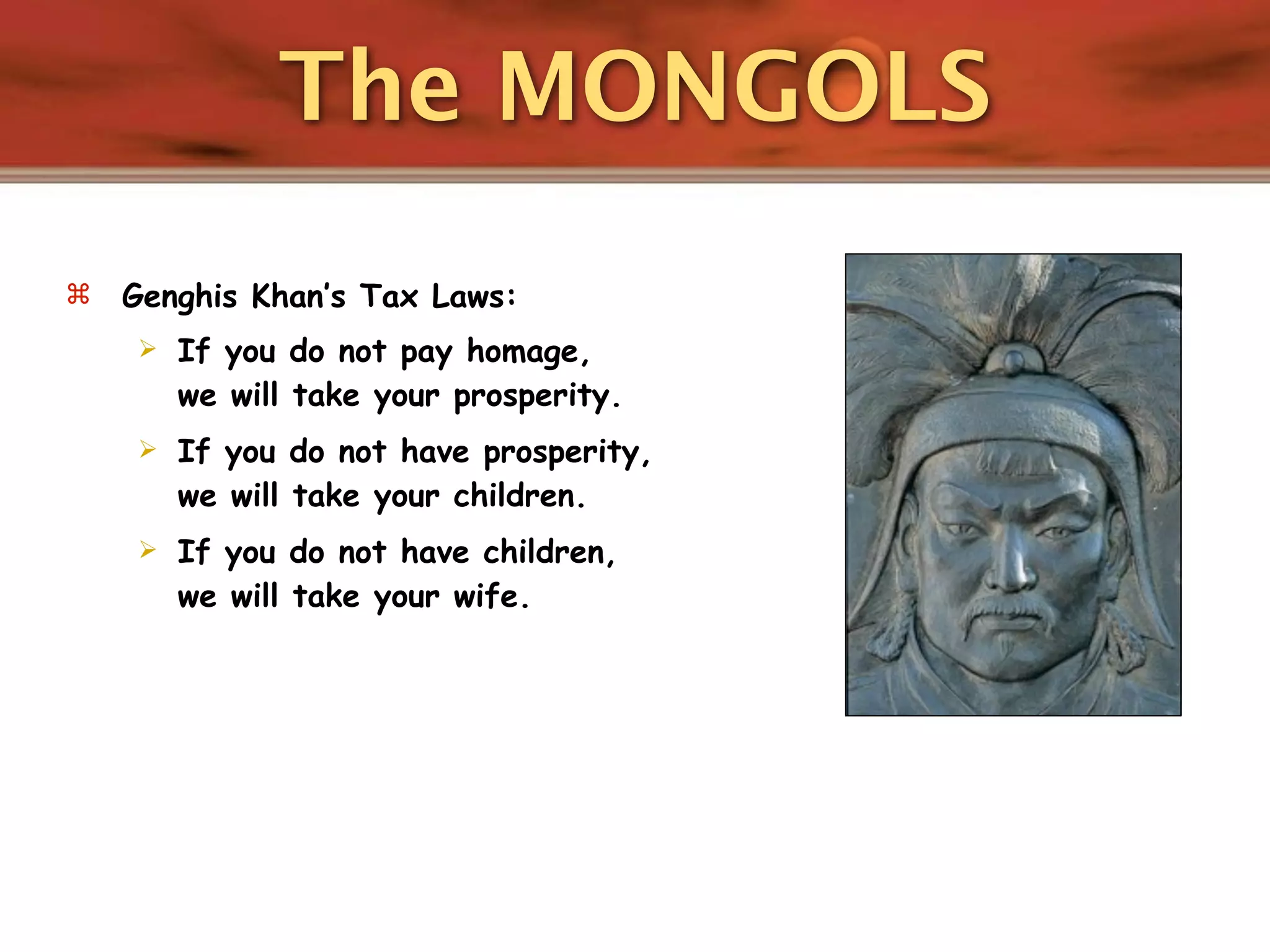
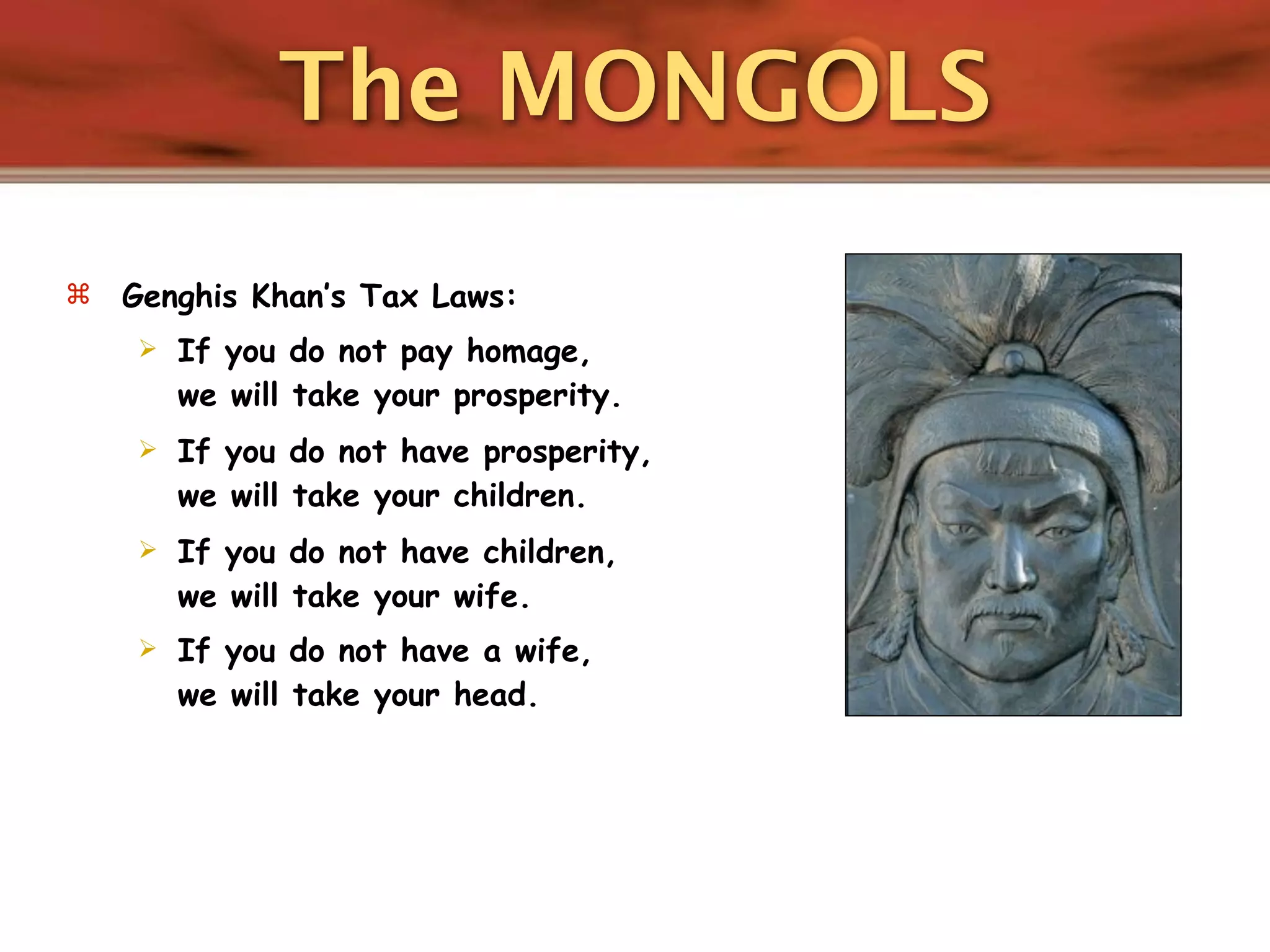

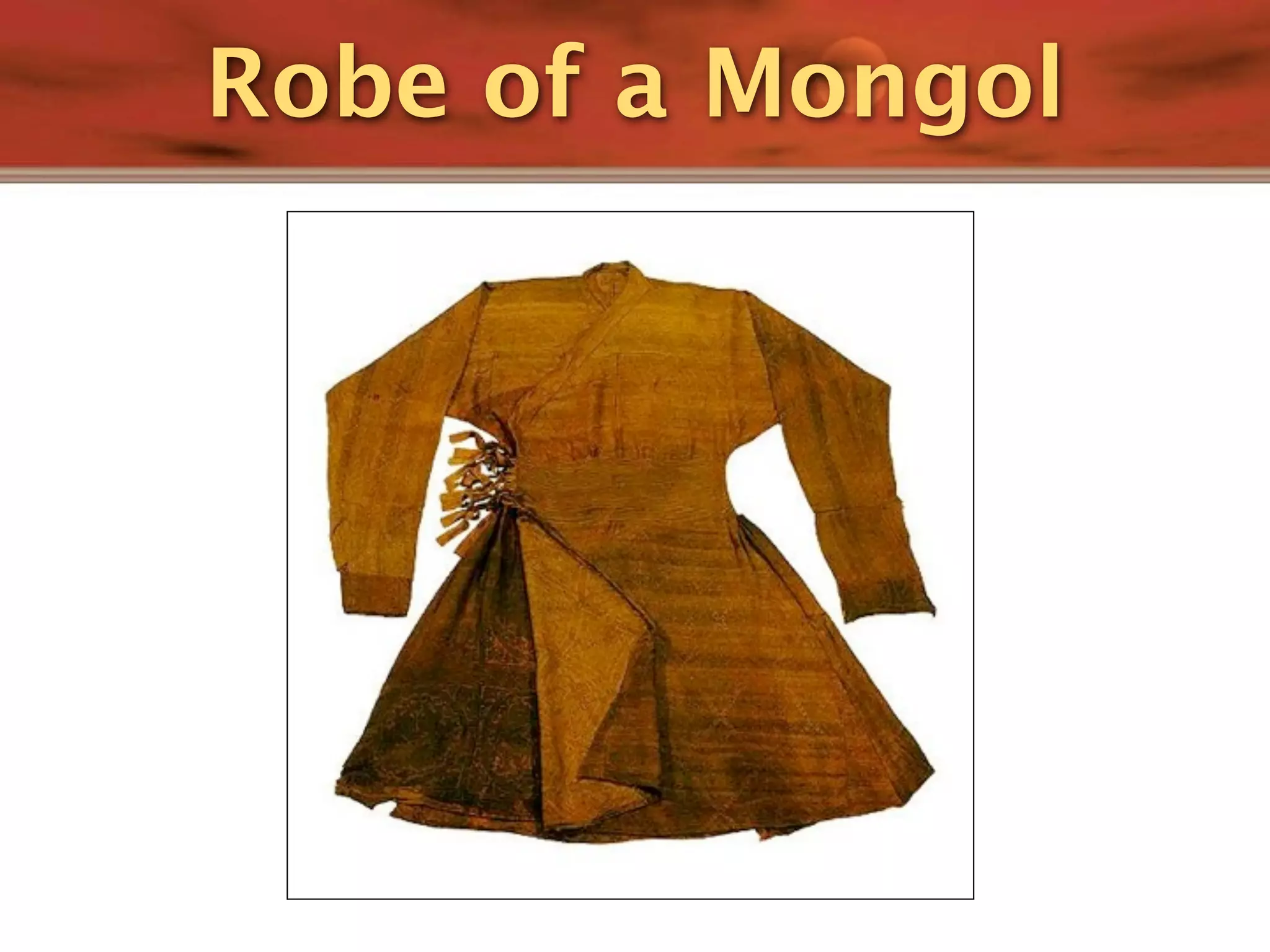
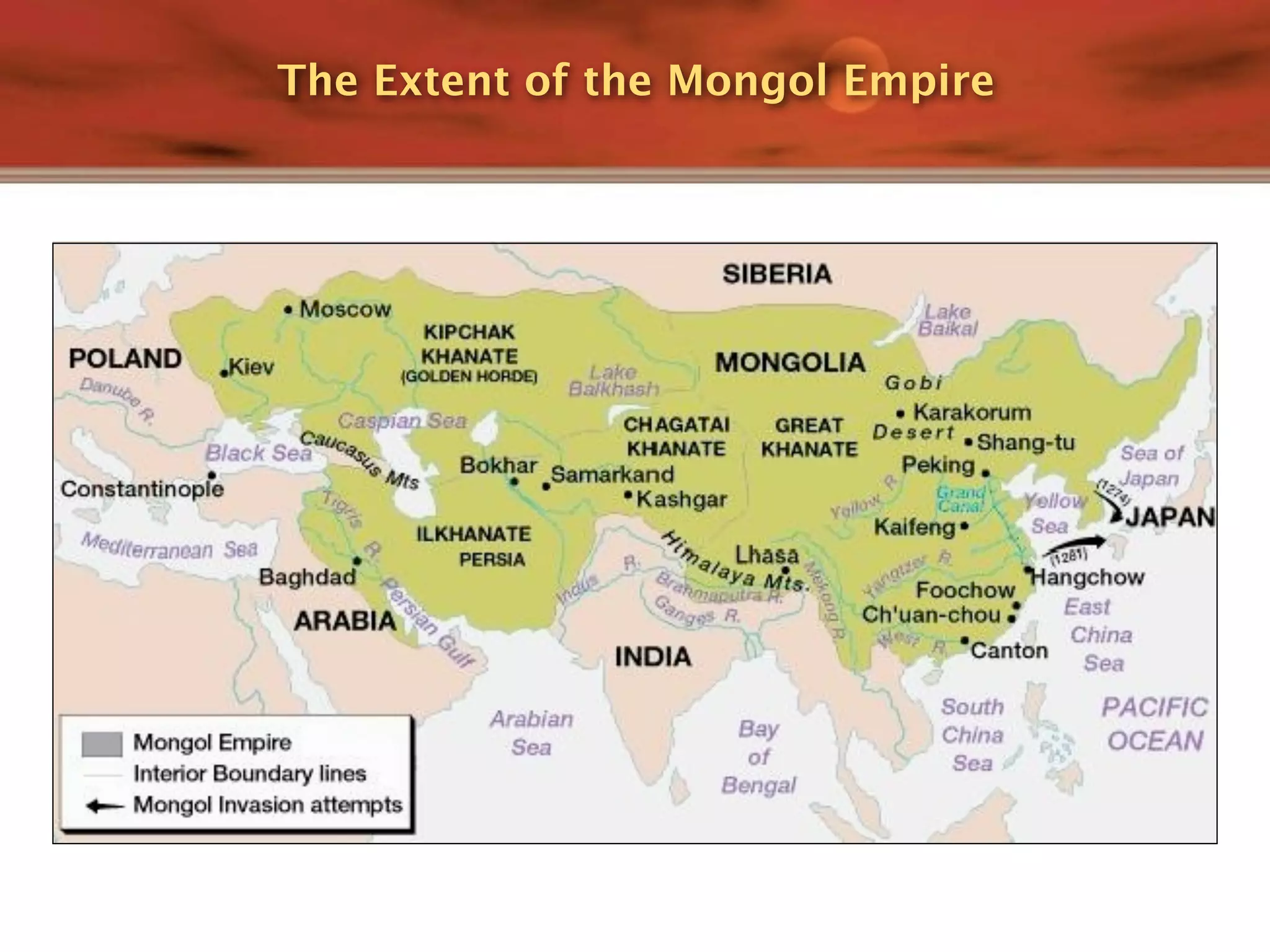
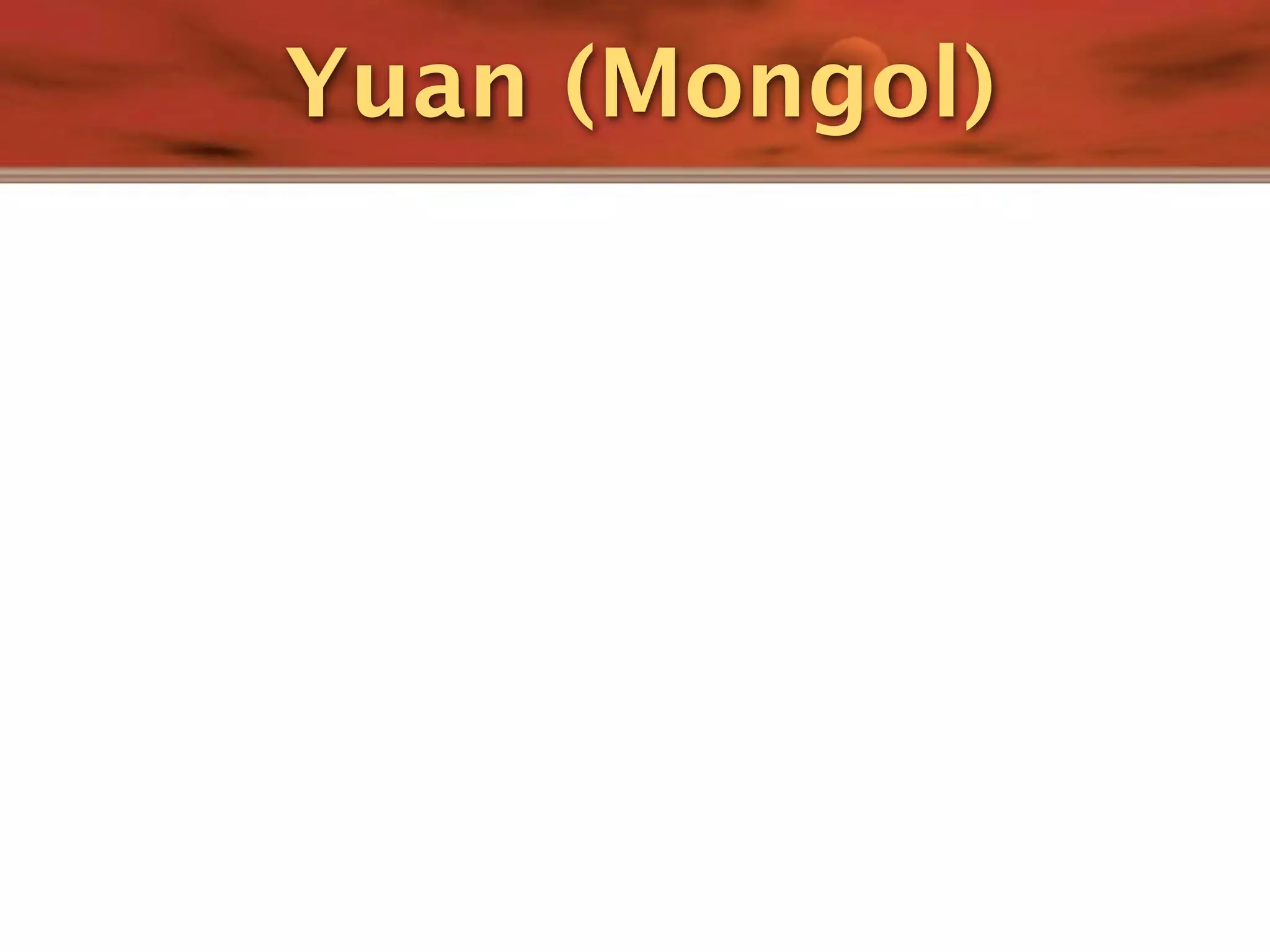
![Yuan (Mongol)
Kublai Khan [r. 1260-1294]](https://image.slidesharecdn.com/qintoming-111014231542-phpapp02/75/Qinto-ming-105-2048.jpg)
![Yuan (Mongol)
Kublai Khan [r. 1260-1294]
Pax Mongolica [“Mongol Peace”]](https://image.slidesharecdn.com/qintoming-111014231542-phpapp02/75/Qinto-ming-106-2048.jpg)
![Yuan (Mongol)
Kublai Khan [r. 1260-1294]
Pax Mongolica [“Mongol Peace”]
Tolerated Chinese culture
but lived apart from them. ](https://image.slidesharecdn.com/qintoming-111014231542-phpapp02/75/Qinto-ming-107-2048.jpg)
![Yuan (Mongol)
Kublai Khan [r. 1260-1294]
Pax Mongolica [“Mongol Peace”]
Tolerated Chinese culture
but lived apart from them.
No Chinese in top govt. posts.](https://image.slidesharecdn.com/qintoming-111014231542-phpapp02/75/Qinto-ming-108-2048.jpg)
![Yuan (Mongol)
Kublai Khan [r. 1260-1294]
Pax Mongolica [“Mongol Peace”]
Tolerated Chinese culture
but lived apart from them.
No Chinese in top govt. posts.
Believed foreigner were more
trustworthy.](https://image.slidesharecdn.com/qintoming-111014231542-phpapp02/75/Qinto-ming-109-2048.jpg)
![Yuan (Mongol)
Kublai Khan [r. 1260-1294]
Pax Mongolica [“Mongol Peace”]
Tolerated Chinese culture
but lived apart from them.
No Chinese in top govt. posts.
Believed foreigner were more
trustworthy.
Encouraged foreign trade &
foreign merchants to live and work
in China.](https://image.slidesharecdn.com/qintoming-111014231542-phpapp02/75/Qinto-ming-110-2048.jpg)
![Yuan (Mongol)
Kublai Khan [r. 1260-1294]
Pax Mongolica [“Mongol Peace”]
Tolerated Chinese culture
but lived apart from them.
No Chinese in top govt. posts.
Believed foreigner were more
trustworthy.
Encouraged foreign trade &
foreign merchants to live and work
in China.
Marco Polo](https://image.slidesharecdn.com/qintoming-111014231542-phpapp02/75/Qinto-ming-111-2048.jpg)
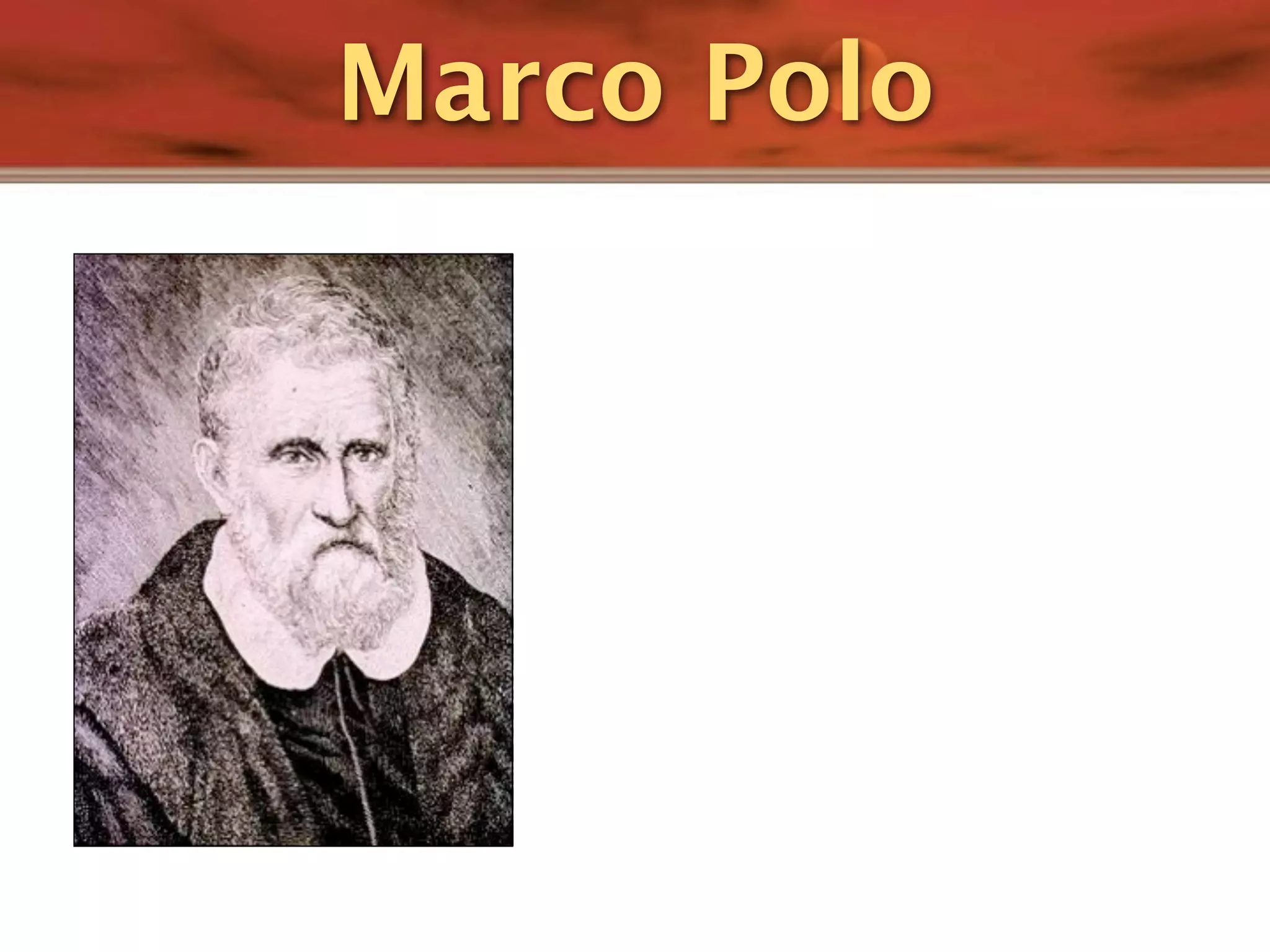
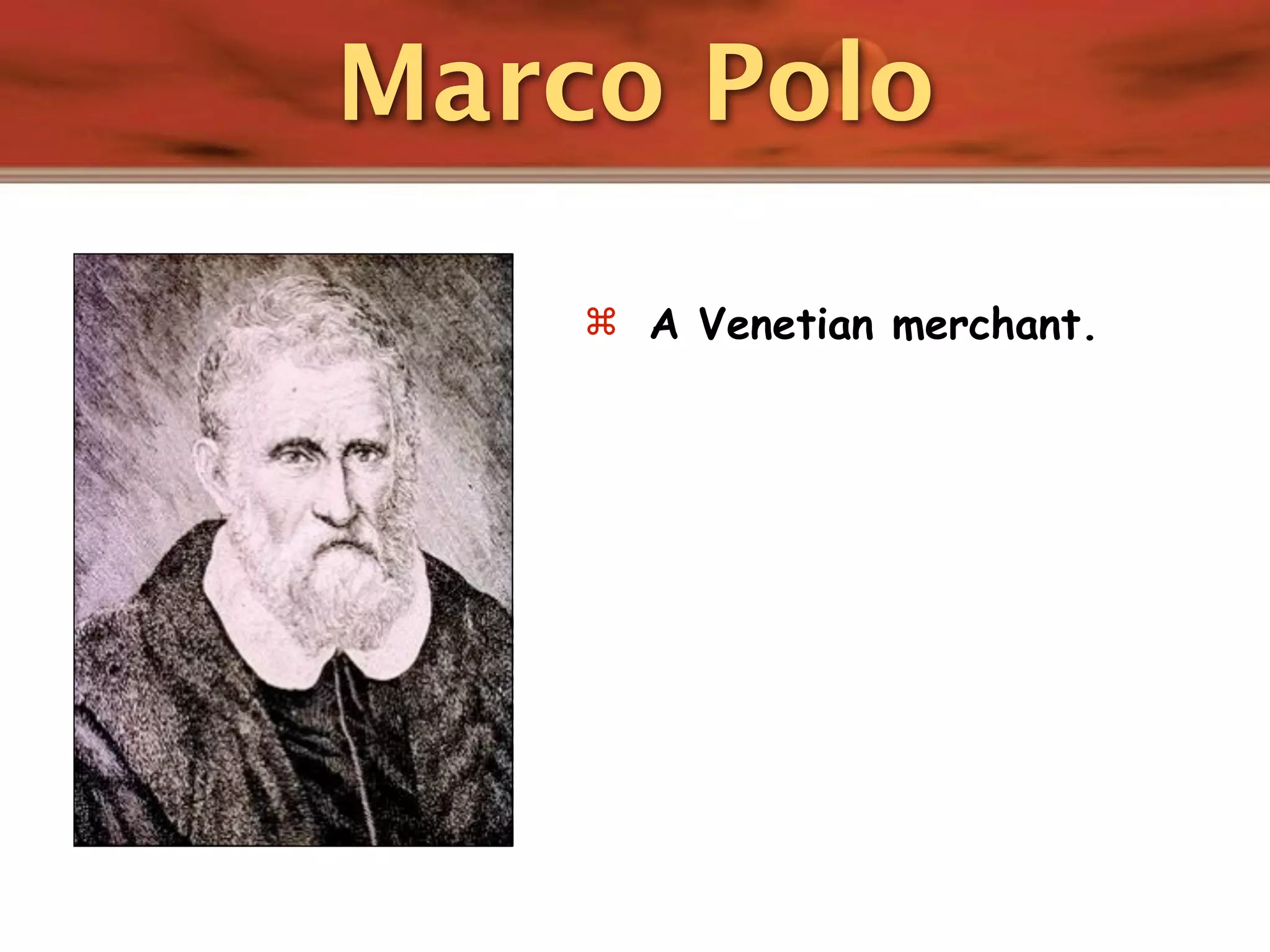

![Marco Polo
A Venetian merchant.
Traveled through Yuan
China: 1271-1295
“Black Stones” [coal]](https://image.slidesharecdn.com/qintoming-111014231542-phpapp02/75/Qinto-ming-115-2048.jpg)
![Marco Polo
A Venetian merchant.
Traveled through Yuan
China: 1271-1295
“Black Stones” [coal]
Gunpowder.](https://image.slidesharecdn.com/qintoming-111014231542-phpapp02/75/Qinto-ming-116-2048.jpg)
![Marco Polo
A Venetian merchant.
Traveled through Yuan
China: 1271-1295
“Black Stones” [coal]
Gunpowder.
Noodles.](https://image.slidesharecdn.com/qintoming-111014231542-phpapp02/75/Qinto-ming-117-2048.jpg)
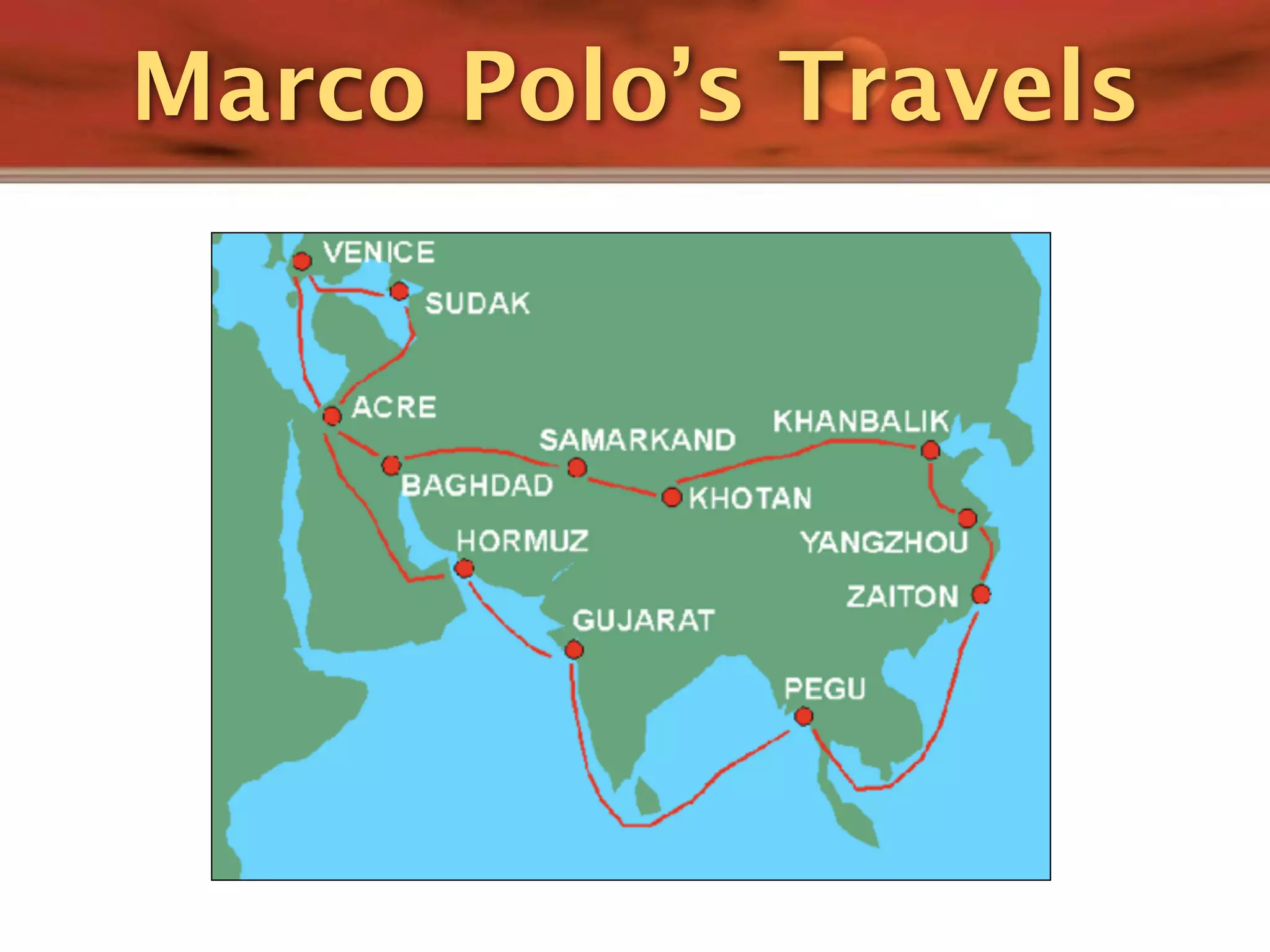

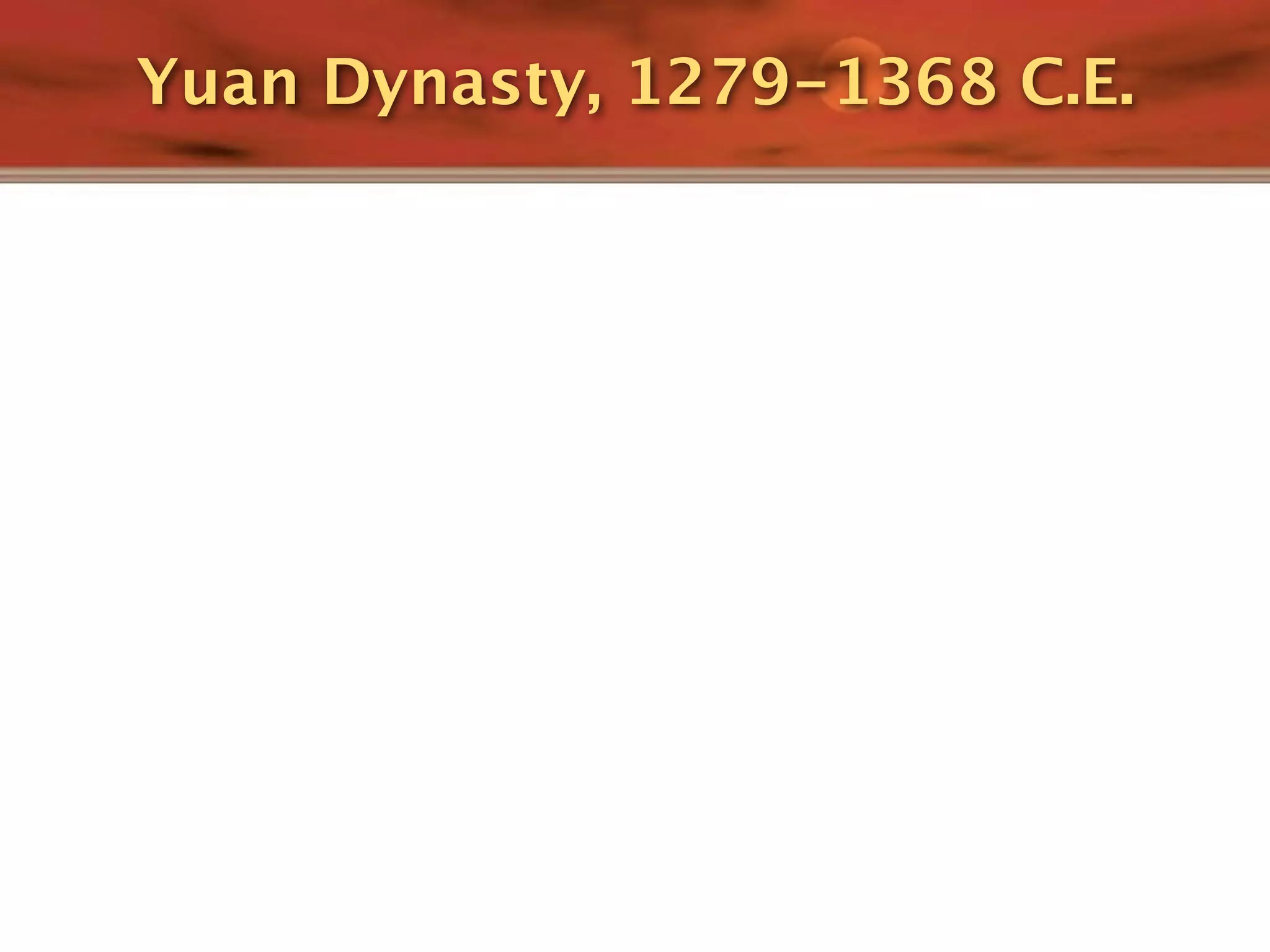
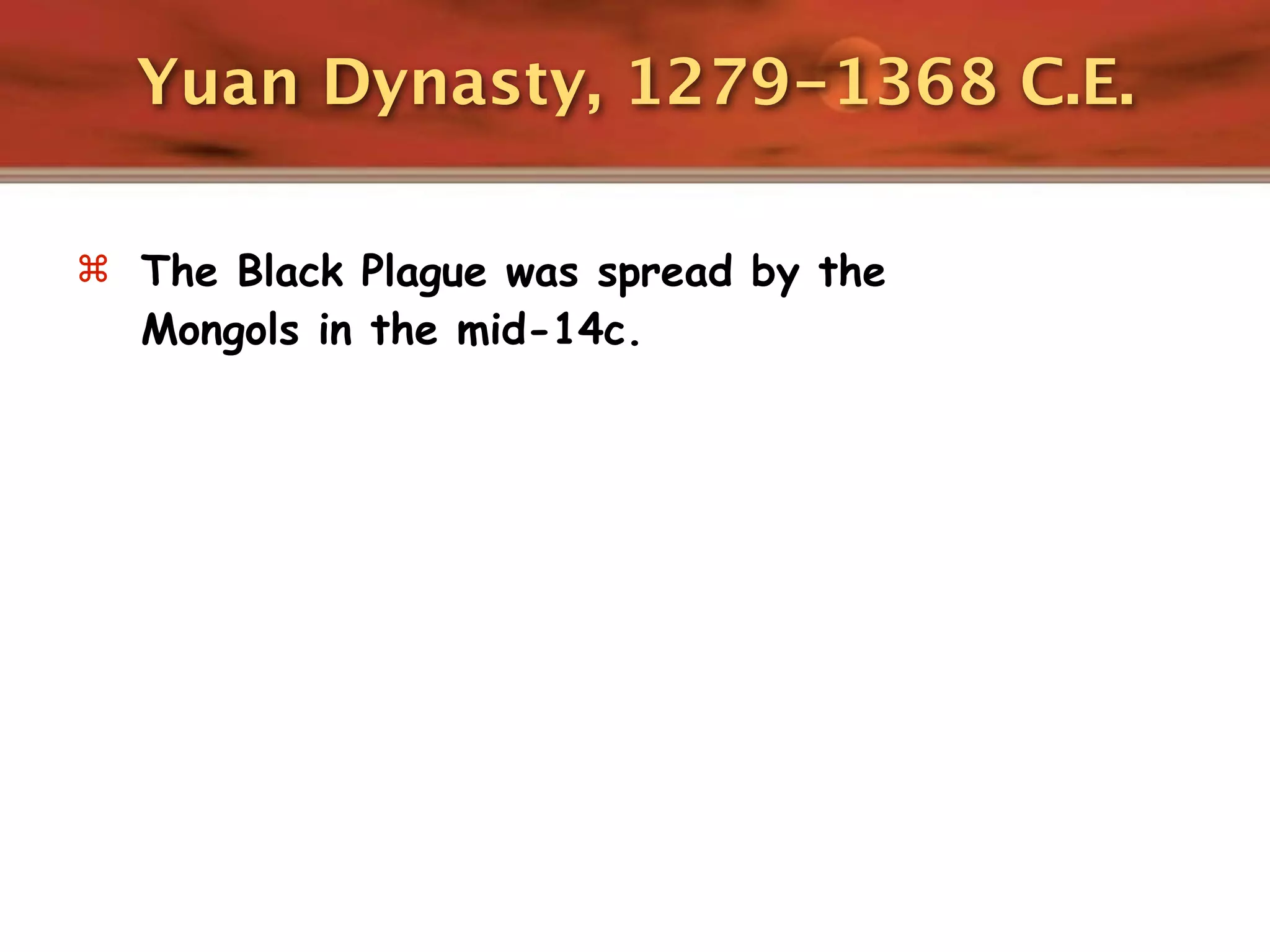
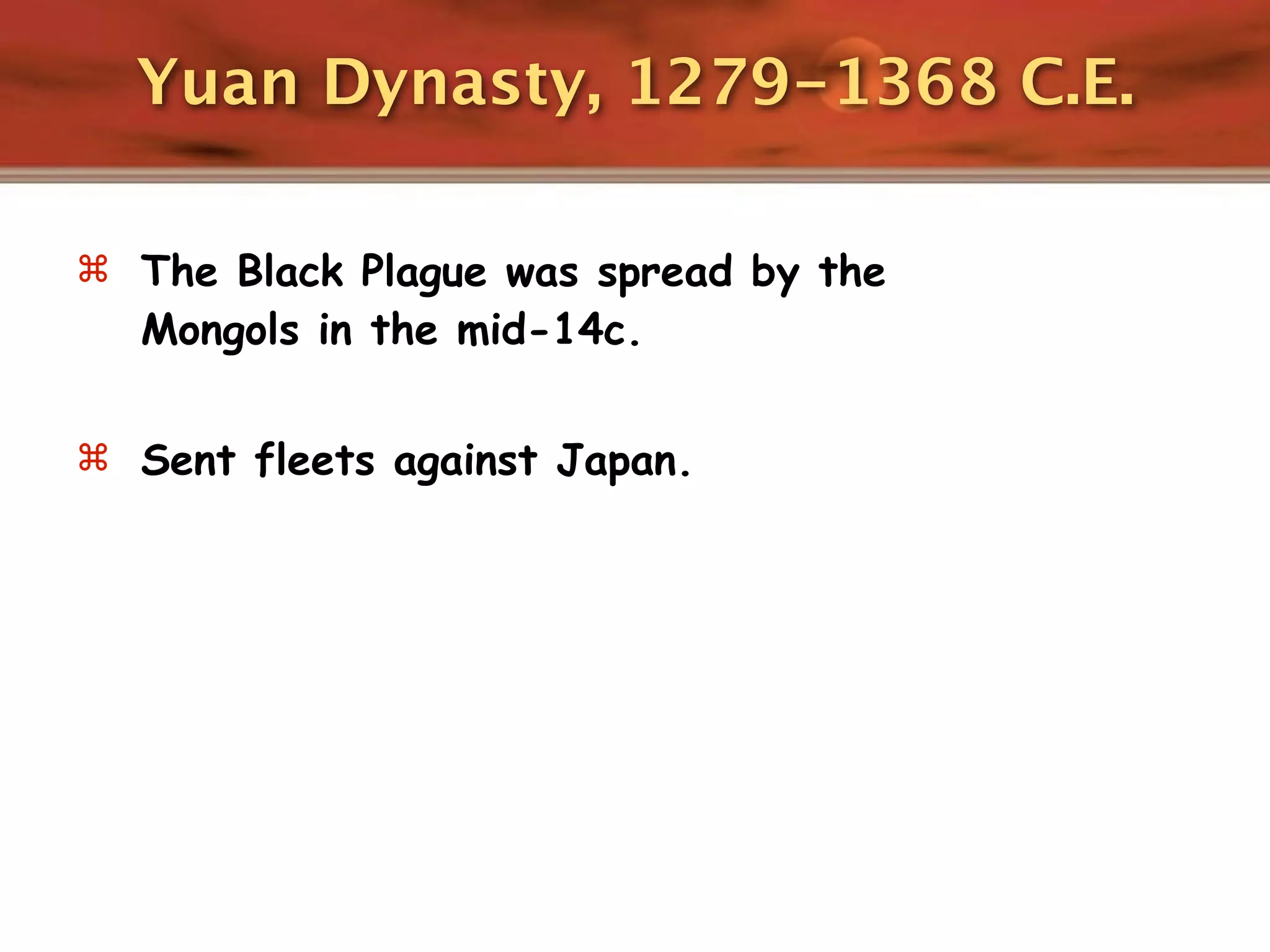
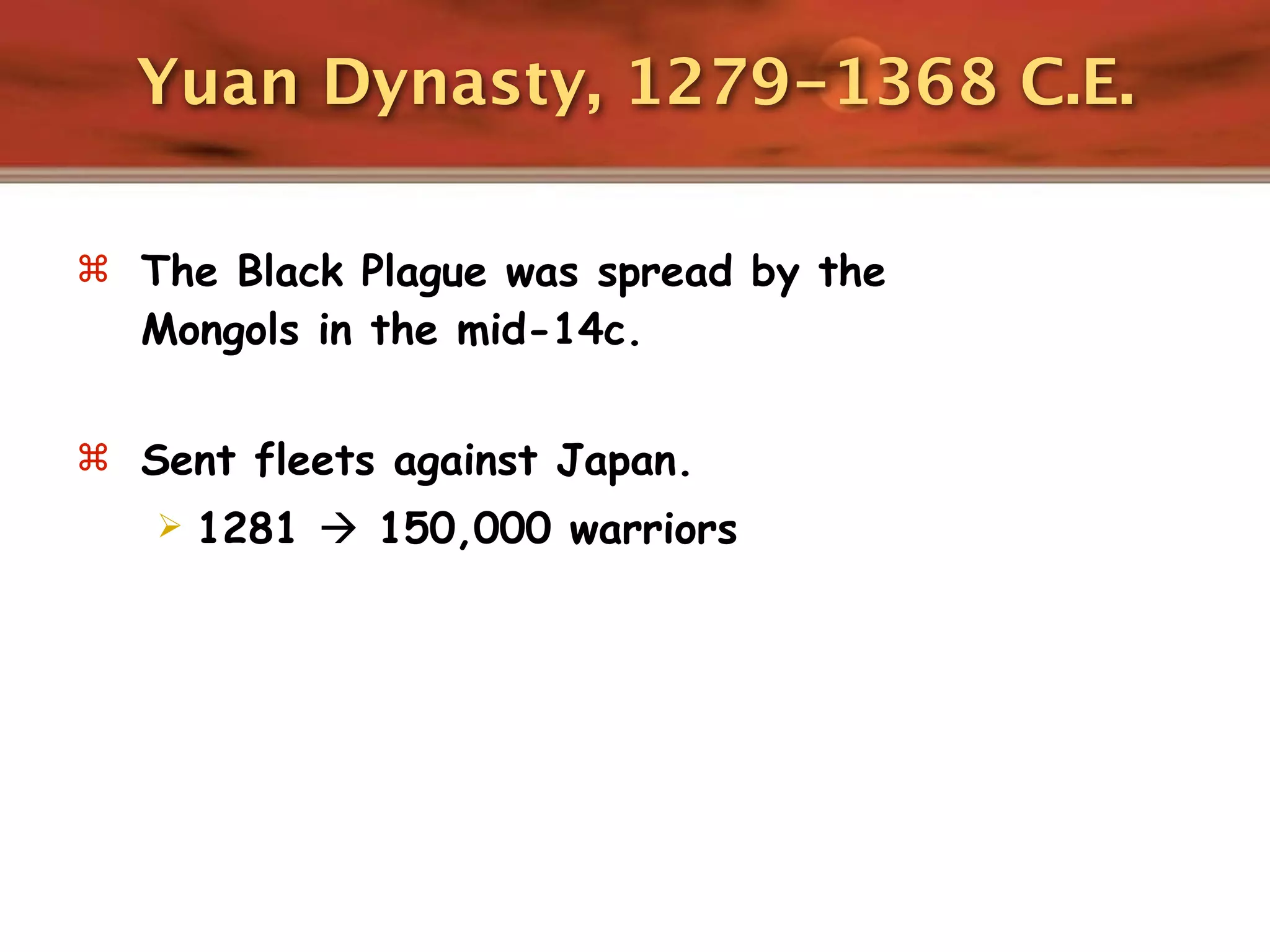
![Yuan Dynasty, 1279-1368 C.E.
The Black Plague was spread by the
Mongols in the mid-14c.
Sent fleets against Japan.
1281 150,000 warriors
Defeated by kamikazi [“winds of the gods”] ](https://image.slidesharecdn.com/qintoming-111014231542-phpapp02/75/Qinto-ming-124-2048.jpg)
![Yuan Dynasty, 1279-1368 C.E.
The Black Plague was spread by the
Mongols in the mid-14c.
Sent fleets against Japan.
1281 150,000 warriors
Defeated by kamikazi [“winds of the gods”]
Kublai Khan experienced several
humiliating defeats in Southeast Asia
late in his life.](https://image.slidesharecdn.com/qintoming-111014231542-phpapp02/75/Qinto-ming-125-2048.jpg)

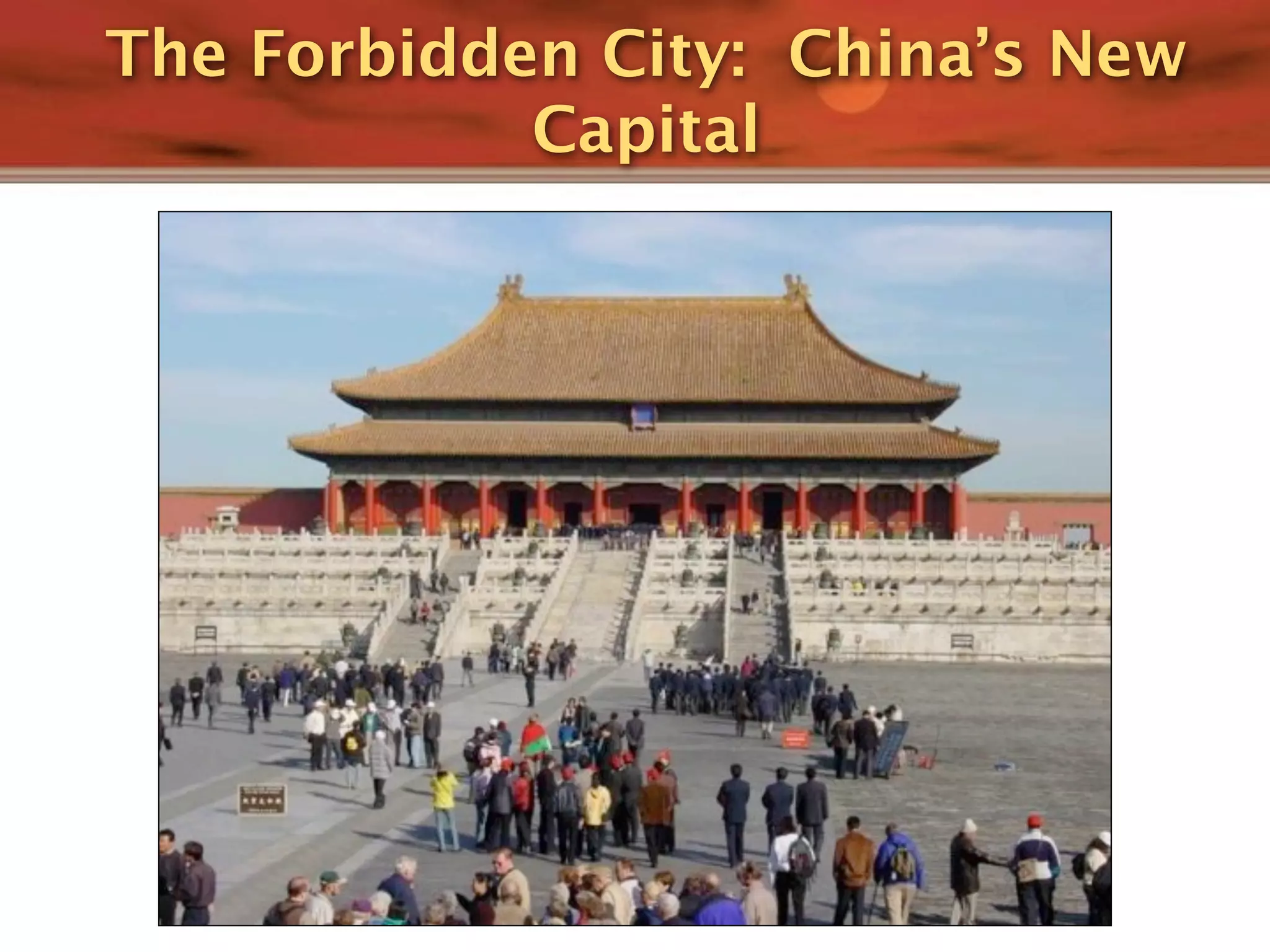
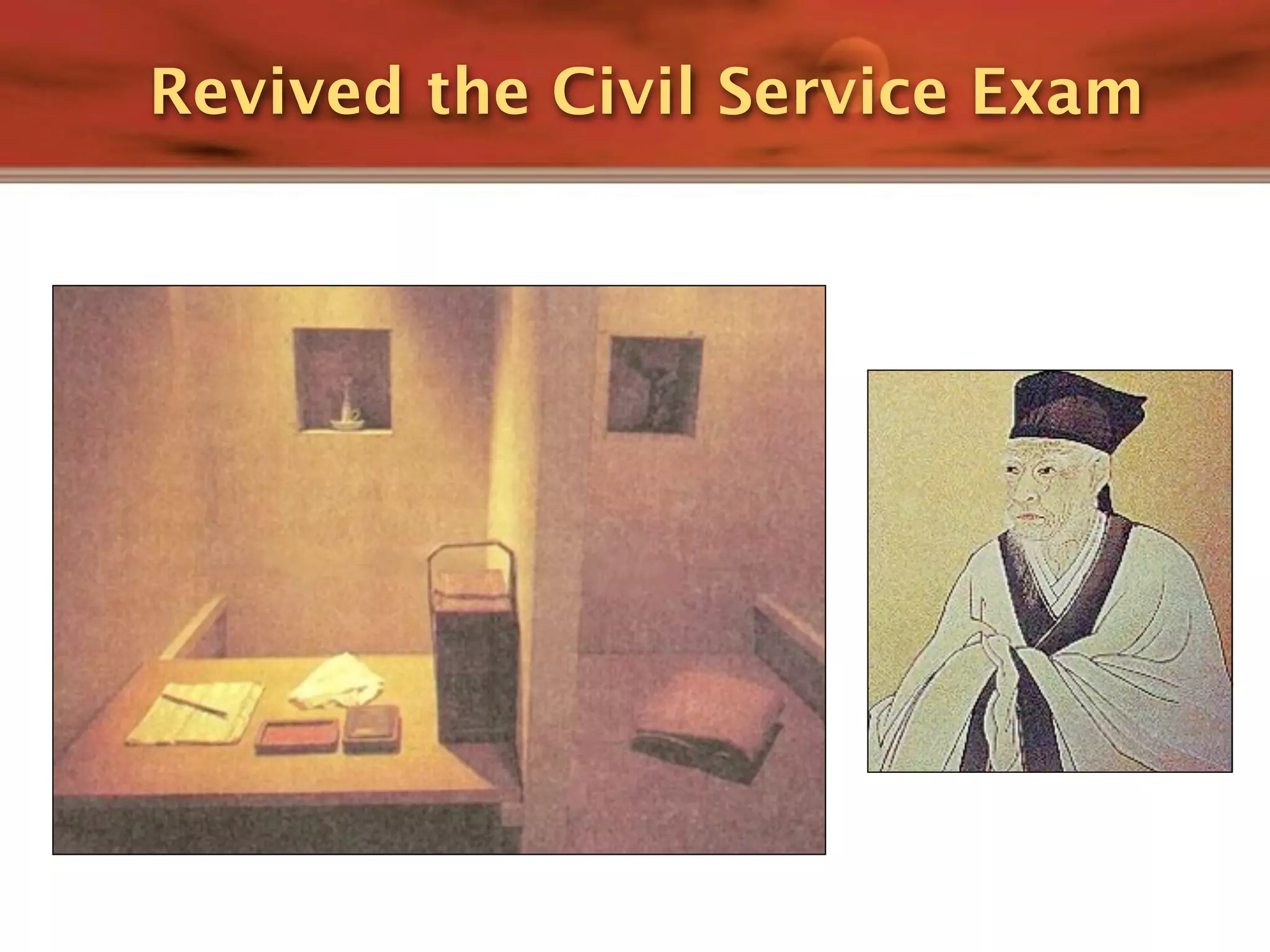
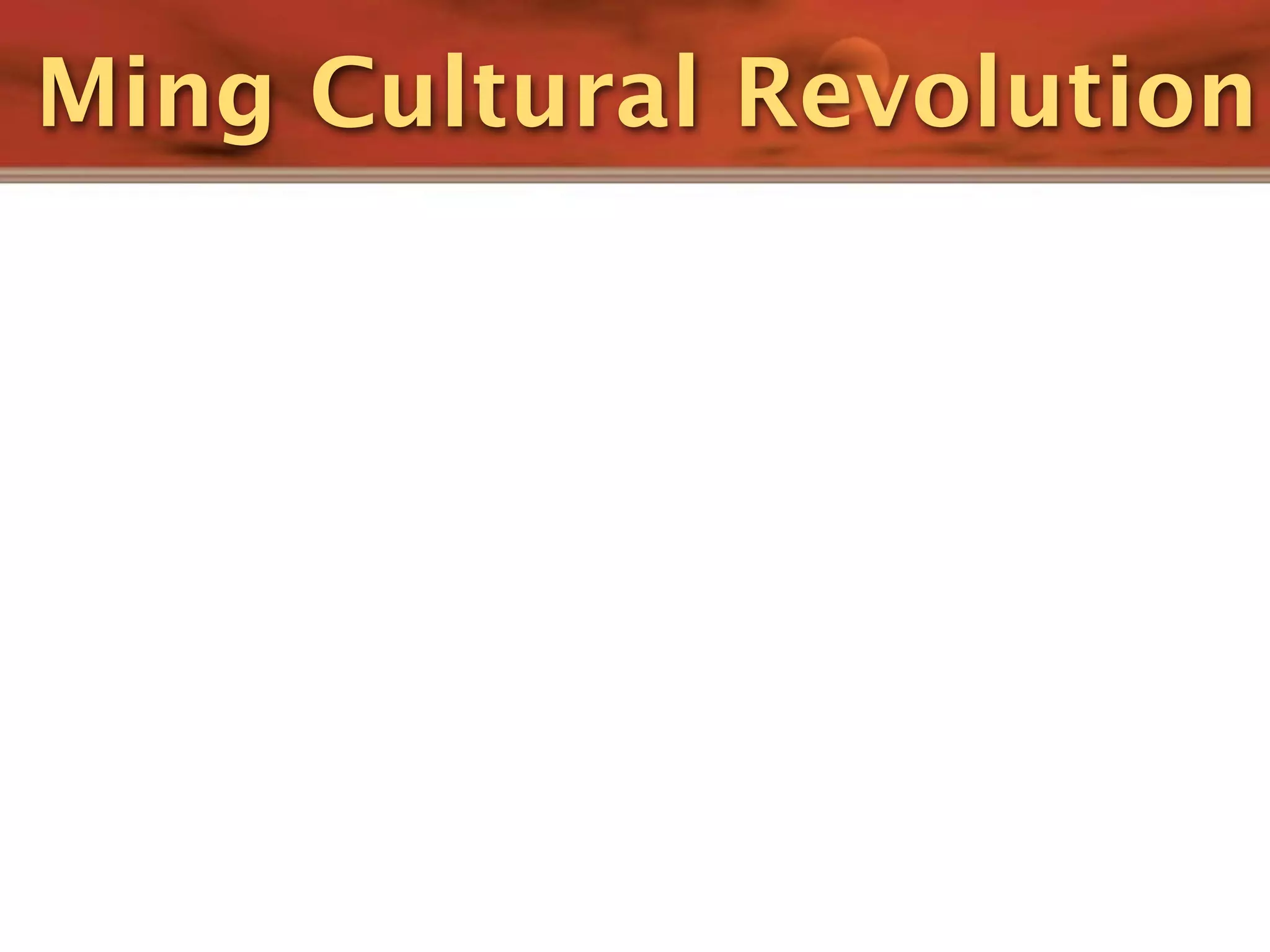
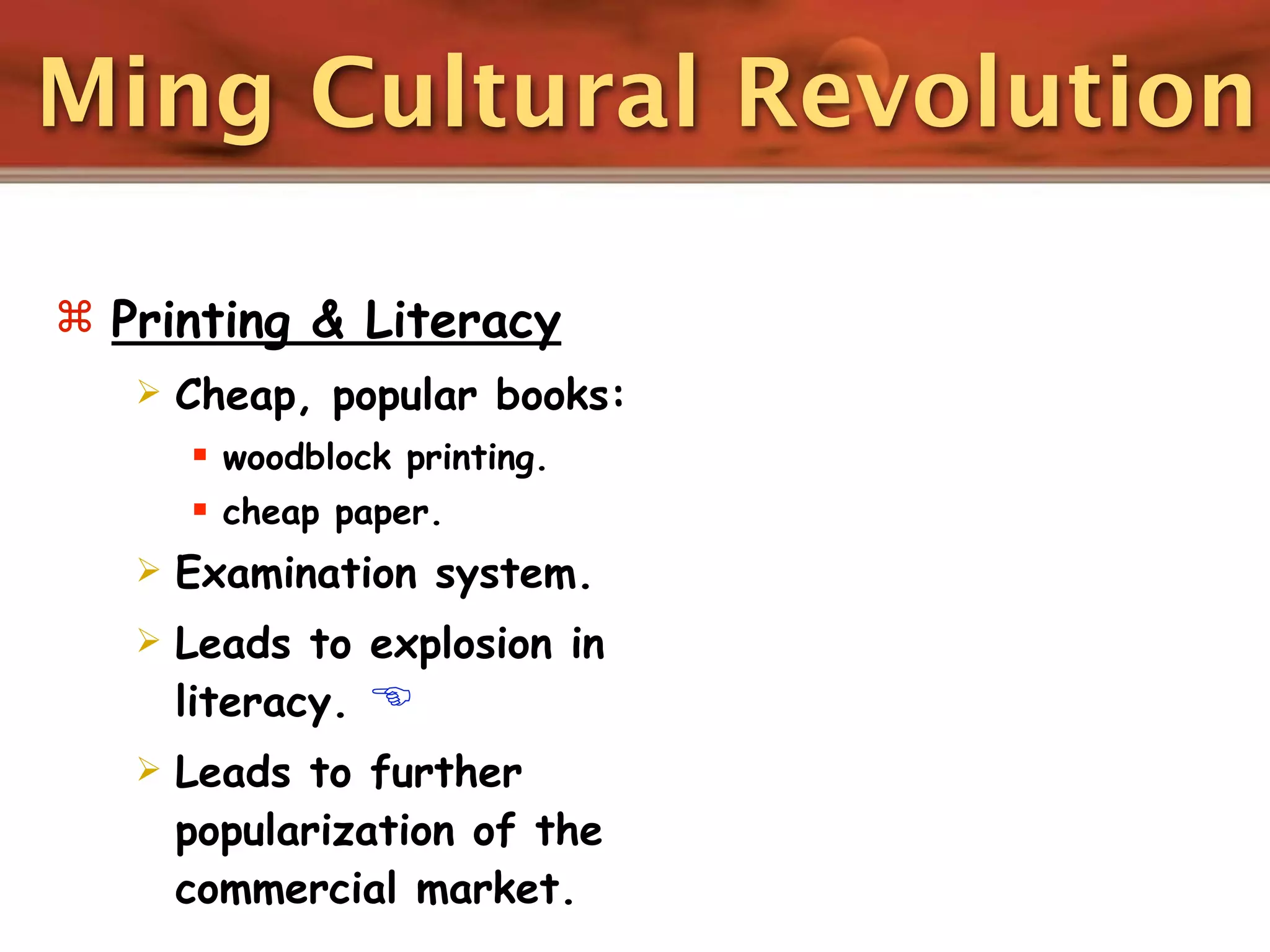
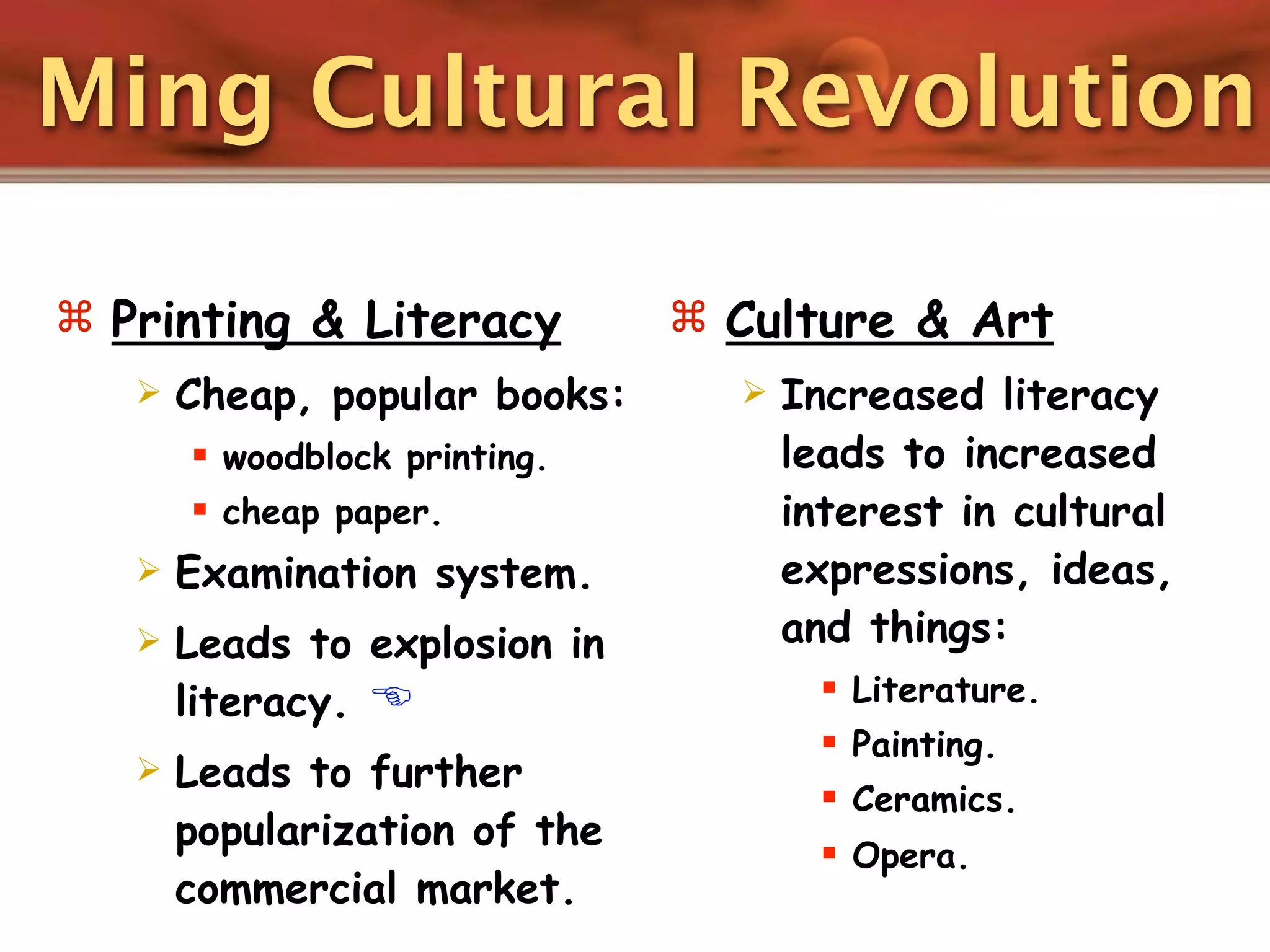
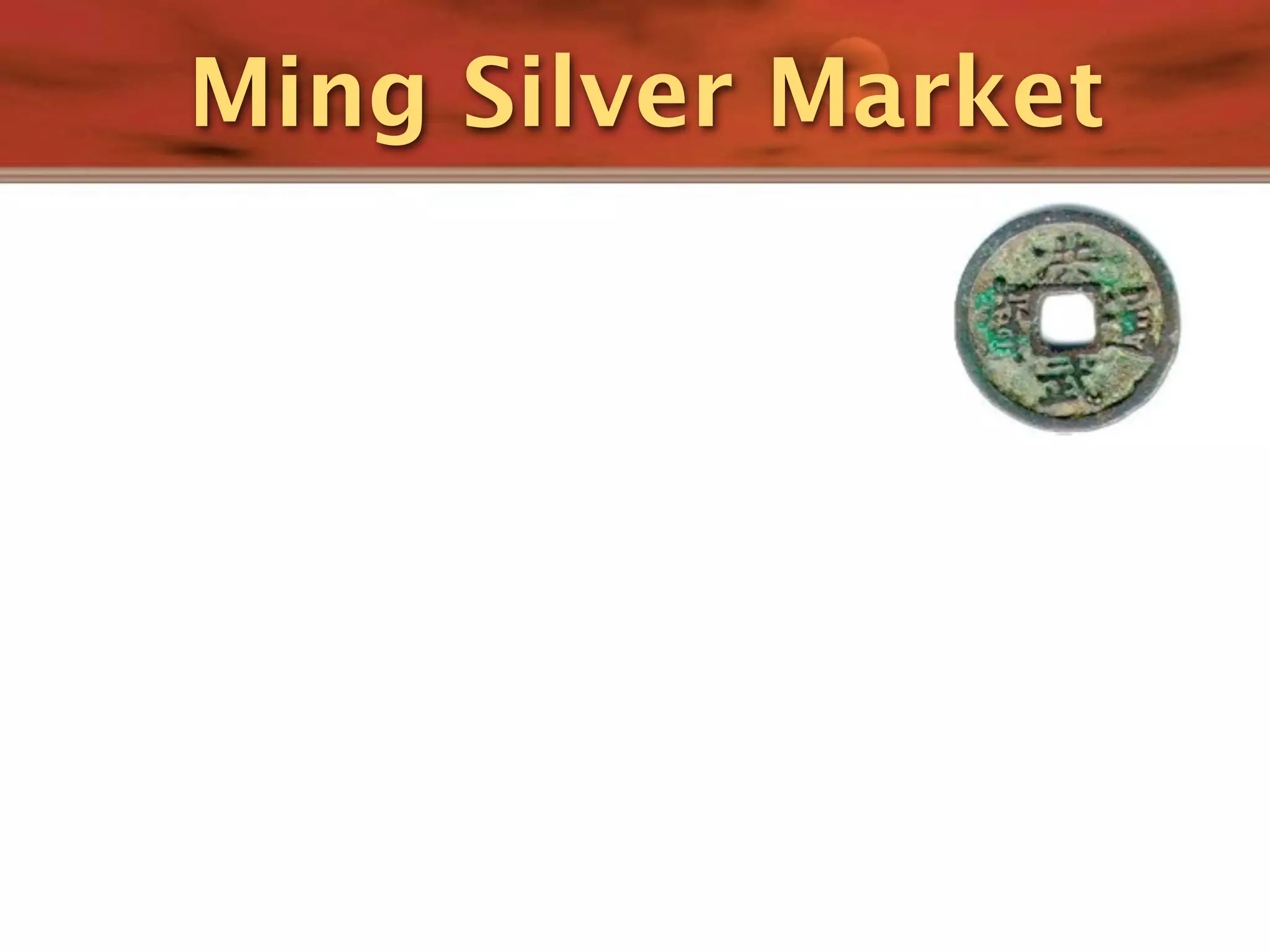

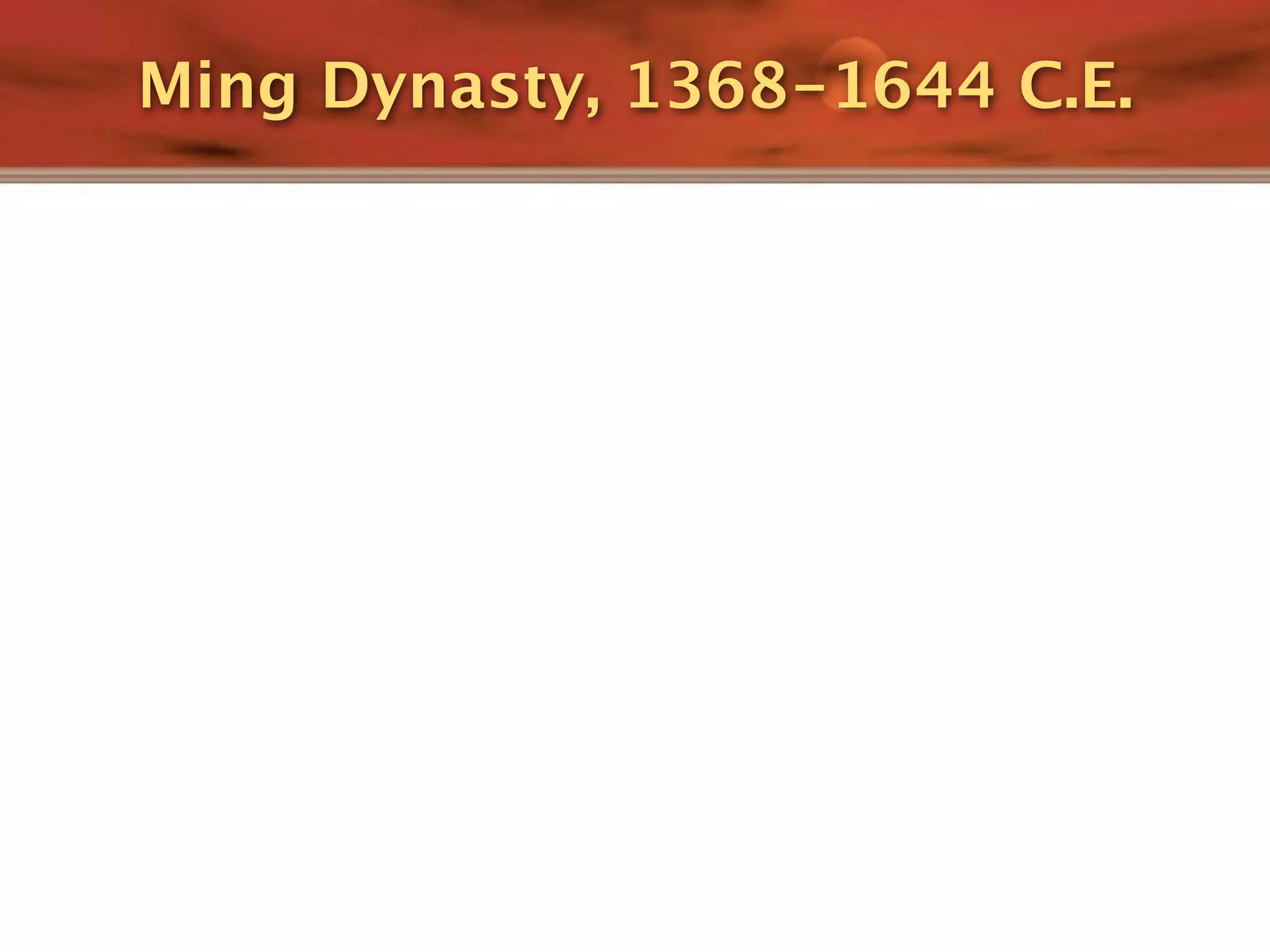
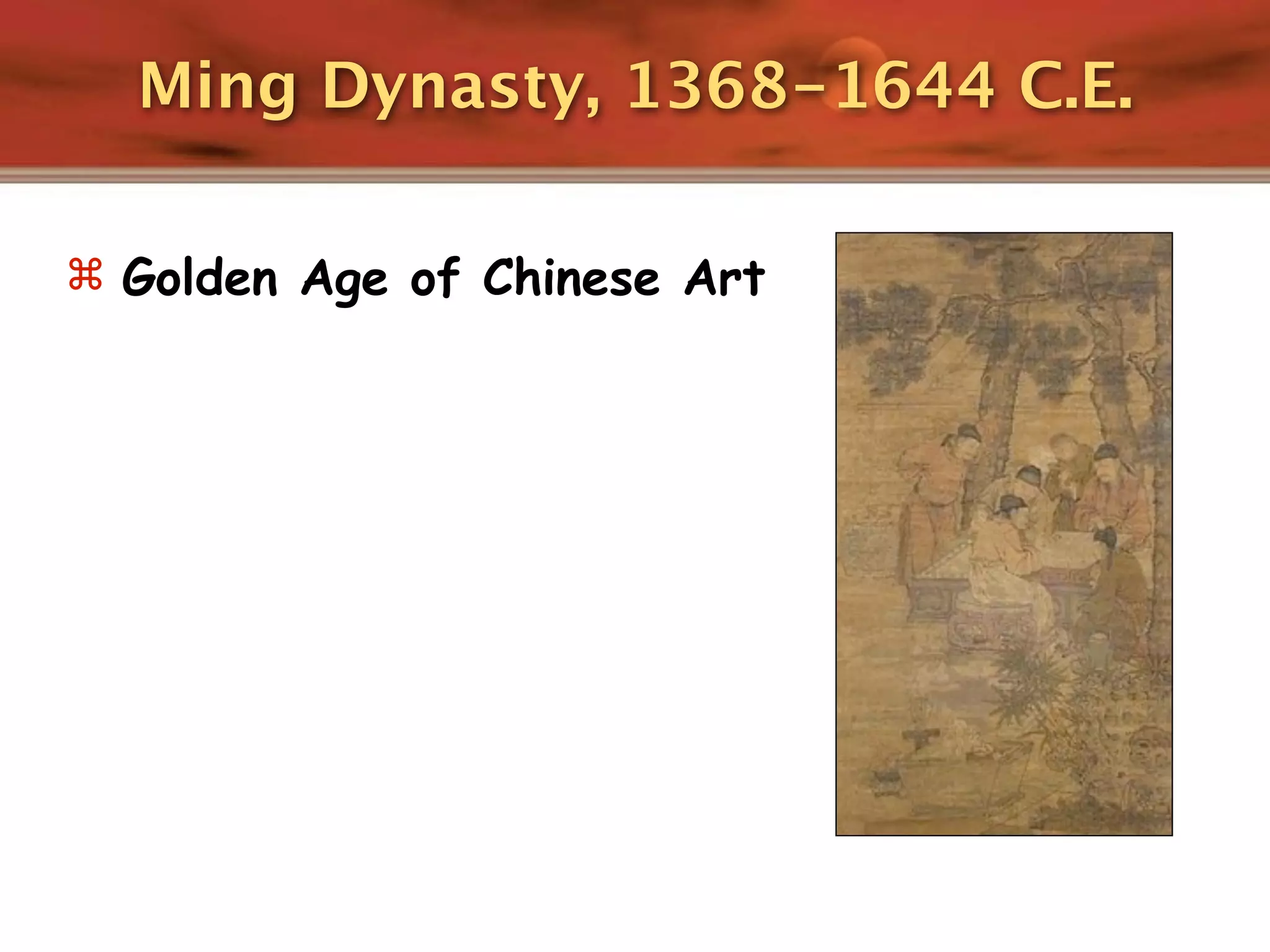
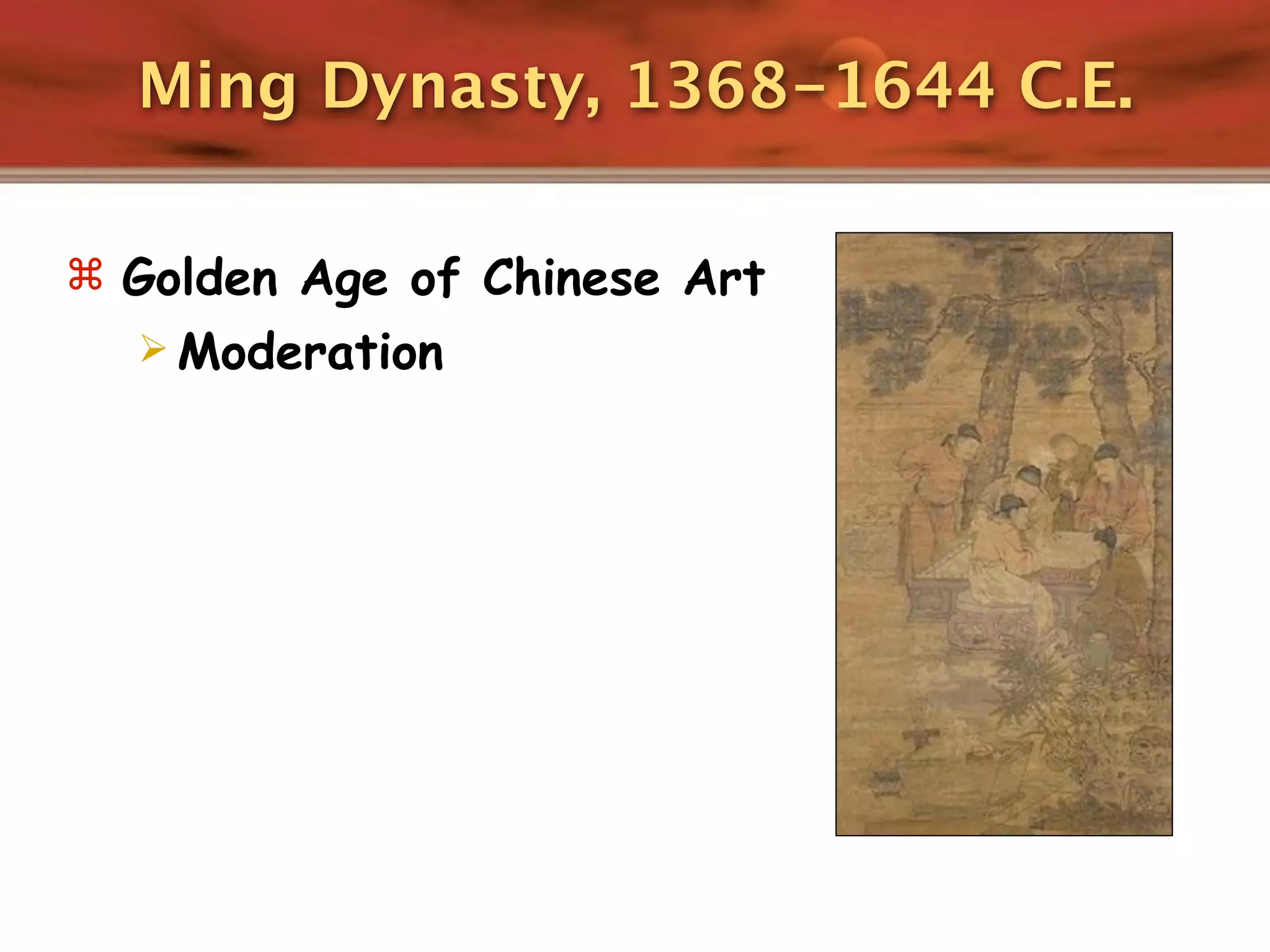
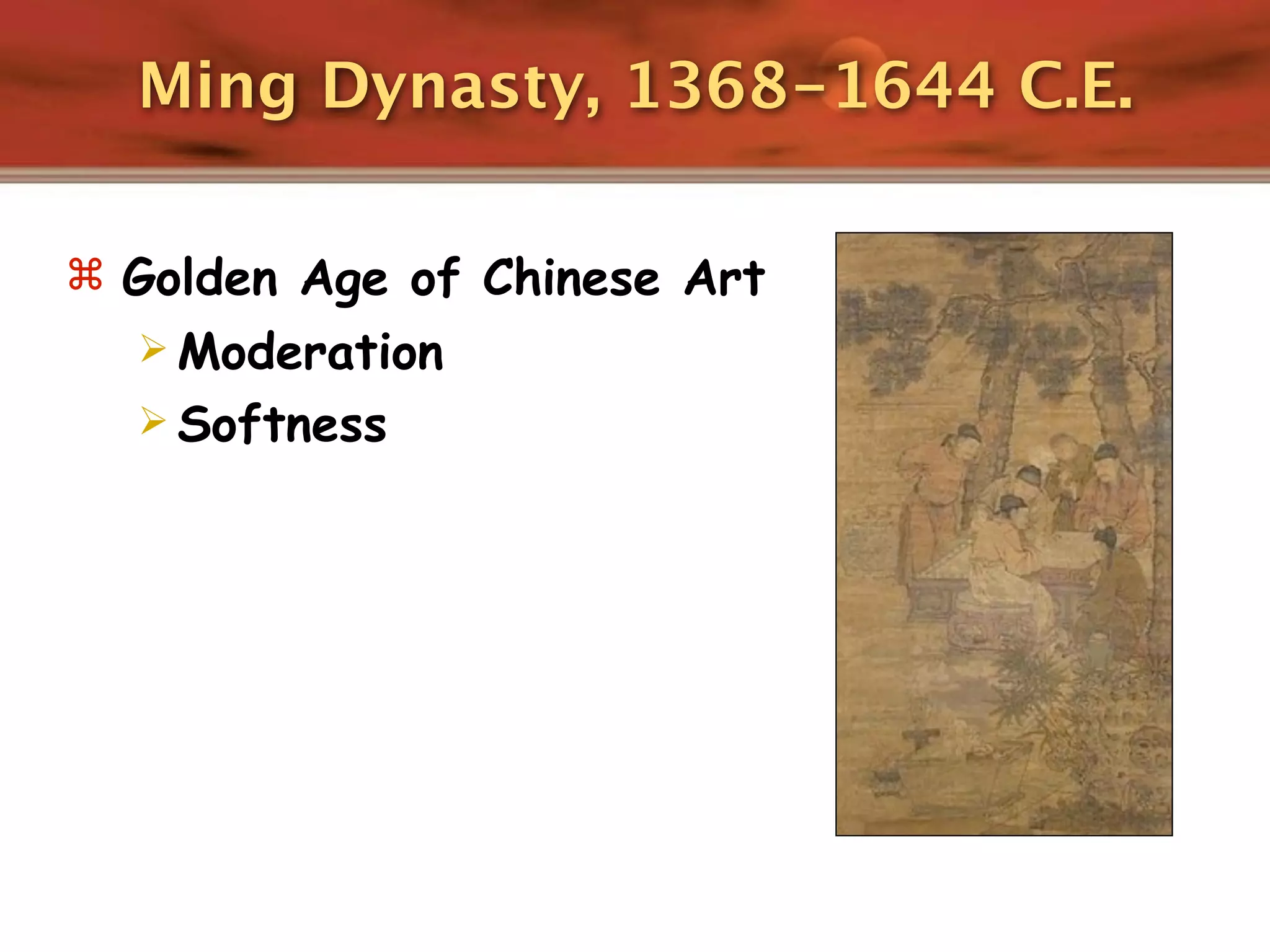

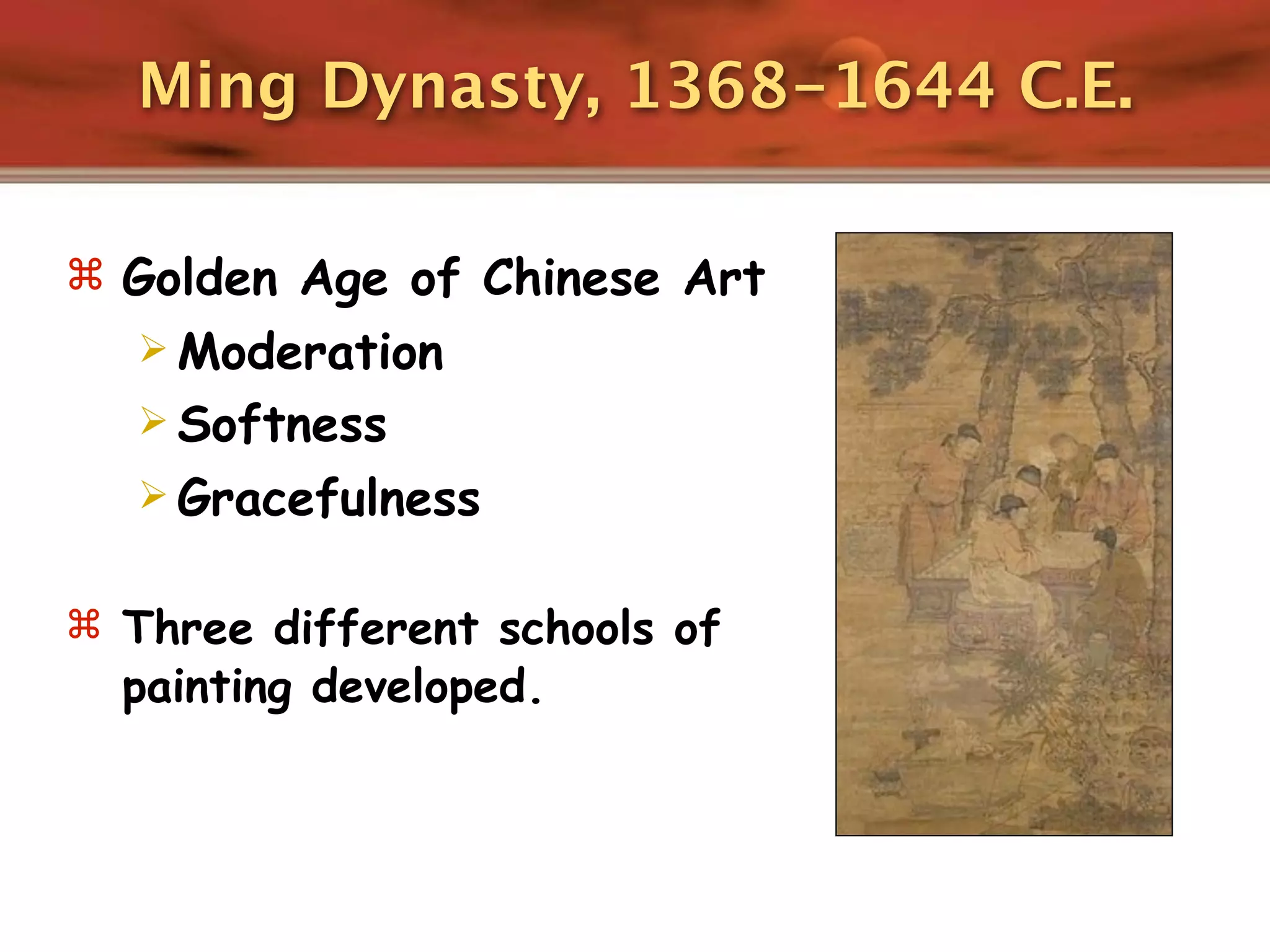
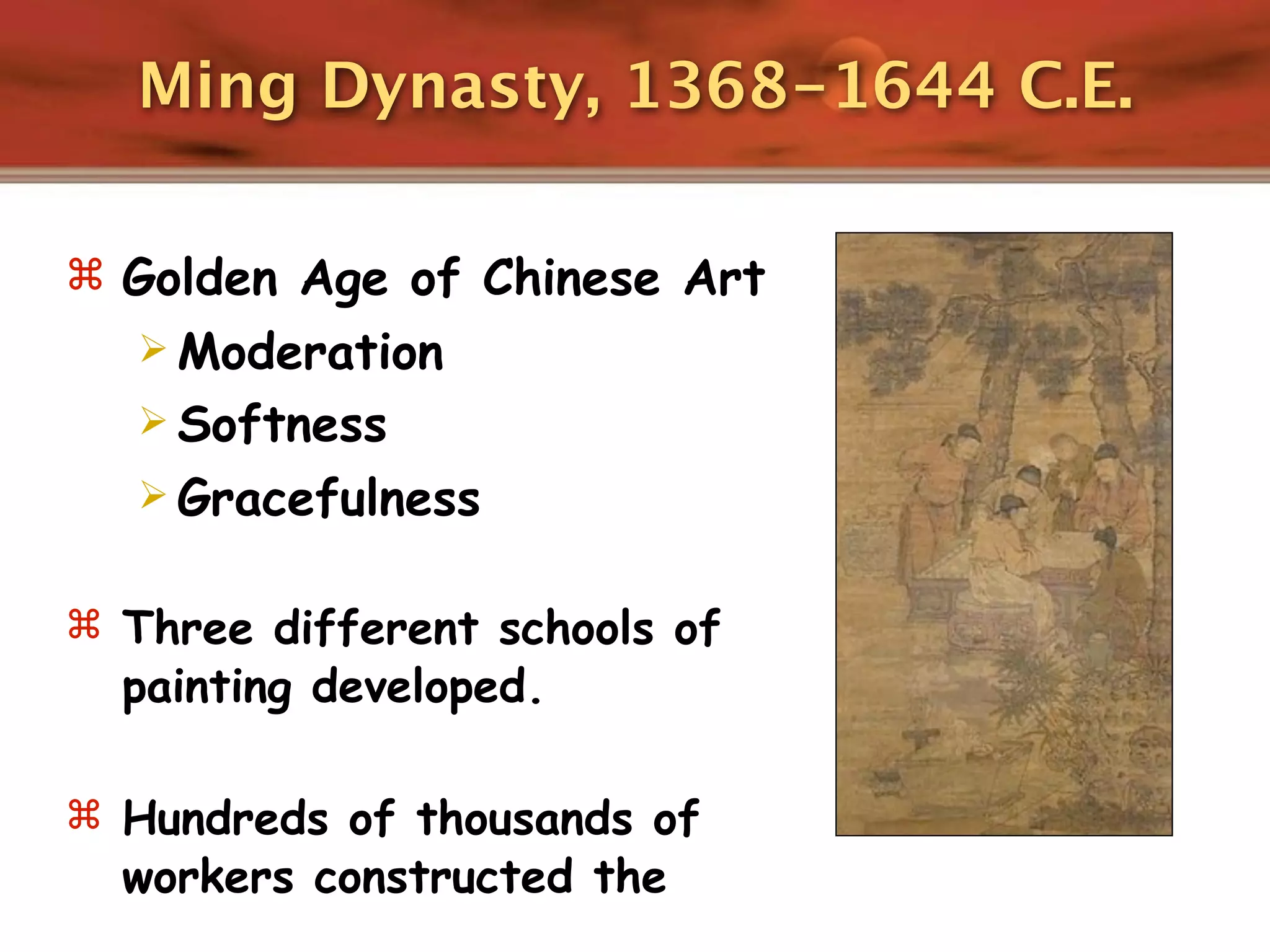
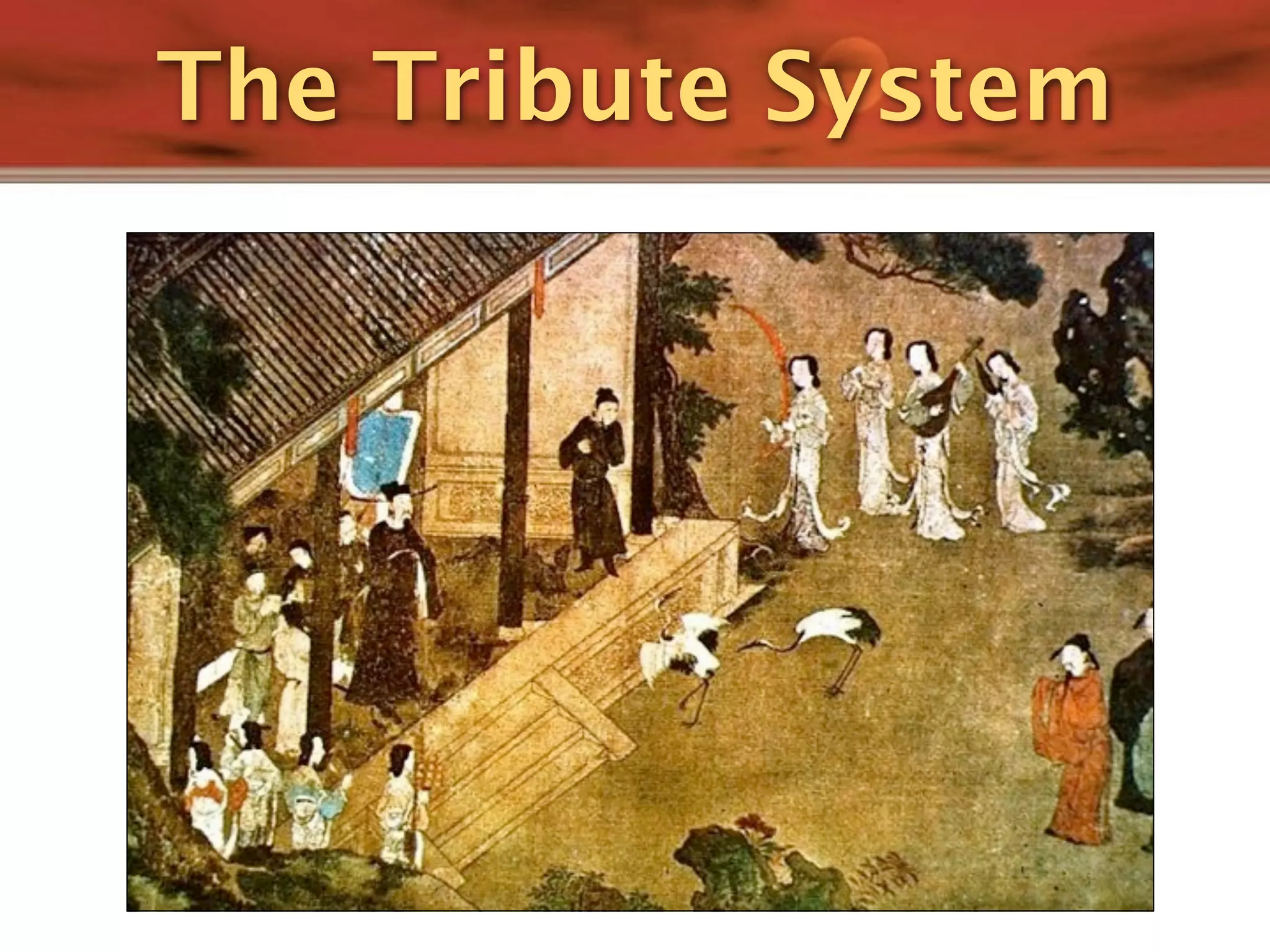

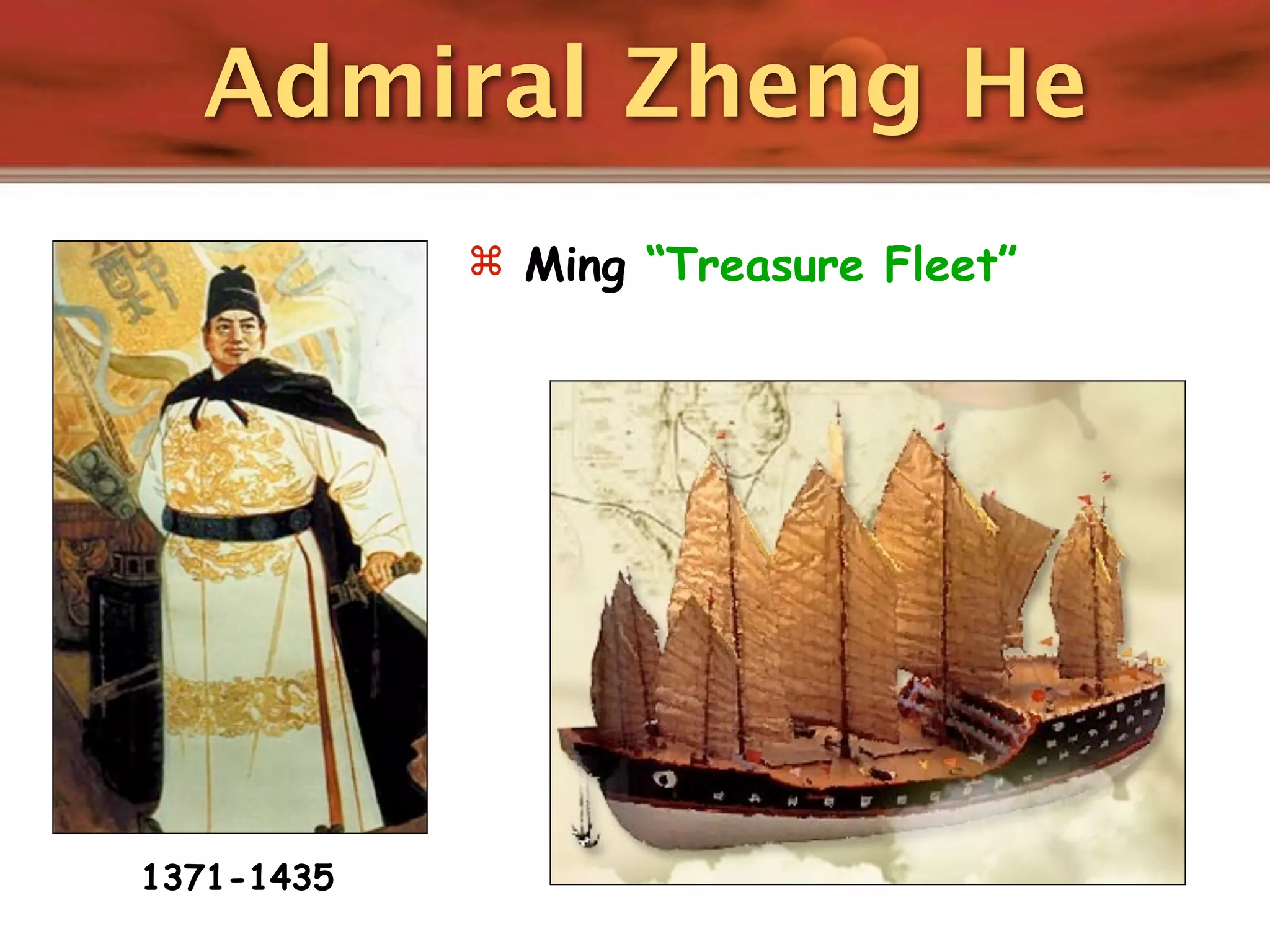

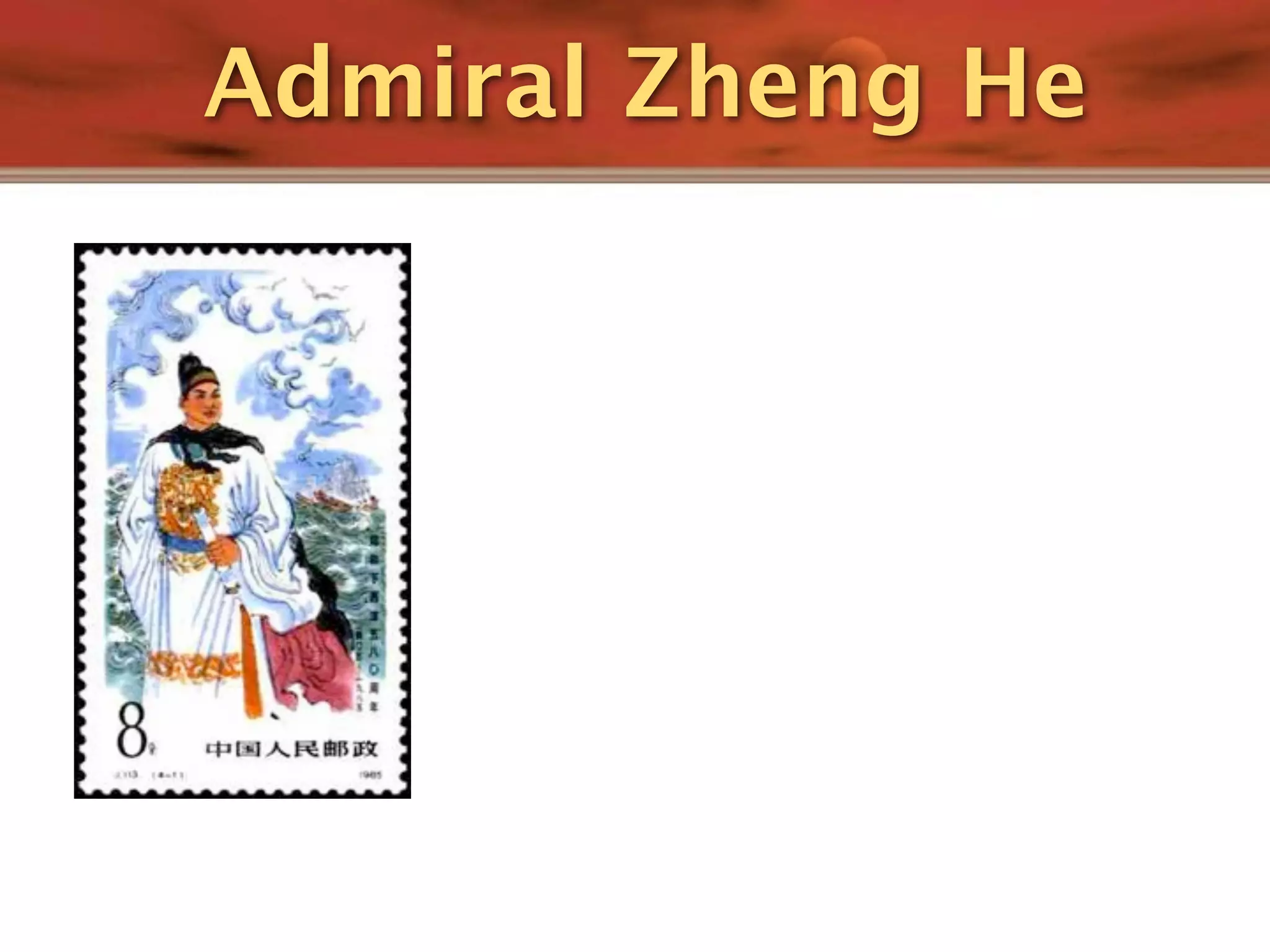
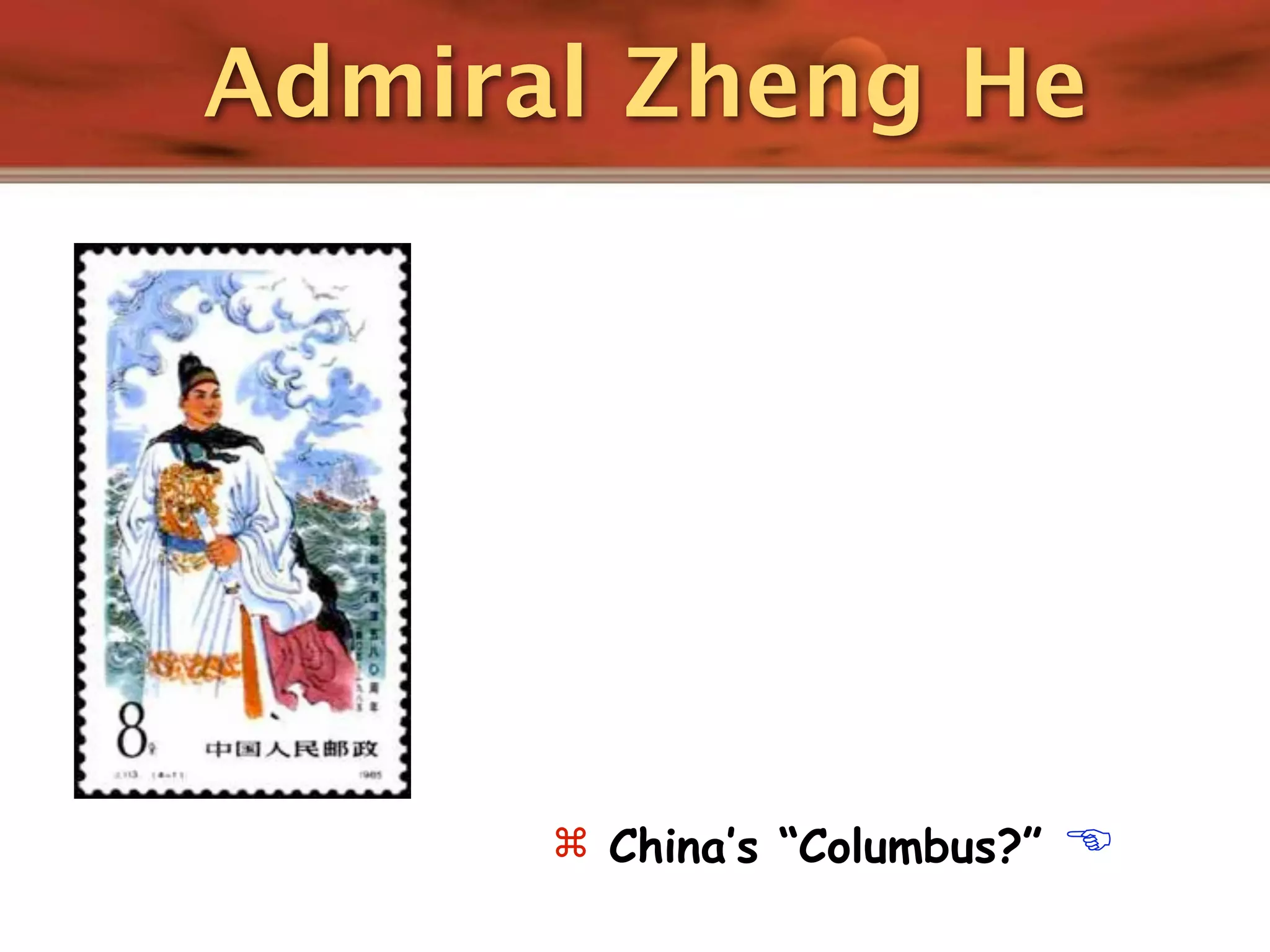
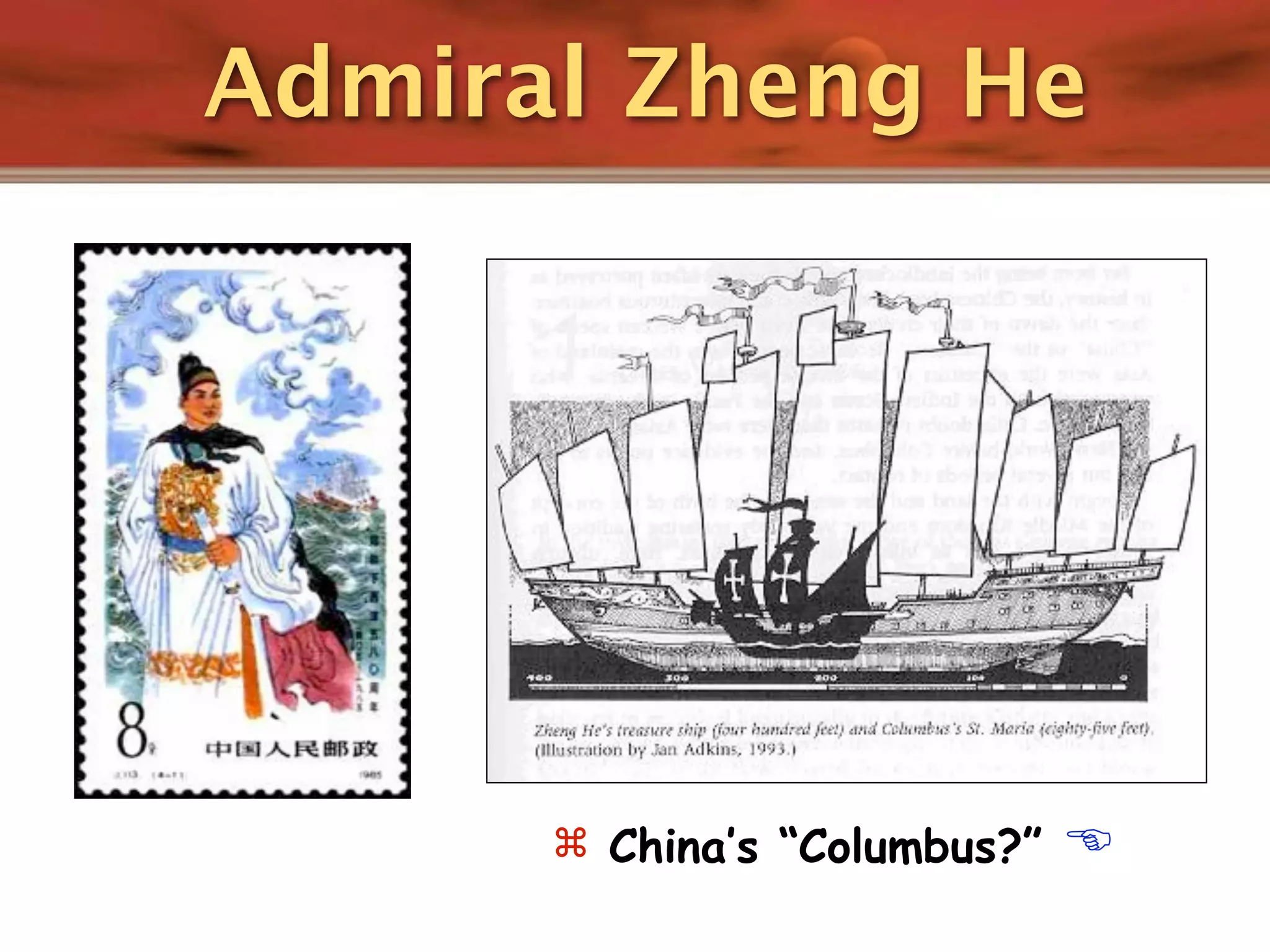
![Admiral Zheng He’s
First Voyage: 1405-1407 [62 ships; 27,800 men].
Second Voyage: 1407-1409 [Ho didn’t go on this trip].
Third Voyage: 1409-1411 [48 ships; 30,000 men].
Fourth Voyage: 1413-1415 [63 ships; 28,500 men].
Fifth Voyage: 1417-1419
Sixth Voyage: 1421-1422
Emperor Zhu Gaozhi cancelled future trips and ordered ship builders
and sailors to stop work.
Seventh Voyage: 1431-1433
Emperor Zhu Zhanji resumed the voyages in 1430 to restore
peaceful relations with Malacca & Siam
100 ships and 27,500 men; Cheng Ho died on the return trip.](https://image.slidesharecdn.com/qintoming-111014231542-phpapp02/75/Qinto-ming-148-2048.jpg)
